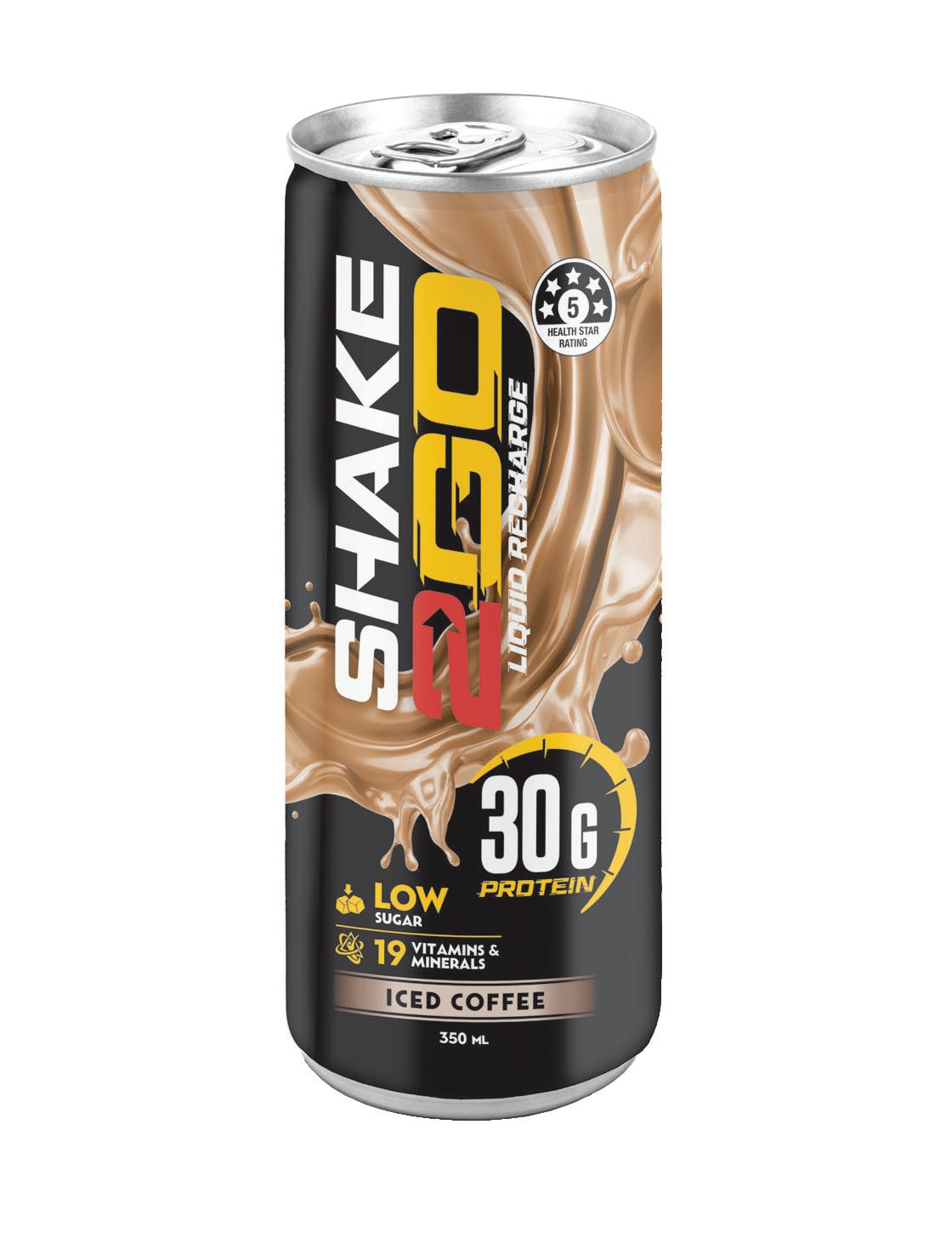





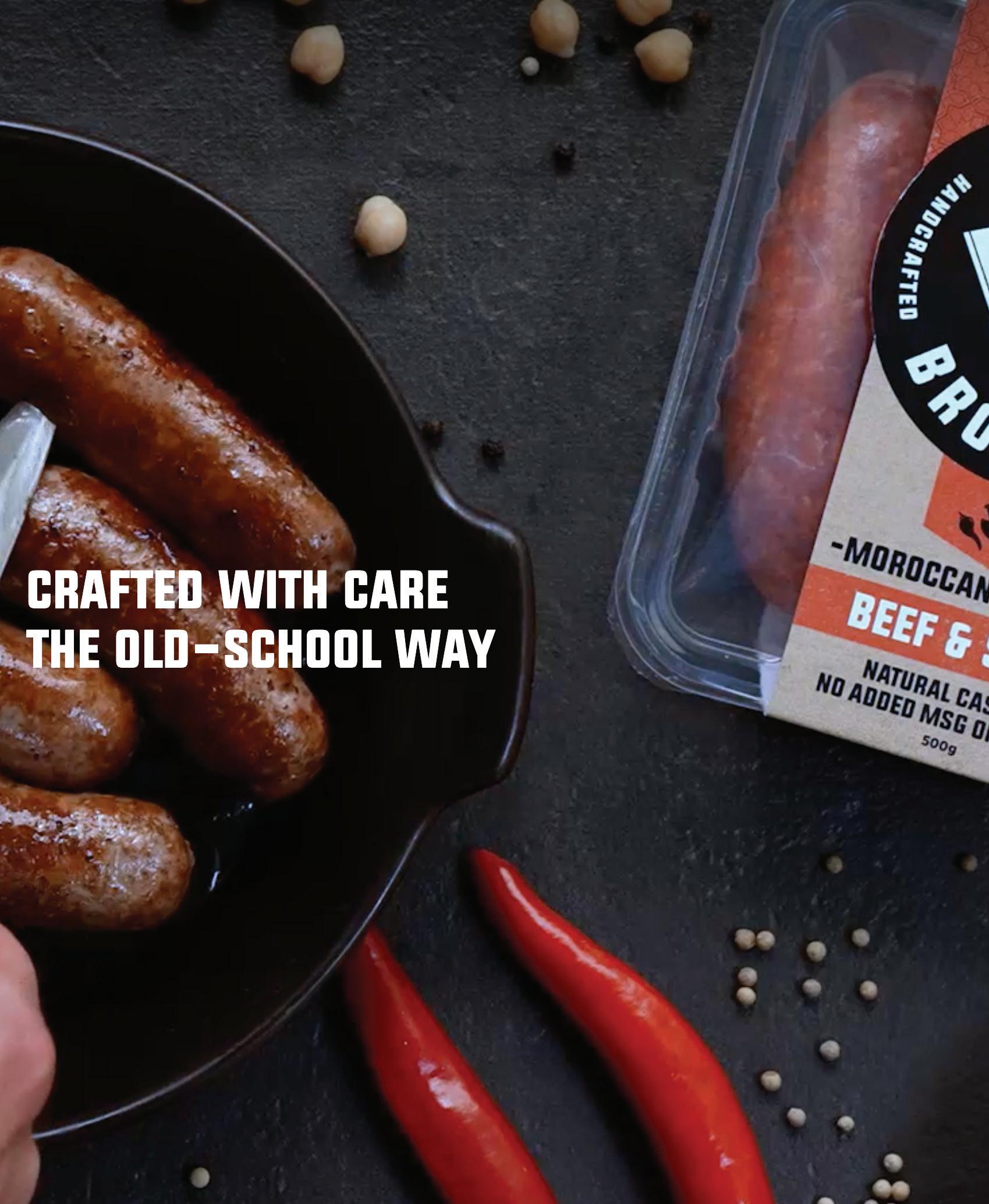
beardbrothers.co.nz
@beardbrothersnz









beardbrothers.co.nz
@beardbrothersnz

The launch of Inspire+ took place at the ANZ Centre in Auckland, bringing together a vibrant mix of food and beverage entrepreneurs, emerging brand owners, and artisan producers from across the sector.
Designed to spark ideas and accelerate growth, the afternoon was sponsored by RewardPay and featured insights from industry professionals, including Jen Rolfe (Rainger & Rolfe), Deane Hubball (Focus Insights), Sam Borgfeldt (Beverage & Food Gurus), and Deva Dhar (Oh Bubbles and Dhar Consultancy). The speakers shared practical strategies on digital marketing, data-led pitching, cost-effective reformulation, and building resilience in an ever-changing market.
“For New Zealand to thrive economically and socially, we really need growth. It gave me
real hope and positivity seeing such ambitious, motivated business owners,” said Jen Rolfe.
“Inspire+ was a fantastic opportunity to connect with like-minded food and beverage brands committed to growth,” said Deane Hubball.
"I always enjoy any opportunity to connect with small FMCG businesses. While every business is unique and has its own challenges, there are also many businesses facing similar challenges, and sharing experiences with each other in a face-to-face forum is still a great way to fast-track learning," added Sam Borgfeldt.
"The energy at Inspire+ was fantastic. It was clear that everyone in the room was hungry to learn, connect, and grow. These kinds of events are so valuable for emerging brands, not just for the insights, but for the sense of community,” said Deva Dhar.
Inspire+ founder Tania Walters said the event reflected the energy and potential that exists within the sector.
“We launched Inspire+ to give smaller brands a space to grow, connect, and be supported. Running a business can be incredibly lonely, but events like this remind us that you don’t have to do it alone. The energy in the room showed just how powerful it is when driven people come together to share ideas, build relationships, and back each other,” said Tania.
The Inspire+ initiative has been made possible in part through funds raised at the Peter Mitchell Memorial Golf Day. Peter, a long-time publisher and passionate supporter of the grocery and FMCG industries, was committed to helping emerging food and beverage businesses succeed. Tania said he would have been thrilled to see the turnout.
“Peter believed deeply in giving smaller brands the chance to be heard. It’s incredibly meaningful that the funds raised in his name are now providing the foundation for this community.”
Membership is open now for those ready to be part of the journey.

Caitlan Mitchell | Editor

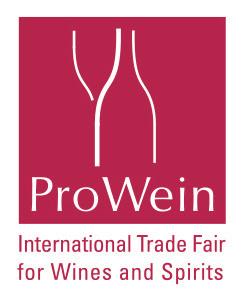














PUBLISHER Tania Walters
GENERAL MANAGER Kieran Mitchell
EDITORIAL DIRECTOR Sarah Mitchell
EDITOR-IN-CHIEF Caitlan Mitchell
CONTENT MANAGERS Caroline Boe, Daniel Rogers
EDITORIAL ASSOCIATES Sam Francks, Jenelle Sequeira
SENIOR DESIGNER Raymund Sarmiento
GRAPHIC DESIGNER Raymund Santos

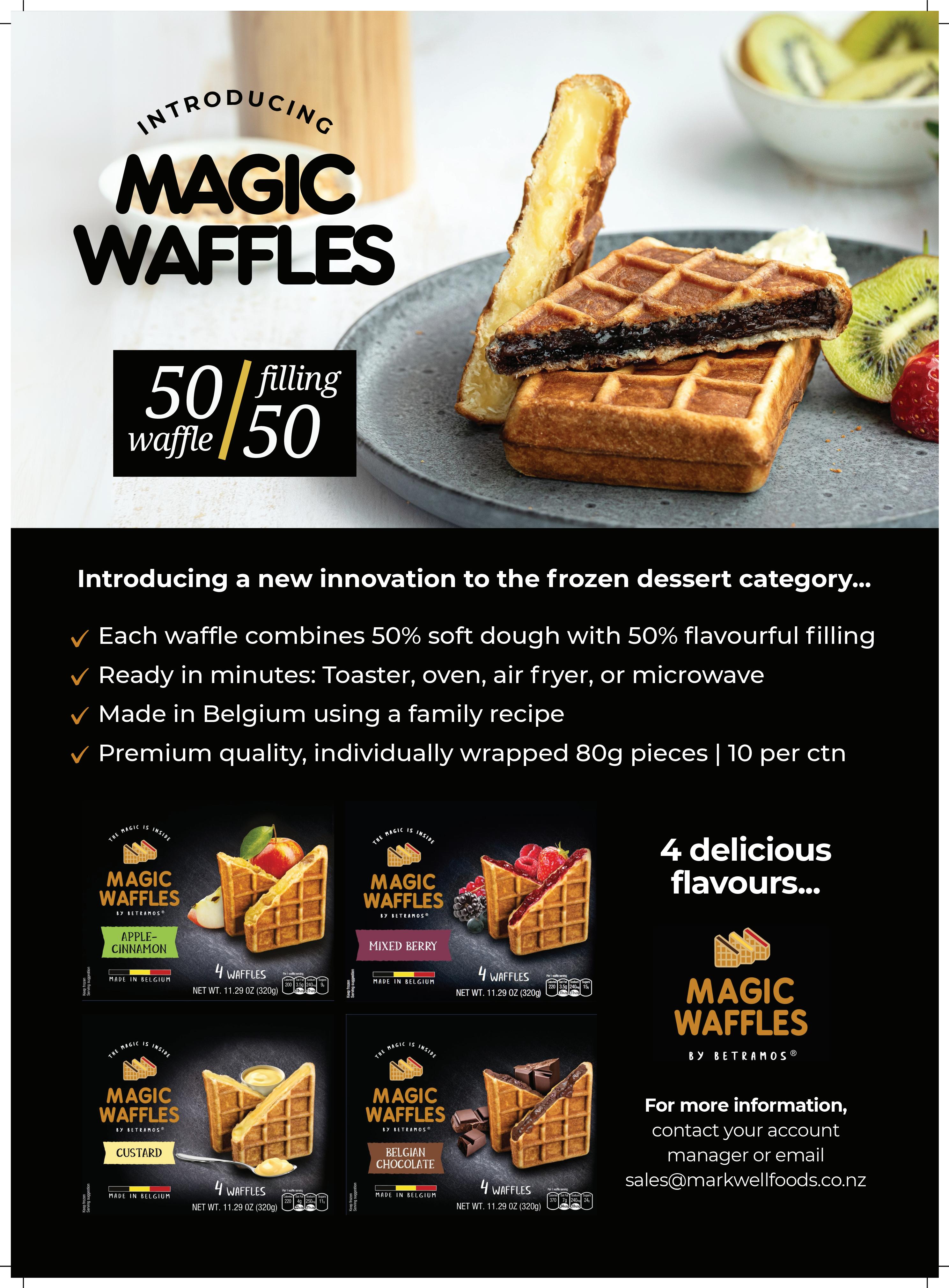

The combination of the Fonterra and Bega Group assets in Australia would lead to greater efficiencies and enhanced outcomes.

Australian-owned over-the-counter (OTC) health business Key Pharmaceuticals is marking its 40th anniversary this year.

Woolworths NZ was honoured to have the Hon Paul Goldsmith virtually discuss the Government’s work to address retail crime.

PAK’nSAVE and New World have been named among New Zealand’s most reputable brands in the 2025 Kantar Corporate Reputation Index.

The Overseas Investment (National Interest Test and Other Matters) Amendment Bill has been introduced to the House.

Zespri’s indicative forecast for the 2025/26 season has the kiwifruit marketer on track to deliver strong value to growers in another record crop year.






The Foodstuffs grocery co-ops stated that global prices for dairy and meat continue to drive food price inflation in New Zealand

Rolleston and the Selwyn District are set to welcome the South Island’s largest new supermarket.

Halal Cooperation Agreement Signed With Indonesia
The Government has signed a new halal cooperation arrangement in Jakarta.

As New Zealand settles into the colder months, global insights reveal emerging patterns that are likely to influence what Kiwis shop for, cook with, and consider when purchasing fresh produce.


Forty years ago, a bold new supermarket opened its doors in the far north, and Kiwi grocery shopping changed forever.
Woolworths leads Australia with a Sustainability Perceptions Value (SPV) of AUD 978 million.
The Alliance Marketing team showed its support for Breast Cancer Awareness Month with a Pink Ribbon Morning Tea in both its Auckland and Christchurch offices, as part of the Quarterly Sales Cycle Meetings.
On behalf of the team, Alliance supported with a donation of its BC Protein Bars to the Pink Ribbon Breakfasts held on the 22nd of May and to the Breast Care Nurses Conference.
So many people have been affected by cancer within their family or friend groups, and the Alliance team were very keen to get behind this very worthy cause and show support.








As a mission-led company, Forty Thieves aims to 'fuel everyday and epic adventures'. The brand believes that heading outdoors and overcoming challenges is what makes life worth living. This has helped define its values, which are woven into all decision-making.
“Not only do we ensure that our products are the best fuel for these adventures, but our deep respect for nature means we choose recyclable and recycled materials to reduce our impact on the environment,” said Shyr Godfrey, coowner of Forty Thieves.
The brand recently attended the ‘Taste of New Zealand’ fair in Singapore, which enabled direct engagement with local shoppers and offered real-time feedback on the Forty Thieves range.
Attending the event provided networking opportunities with Cold Storage's Category Managers, General Manager, NZTE, the Trade Commissioner, and several other
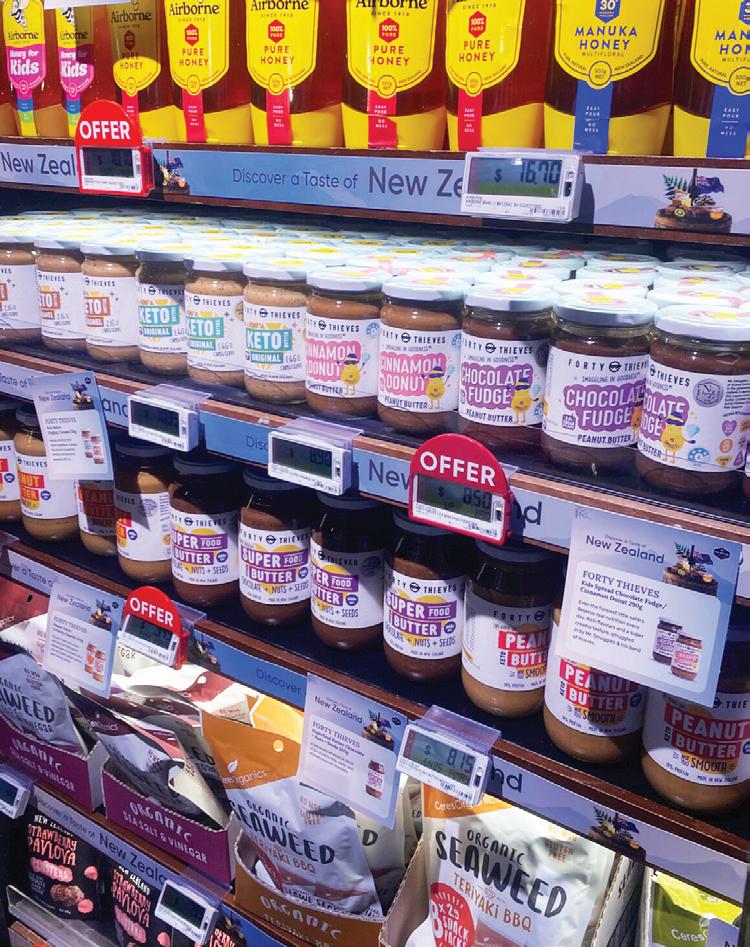

New Zealand manufacturers who were also going through a similar journey.
Being part of a New Zealand-focused event strengthened the brand’s prominence, quality and natural ingredients, enhancing trust and visibility in a competitive market.
“We made a number of store visits to Cold Storage, Forty Thieves' largest retailer in Singapore. It's a well-planned and designed supermarket chain offering highquality produce and premium groceries,” said Godfrey.
“Unlike New Zealand, where a lot of food is made locally, approximately 90 percent of food in Singapore is imported from 150+ countries. This means there is a wide variety of different brands and products on offer, and lots of competition.”
Forty Thieves products are also available in various online stores in Singapore, including RedMart and Shopee. Godfrey mentioned that the brand was experiencing up to 40 percent growth through these channels.
Visiting Singapore gave Godfrey a better understanding of the country’s diverse population and their specific shopping habits, including price comparing online before purchasing.
Due to the large number of brands and products on offer, Godfrey shared her thoughts on the importance of packaging design and call-outs.
“Our playful visual branding has helped in getting us a spot on premium supermarket shelves like Cold Storage as well as attracting customers to give them a try.”
She added that while plastic remains the
dominant packaging material in Singapore due to its cost and convenience, offering Forty Thieves in sustainable options like glass is well-suited to Cold Storage shoppers with evolving values towards more sustainable products.
In addition to its packaging choices, Forty Thieves measures and offsets its carbon emissions, supporting the restoration of native forests. As Singaporean shoppers become more conscious of their environmental impact, the brand wants to ensure that its products meet their expectations, without compromising on value or flavour.
Based on Auckland’s Hibiscus Coast, the Forty Thieves factory produces quality yet affordable products that are both healthy and delicious. Across roasting, milling, mixing, bottling, and labelling, their staff perform a range of checks throughout the production process so that every product is consistently excellent.
Godfrey said the quality of their products comes from ingredient selection, roast, texture and getting the ratios of each ingredient just right.
“Whether it be a touch of pink salt in our Peanut Butter Crunchy or the right amount of crunchy seeds, herbs and black pepper in the SuperFood Butter, this is what makes the difference,” added Godfrey.
“We’re experiencing a great level of growth both locally and overseas. The next few years will see Forty Thieves expanding production capabilities, closing distribution gaps and continuing to show up for our customers so they can fuel their everyday and epic adventures.” n


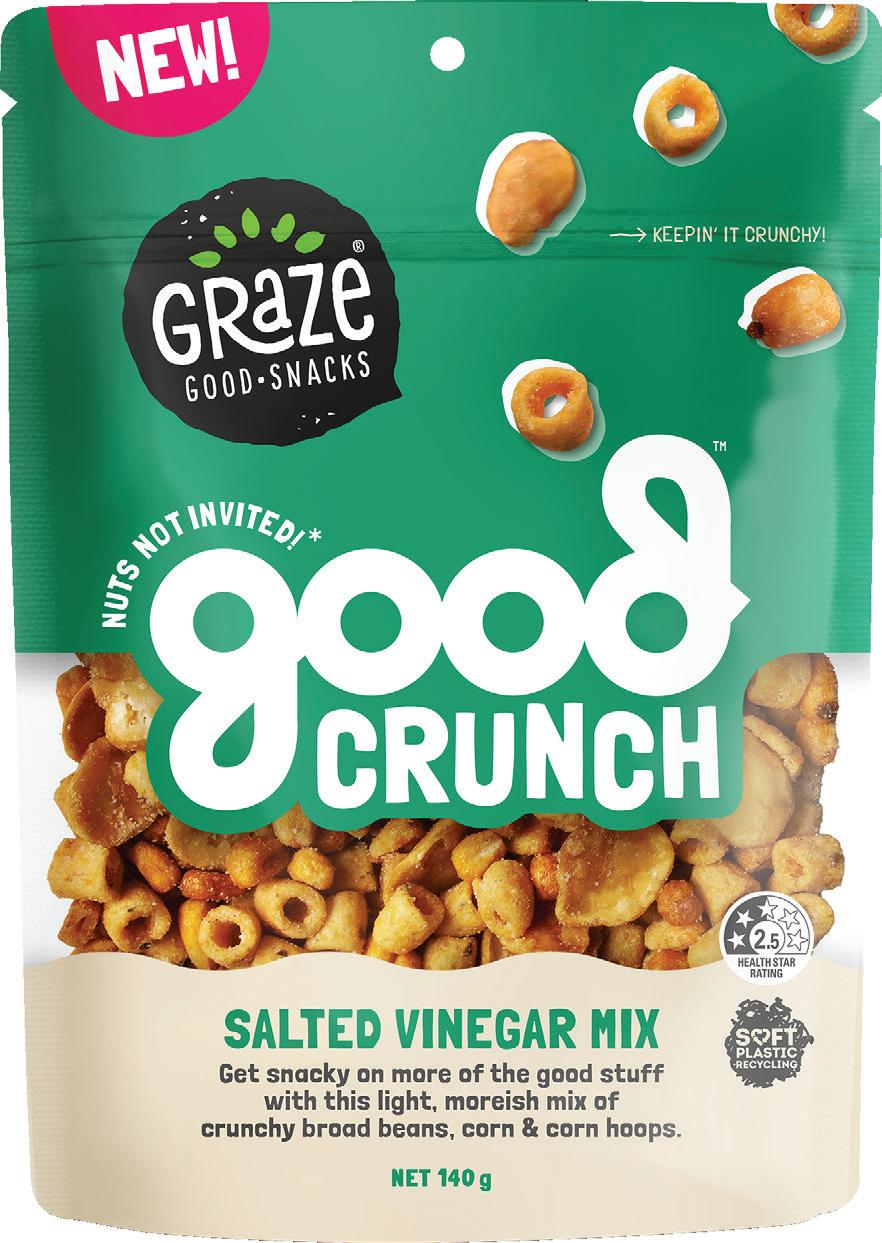


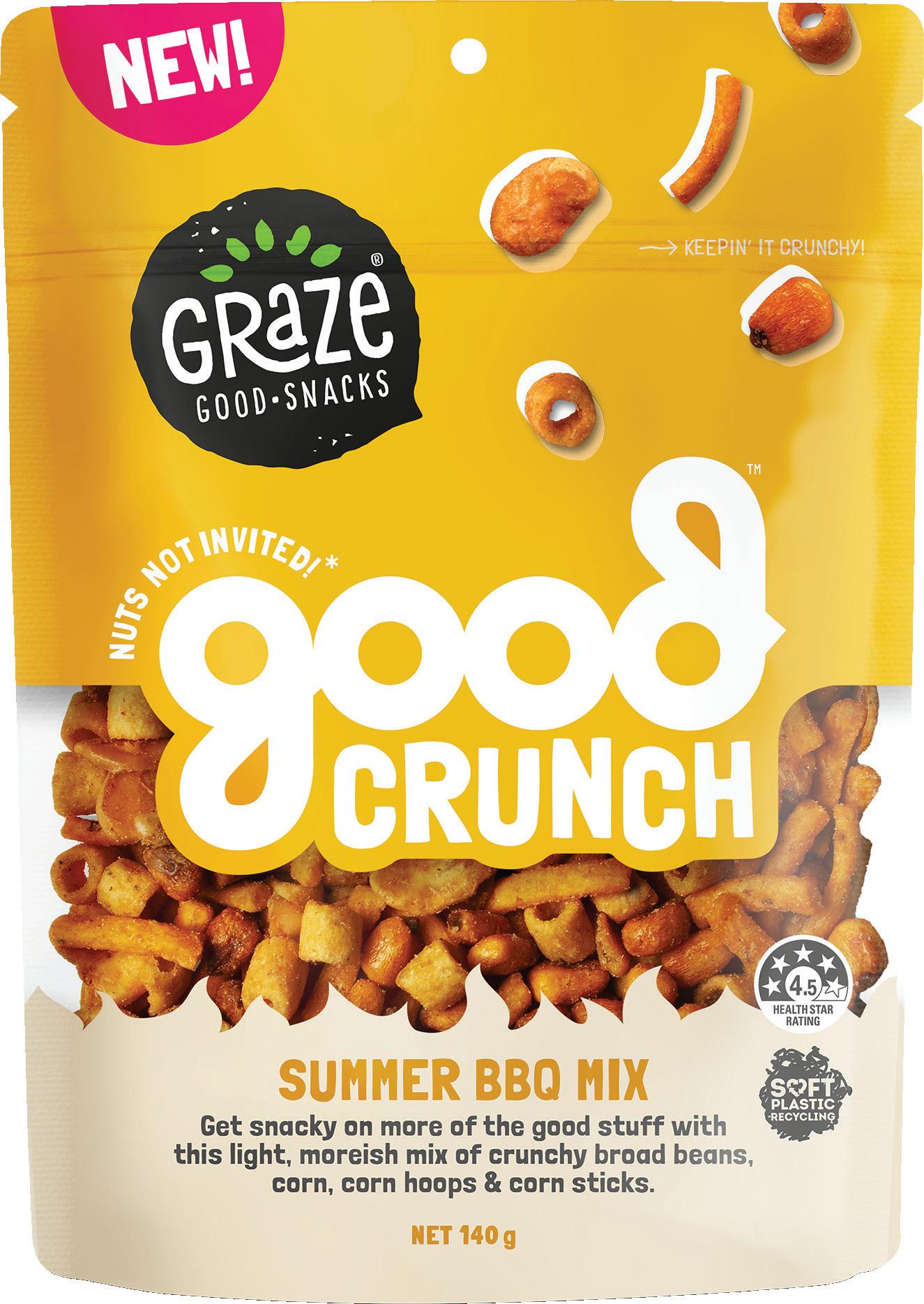

40 -58% less fat
A moreish mix of crispy corn, broad beans and fun corn hoops or strips they’re a source of fibre with than regular potato chips. They’re good!
Exclusively available at Foodstuffs.
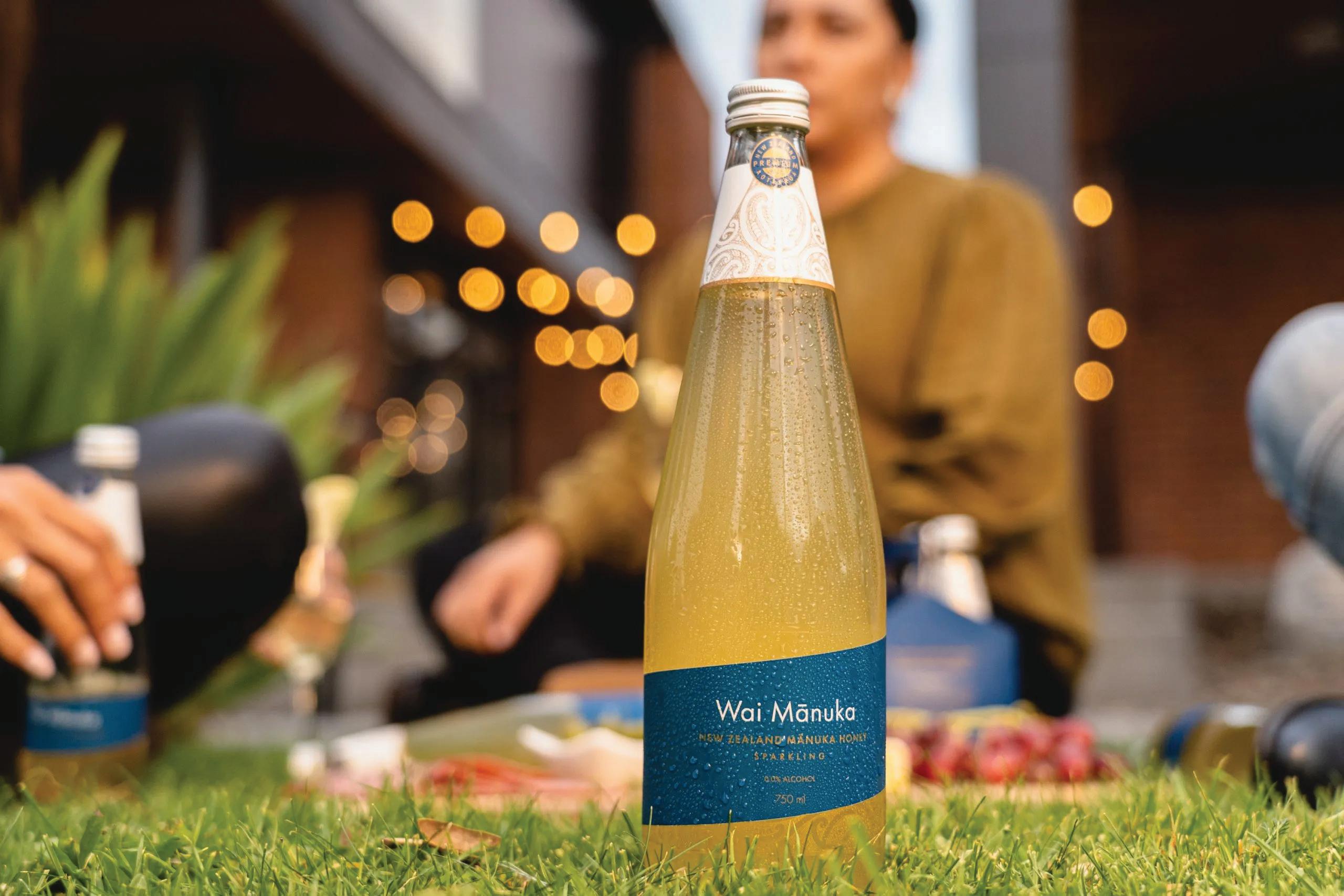

New Zealand is home to a thriving food and fibre sector, with businesses sending their products to all corners of the world every day.
The sector makes up 80.9 percent of New Zealand’s total merchandise exports and reaches over 200 marketplaces around the world. From our gates to their plates, Exporter Help at the Ministry for Primary Industries is dedicated to supporting businesses get Kiwi products overseas.
Doubling the value of New Zealand’s exports by 2034
The Government’s goal is to double the value of New Zealand’s exports by 2034. The Ministry for Primary Industries have an important role to play in supporting the Government’s goals to drive growth.
Maintaining an effective and trusted food safety system is critical to achieving this goal and enabling the sector to successfully access global markets. Food safety is a key part of the wider New Zealand food story, and one of our main selling points to overseas consumers is our robust and reliable food safety system.
MPI's Exporter Help
The free Exporter Help service delivers one-to-one advice, develops educational resources such as guides and webinars, and works collaboratively within the Ministry for Primary Industries to share insights and minimise exporter challenges.
Exporter Help supports small and medium-sized businesses on their export journey. The team helps exporters and those working with exporters at all stages of their journey, from those thinking about exporting to established exporters needing
clarification on requirements.
Much of the food and fibre export journey depends on what is being produced, and which country it is going to. Sometimes the rules can be complex and change regularly. Understanding export requirements can be confusing, and providing businesses with accurate information makes it easier for them to export efficiently and avoid costly errors.
Wai MAnuka’s export success
Wai Mānuka have been producing a premium non-alcoholic beverage using Mānuka Honey, lemon juice and sparkling water here in New Zealand since 2020. When they were preparing to send their beverage to various overseas markets, including the USA, Japan, China and Australia, they had some questions about meeting the specific requirements for transfer documents.
Exporter Help provided Wai Mānuka with the support they needed to make sense of the regulatory environment for beverages, providing clear explanations of requirements for each country. Thanks to the team at Exporter Help, Wai Mānuka were confident that they were doing the right thing and are successfully exporting their products from New Zealand.
Get in touch
For support navigating your exporting requirements, contact the Exporter Help team on exporterhelp@mpi.govt.nz, call 0800 674 490, or visit www.mpi.govt.nz/ export/get-help-with-exporting/







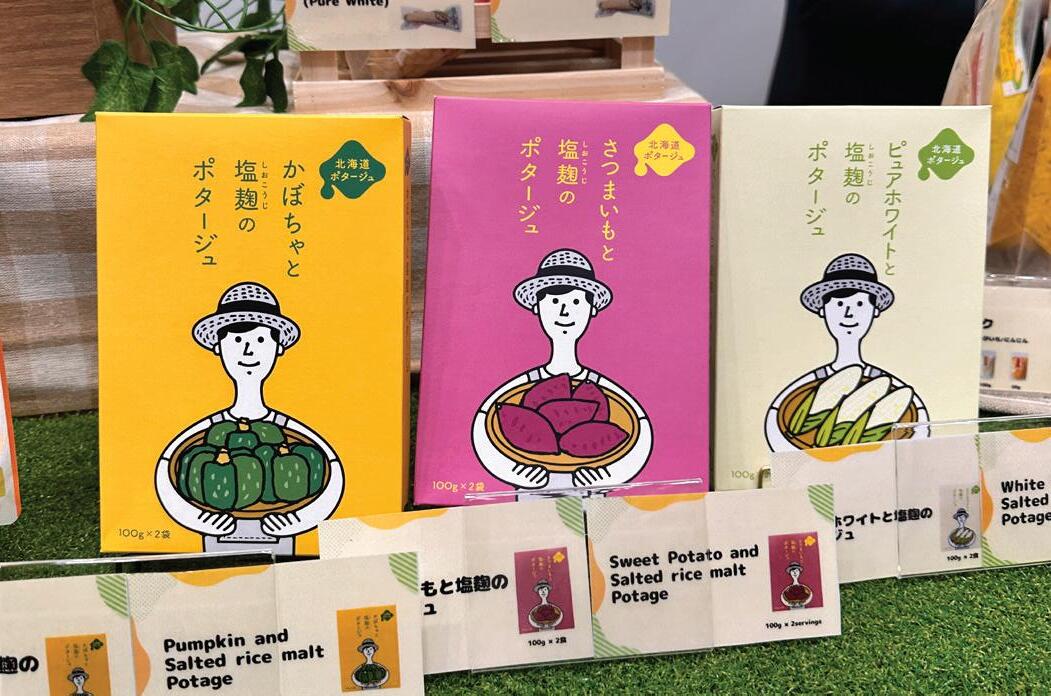

If Fine Food New Zealand has left you inspired to look further afield, then Japan’s Food Export Fair should be next on your radar.
Held in Tokyo this summer, the event is a gateway to some of the most innovative, high-quality food and beverage products Japan has to offer. For buyers keen to expand their sourcing networks or tap into global flavour trends, this is a must-attend expo that blends business efficiency with exceptional product discovery.
Returning in 2025, Japan’s Food Export Fair Summer will bring together over 700 leading Japanese suppliers and 25,000 attendees from around the world. Running alongside JFEX and FoodLogiX, the expo offers a comprehensive view of Japan’s food and beverage capabilities, from heritage ingredients to emerging health-focused
products, delivered in a tightly curated and business-ready format.
More than 3,700 export-ready products will be on show, ranging from noodles, tofu and frozen meals to functional drinks, teas, sauces and sake. Confirmed exhibitors include Kairen Co., Ltd (ready-to-eat and prepackaged rice), Aseed Group (matcha and healthy drinks), Daikyo Foods Co., Ltd (processed soy products and frozen food), Misohan Co., Ltd (noodles and seasoning), and Izumi Matrix Co., Ltd (premium sake). This breadth reflects Japan’s continued focus on quality, innovation and global relevance.
To make the most of the experience, buyers can use an appointment system to pre-schedule meetings with exhibitors based
on product interests, ensuring time on the floor is efficient and targeted. A hosted buyers programme adds further value, offering selected visitors complimentary hotel accommodation, business matching support, networking access, guided exhibitor tours and VIP lounge entry.
Whether you’re looking to strengthen supplier relationships, find new product lines or get ahead of flavour trends, Japan’s Food Export Fair is a smart next step on the international expo circuit.
Visitor registration is now open. To explore the full exhibitor list, apply for the hosted buyers programme or schedule appointments in advance, visit or go to https://www.jfex.jp/jpfood/en-gb.html. n
July 9 (Wed) - 11 (Fri), 2025
Tokyo Big Sight, Japan








Japan is a renowned nation for its vibrant health, which can be attributed to its wellness culture and a tradition of nutrient-rich cuisine.
At the heart of this concept is a collection of ‘superfoods’ - natural ingredients which are minimally processed, offering both rich flavour and health-boosting benefits. Japanese superfoods have captivated both nutritionists and food enthusiasts worldwide.
Fermented foods have a deep-rooted history in Japanese culture. With a growing interest in healthy eating, there has been an increase in the consumption of fermented foods, particularly as awareness of the gut microbiome’s importance has risen.
Miso: A probiotic powerhouse for the gut
Best known for its deep umami flavour and essential role in miso soup, miso is a fermented soybean paste made with koji and salt. It is a nutritional powerhouse that aids digestion with its probiotic components.
Natto: A fermented ally for heart health
Natto is another fermented soybean dish, known for its strong aroma, sticky texture, and bold flavour. Vitamin K2 is a key property of natto, which is a critical nutrient for bone mineralisation to reduce the risk of osteoporosis.
A special component of natto, the ‘nattokinase’, is an enzyme that supports cardiovascular health by improving blood circulation.
Matcha: A global superfood blending tradition and innovation
Matcha is a finely ground green tea powder that has health advantages such as metabolism boost, weight management, cardiovascular support, cognitive enhancement, and stress reduction. However, excessive intake may lead to side effects due to caffeine.
Shiitake Mushrooms: Nutrient-rich fungi
Regular consumption of shiitake mushrooms can support cardiovascular health and enhance immunity. They contain lentinan, which is known to boost the immune system, and are rich in B vitamins, vitamin D, and essential minerals.
Tofu: Versatile soy protein
Tofu is a soy-based product that serves as a primary source of protein in many vegetarian and vegan diets. It provides iron and calcium, supporting bone health and overall wellness. It is also low in calories and contains all nine essential amino acids, making it a complete protein.
Umeboshi: Pickled plums with potent properties
Traditionally, umeboshi are used as a digestive aid due to their antibacterial properties, which are believed to help
combat fatigue and nausea. It can help in stimulating saliva production due to its high acidity.
Collagen: Skin-boosting and joint-supporting powerhouse
Japanese collagen is commonly available in the form of hydrolysed collagen or collagen peptides, offering natural ways to improve skin, joint health, and overall wellbeing. It’s always recommended to consult a healthcare professional before beginning any new supplement regimen.
Collagen supplements may also aid in weight loss by reducing appetite. While the effectiveness of collagen supplements can vary between individuals, they offer a versatile and natural way to improve overall health. It’s always recommended to consult a healthcare professional before beginning any new supplement regimen.
Embracing these traditional and modern Japanese foods can significantly contribute to a balanced and nutritious diet.
RX Japan invites importers, wholesalers, and international buyers to experience the rich flavours and innovation of the country’s food exports while discovering new business opportunities. n
"JAPAN'S FOOD" EXPORT FAIR SUMMER will be held from the 9th to the 11th of July 2025, at Tokyo Big Sight.

Our mustard products are well known in Japan, and we have a wide product lineup for retail and commercial use. Our production facilities are safe and secure, with a monthly production of 2 tons. We also have experience in exporting to other countries, and have business relationships with companies in the USA, EU, and Asia.
1. Manufacture and sale of Zunda products. We manufacture a variety of Japanese sweets and desserts using zunda as the main ingredient. This includes zunda mochi, zunda dango, zunda roll, zunda cheesecake, etc. These products are popular not only as local specialties but also nationwide. 2. Online Sales: We sell our products through our website and online shopping platforms. This allows consumers across the country to purchase Zunda products. 3. Wholesale of Zunda mochi and various types of dumplings: We wholesale our products to restaurants, supermarket wholesalers, etc.


Marui Bussan Co., Ltd. is headquartered in Miyazaki, Tomioka City, Gunma Prefecture, and is a company whose main business is the import and wholesale of food and beverages. Since its establishment in 1993, the company has supplied a wide range of products to the food and beverage industry, including
Taiwanese shaved ice, tapioca, frozen fruit sauce, fruit puree, Taiwanese tea leaves, whipped cream, and fresh warabi mochi. In recent years, the company has also focused on unique, highadded-value products, such as its original product "Chapresso®" and the traditional Taiwanese sweet "Fungui."




SSK FOODS CO., LTD. is one of the affiliated companies of SUZUYO GROUP. Our company was established over 90 years ago. We produce and sell mayonnaise, dressings, and beverages. We supply products of our SSK brand, and OEM products to wide range of retailers, food service, and food manufacturers in Japan. We are planning to expand businesses worldwide.


Our management policy is to "pursue the provision of products that are rooted in the community and can only be provided by our own store, and develop together with our customers without forgetting their smiles and gratitude." Our business partners are mainly in the tourism industry, but we have gained a high level of support for providing customers who visit us with products that are not available in other stores, as well as providing guidance and information on the sale of alcohol. We opened the Mt. Fuji Distillery in October last year and have started manufacturing and selling craft gin.

We specialize in crafting traditional Japanese sweets such as Dango, Daifuku, Manju d’Or, and Petit Mochi. Our strength lies in combining authenticity with flexibility; while honoring the roots of wagashi, we adapt our products to suit the tastes and needs of each market. From tourist destinations
across Japan to international partners in Europe, Asia, and the Middle East, we proudly deliver quality and flavor that transcends borders. OEM, private label, and custom developments are all part of our tailored approach to business.

We are a manufacturer of hand-pulled noodles located in Minamishimabara City, Nagasaki Prefecture. We introduce traditional Japanese noodles in various forms. We also develop, manufacture, and sell salt that goes well with the
noodles as a result of our pursuit of the best noodles. In order to protect Japanese traditional foods, we are committed to exporting our products not only domestically but also overseas, and we are also developing products for vegans.

Established in 1972, our company specializes in trucking and logistics. With the aim of expanding into international markets by exporting ”Our Own” products, we have launched a new business initiative to promote and sell Japanese sake overseas.
Our company manufactures 'soy sauce', 'miso' and processed products such as dressings. We also use this technology for contract manufacturing.






The arrival of July signals more than just mid-winterit’s time to celebrate the bright, bold flavour of New Zealand’s navel orange season.
The heart of navel orange production lies in Gisborne - abundant sunshine, fertile soils and expert cultivation, provide ideal growing conditions.
The navel orange harvest in Northland kicked off mid-June contributing to earlyseason availability, although this year’s volumes are significantly lighter due to bi-annual bearing patterns. Gisborne’s 2025 crop is tracking well with a harvest window expected to run from mid-late June through to mid-November, offering strong seasonal supply for retailers nationwide.
Growers are reporting favourable weather conditions this season allowing fruit to develop its signature sweet and tangy flavour profile. With no major weather setbacks, retailers can expect excellent quality navel oranges in stores throughout the coming months.
Navel oranges remain a high-performing winter citrus line, appealing to a wide range of consumers seeking healthy, vitamin-rich options. Their ease of peeling and vibrant taste make them a versatile product, ideal as a perfect snack, a lunchbox favourite, in salads and for juicing.
As we celebrate the New Zealand Navel orange season, let’s support our local growers and appreciate the hard work that goes into bringing this delightful fruit to our tables. Enjoy seasonal sweetness with every bite!

The Ministry for Primary Industries’ Exporter Help team supports new and established New Zealand exporters with advice and ongoing support on regulation and certifications. We make it easier to understand exporting requirements so you can reach more markets overseas and grow your sales with confidence.


Venerdi
Venerdi launches the newest product into the Venerdi Pure Foodie range, Ancient Grains. A deliciously soft, nutritious, sandwich-style bread with buckwheat, millet and quinoa. Whether you’re spreading it with jam or stacking it high with your favourite fillings, this bread is the perfect wingman for any meal. 100 percent gluten, dairy and soy free. For more information, visit https://venerdi.co.nz/
Shake2Go
Set to shake up shelves in early June 2025, Shake2Go is the latest protein-packed 5-star health-rated innovation designed for busy Kiwis on the move.
Each 350ml can delivers 30g of high-quality protein, 19 essential vitamins and minerals, and premium bovine collagen to support energy, recovery, and skin health, all with less than 200 calories and a low sugar formulation.
Available in indulgent flavours, Chocolate, Vanilla, and Iced Coffee, Shake2Go is perfect for

post-gym refuelling, breakfast on the run, or a nutritious pick-meup anytime.
No blender. No prep. No Excuses. Just Shake and Go. For orders, contact your local Alliance Marketing Territory Manager or Account Manager Nick Cleaver (021 986 769) or email: ncleaver@alliancemarketing.co.nz
Graze Good Snacks
Graze Good Snacks has given the nuts a miss this time to launch GOOD CRUNCH - a bold new take on savoury snacking.
This light, crunchy mix of corn and bean snacks delivers everything snackers want: big flavour and crunch, lighter nutritionals (with 40–58 percent less fat than regular potato chips), and a source of fibre.
Available in two delicious flavours - Summer BBQ Mix and Salted Vinegar Mix - GRAZE GOOD CRUNCH will stand out on shelf and satisfy cravings. With fun formats like corn hoops and strips, real vege like corn and broad beans, plus bright, fresh packaging, this range is designed to grab attention and excite consumers.
Venerdi
Introducing Venerdi Gluten Freedom Crispy Pizza Bases. They are light, crispy and crafted for everyone to enjoy. These bases are essential for your weekly pizza fix and the perfect base for your favourite pizza creations.
Scatter with last night's leftovers and grated cheese for an easy, delicious mid-week meal. Free from gluten, dairy and soy, but you wouldn’t know it, and that’s the point. For more information, visit https://venerdi.co.nz/

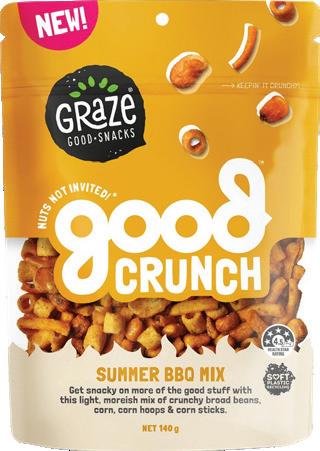
GRAZE GOOD CRUNCH brings fun, full-on flavour, and the big crunch shoppers are searching for.
The GRAZE GOOD CRUNCH range is now available in Foodstuffs stores nationally Website: www.graze.co.nz Email: hi@graze.co.nz
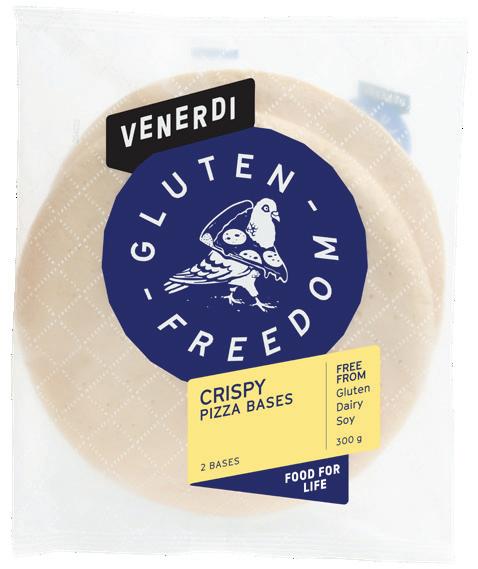

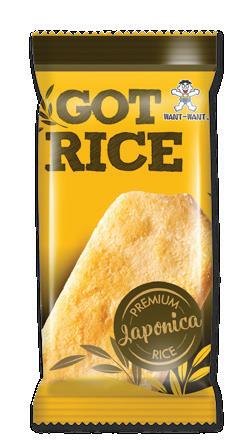


Acorn Group
New to New Zealand, Got Rice Snacks are made from premium Japonica rice and baked (not fried) to deliver a light, crisp crunch every time.
These moreish snacks come in two bold flavours: BBQ and Cheese. Each pack contains 20 convenient twin packs - ideal for lunchboxes or snacking on the go.
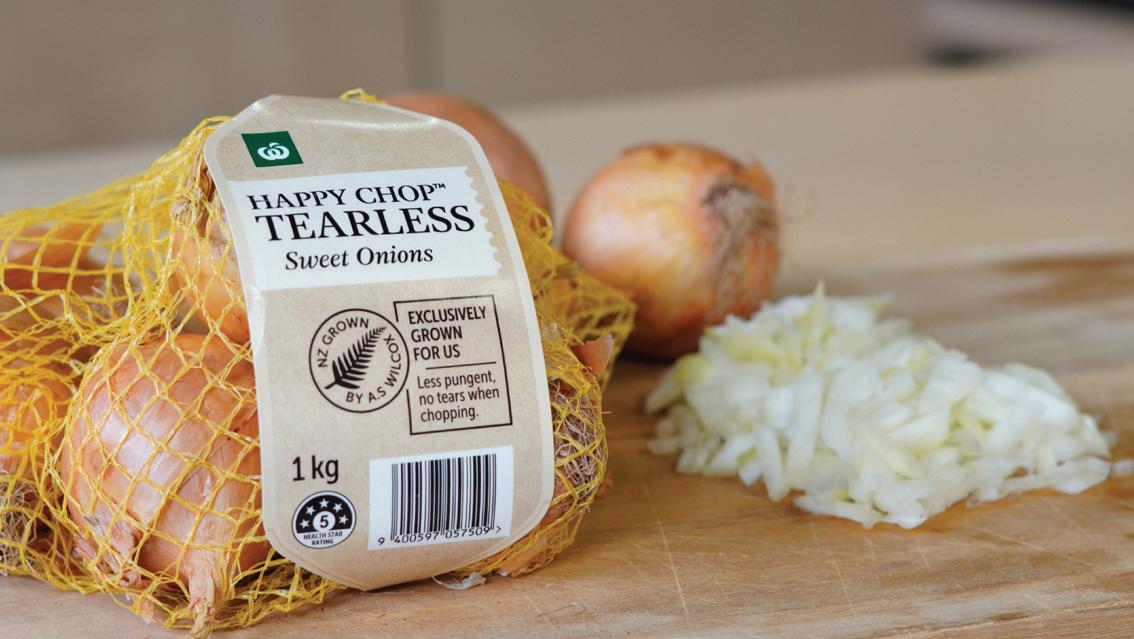
Woolworths
Woolworths New Zealand has announced the exclusive New Zealand launch of Tearless Onions - a revolutionary new product set to transform the cooking experience for Kiwis. These innovative onions offer an uncompromised
Pascall
Indulge in a one-of-a-kind treat with Pascall Grape Flavoured Lumps!
flavour that is slightly sweeter than regular brown onions, all while reducing tears and irritation during food preparation. Available in a handy, convenient pack size, Tearless Onions are perfect for both raw and cooked dishes.
The best of both worlds, where an indulgent, smooth dark chocolate coating meets an irresistible, chewy, grape-flavoured centre.
These Lumps are bound to delight your tastebuds with the deliciousness of grape flavour and dark chocolate in perfect harmony.

Enjoy them on their own or add your favourite toppings for a quick, light lunch.
Got Rice delivers an authentic Japanese snack at an affordable price.
Available on shelves now, RRP $2.99 nationwide at Woolworths and Fresh Choice stores.

Juice Lab
Juice Lab has created a range of wellness shots that are backed by science and full of goodness – literally tapping into nature's wonders by using meaningful amounts of plant ingredients.
These small, but mighty shots pack a punch of health and, since launching just over four years ago in Australia, have won awards, recognition and a 75 percent share of the market to become the number one wellness shot in Australia. Now it’s time to welcome a range of four of the bestselling products to New Zealand supermarkets nationwide. Full of fruit, roots and vegetables, the 60ml shots are designed to support physical and mental wellbeing, leaving you to squeeze the most out of your day.
All natural, no added sugar, plant-based ingredients, recyclable glass bottle and proven benefits. The four shots available to New Zealanders are: Focus: Brain Power, Immune: Vitality, Digest: Gut Health, Calm: De-Stress. https://www.thejuicelab.nz




I joined the AI Forum as Executive Director about six months before ChatGPT entered our world with a BANG – AI (and my world) has been running at top speed ever since. It is relentless –and it’s enabling some great ideas to be realised – here are some of them:


Fighting back:
At our recent AI in Creative Industries Summit, we met Daisy, a state-of-the-art Conversational AI bot programmed to speak with scammers on the phoneline for as long as possible. That wastes their time and keeps them away from real people. That’s what dAIsy, the scam-fighting AI bot, is here to do.
SciFi coming to life:
Linguistic earbuds that could be the first versions of the Bablefish in Douglas Adams’ ‘The Hitchhiker's Guide to the Galaxy’ are available on a couple of international marketplaces. It’s an earbud that uses AI to translate 45+ languages in real time, pitched at a relatively affordable price (USD100). These earbuds let people speak their own languages freely across international borders (though not yet interplanetary), reducing barriers to understanding and accessibility.
It’s too late to ignore this AI thing!
The ability for businesses and other organisations to safely ignore AI has disappeared. People are naturally finding these tools and beginning to use them, whether they are ‘allowed’ to or not. All organisations need to address the very real current risks they face around federated AI. Take a look at our free resources here: https://aigovernance.nz/ - these useful resources are curated by experts from across the AI Forum. More information is being added in the coming months, so its worth checking in again in August.
Safe places to play:
If you haven’t tried Generative AI yet, have a go with one of the free versions –there are plenty to choose from. If you are concerned about your information being used, I usually say don’t share anything that
you wouldn’t post on social media – you don’t need to give away your personal data to get a scone recipe or some ideas for your latest project!
Even your Google search now provides an explanation rather than a list of sites – so the next time you want to find an apple that sweet, crisp and crunchy, don’t just search for ‘Apples near me’, try a prompt like ‘Tell me what the best sweet, crisp and crunchy apples are and who sells them near me?
What’s Next?
Alongside the more dramatic first steps in convergence between AI and robotics, one of the predictions for 2025 was a growing “Reality Apathy” - capturing that feeling of helplessness when faced with the need for due diligence on everything our phones and their AI sidekicks throw at us. Who has time to read the T&Cs for every App on your phone? I’m looking forward to having my own personal AI agent who can take care of this for me (AI has time to read those endless pages of tiny print and tick all the unsubscribe boxes) and can keep my preferred data privacy and security settings up to date at the same time.
Be counted:
Is your organisation using AI or not? Tell us about it here and help form our future-facing AI strategy: AI in Action.

Your FMCG Grocery Brokerage Partner in Full-Service Key Account Management, Sales & Merchandising.
At Alliance Marketing, we manage the entire journey — from head office negotiations to in-store execution. Our integrated approach ensures your brand performs at every phase.
As a leading FMCG grocery brokerage, we specialise in Key Account Management, sales, and merchandising across New Zealand’s top retail channels, including Foodstuffs, Woolworths, The Warehouse, pharmacy chains, and fuel retailers.
We are results-driven and committed to growing your brand through:
1. Strategic Negotiation & Execution: We build and present strategic plans that secure optimal outcomes through retailer review processes.
2. Category Strategy Expertise: We understand how to position your brand within the broader category to maximise visibility and performance.
3. Range Review Specialists: We navigate complex range review processes with precision and insight.
4. Data-Led Decision Making: We interpret sales and consumer data to uncover actionable insights, unlocking growth opportunities.
5. Tailored Growth Strategies: We craft and execute plans aligned with your brand’s goals and market dynamics.
6. Promotional Portal Management: We manage the day-to-day of promotional planning, submissions, and execution through retailer portals — ensuring deadlines are met and nothing is missed.
7. Retailer Engagement:
From head office negotiations to in-store activation, our key account managers and instore brand ambassadors deliver results.
8. Transparent Reporting:
We provide detailed weekly reporting with clear, consistent updates on brand, store, and activation performance.
Whether you're launching, scaling, or repositioning, Alliance Marketing is your trusted partner in the competitive grocery landscape.
Let’s Talk Results

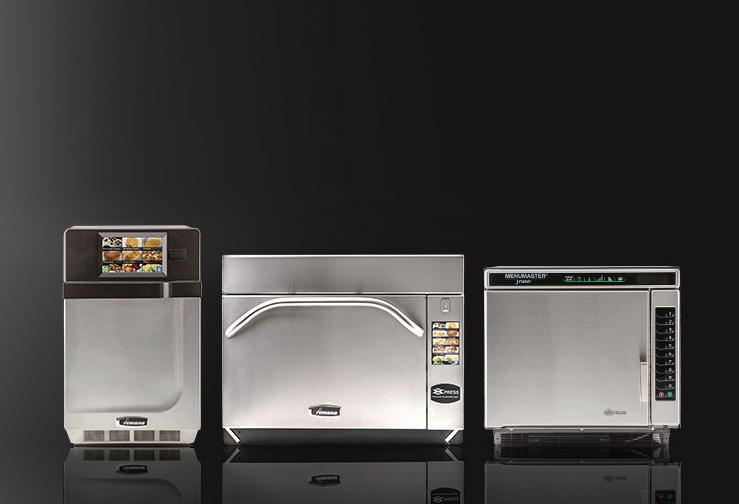

Menumaster delivers speed, efficiency, strength, and durability – which is why it is the microwave oven of choice for fast food chains, service stations, supermarkets, convenience stores, cafés and restaurants. Comprising a complete range of commercial microwave and accelerated microwave, convection, infra-red ovens designed to meet the needs of the most demanding hot food serving environments.





From pantry staples to premium indulgences, spices, seasonings, and sauces are no longer quiet supporting acts in the kitchen. They are centre stage.

Spices, seasonings and sauces are no longer an afterthought. They are a reflection of changing consumer habits, of global culinary influences meeting local innovation, and of a market that is increasingly premium, personal and purposeful.

As consumers demand more from their meals, such as bolder flavours, health benefits, and inspiration, this oncesimple category has undergone a bold transformation in recent years.
What used to be a shelf of basic salt and pepper is now a curated space filled with complexity and choice. Today’s shoppers are reaching for native herb-infused rock salts, smoked sea salt, chilli flakes and lemon pepper grinders.
Blends are crafted not only for flavour but for purpose. They are designed to enhance plant-based proteins, support specific diets or act as a hero ingredient in home cooking. New Zealand producers have found their stride here, developing small-batch blends that celebrate regional ingredients and showcase the country’s clean-label approach to food.
It is not just about seasoning anymore. It is about storytelling. The rise of gochujang, dukkah, chipotle and curry pastes reflects a growing consumer appetite for global discovery.
Finishing oils infused with citrus and chilli, dry rubs designed for both meat and meat-free dishes, and sauces that double as marinades are all gaining favour with a new

wave of home cooks seeking ease without compromise.
Among the most dynamic shifts has been the growing hot sauce category. Once a niche item, it is now firmly mainstream, driven by social media, foodie culture and an appetite for bold experimentation.
From tongue-tingling heat to layered complexity, hot sauce is no longer a condiment. It is a conversation starter. New Zealand’s producers are gaining momentum by emphasising provenance and ingredient purity, competing easily with imported brands.
Consumer expectations are clear. They want flavour with function. This means allergen-aware blends, lower-sodium options, and products that cater to evolving food lifestyles, whether plant-based, flexitarian, or low-carb. It also means sauces and seasonings that not only complement a meal but also elevate it.
Spices, seasonings and sauces are no longer an afterthought. They are a reflection of changing consumer habits, of global culinary influences meeting local innovation, and of a market that is increasingly premium, personal and purposeful.
For supermarket and grocery buyers, this is a category to watch. The flavour revolution is well underway. n


Made with sun-ripened organic tomatoes, onion, herbs and spices, Chantal Organics No Added Sugar Bolognese Sauce is a wholesome take on a classic family favourite.
It’s crafted with care using quality organic ingredients, no added sugar, and is gluten-free, making this sauce a fantastic choice for the whole family and suitable for a variety of dietary needs.
Packed with rich, natural flavour, it’s a versatile pantry staple - simply add your choice of meat or lentils and seasonal vegetables, heat, and stir through your favourite pasta for a quick, hearty and nourishing meal to warm you this winter.
For more information, contact us on orders@chantal.co.nz or visit https://chantalorganics.co.nz/
Delmaine
The OG of red sauces for burgers, Delmaine Burger Ketchup is made the traditional way with real gherkins and onions, not just flavouring.
With fakeaways continuing to be a consumer trend due to ongoing economic pressures, recreating flavours from your favourite restaurants is a popular and fun kitchen challenge, particularly for pizza and burgers.
This rich tomato ketchup is perfect to give your burgers that classic burger taste you might have tasted on a popular burger that weighs about 114g. As temperatures drop, shoppers reach for comfort and flavour. From hearty casseroles to slowcooked stews, winter meals come alive with the right spice, seasoning or sauce.
For more information, visit https://www.delmaine.co.nz/
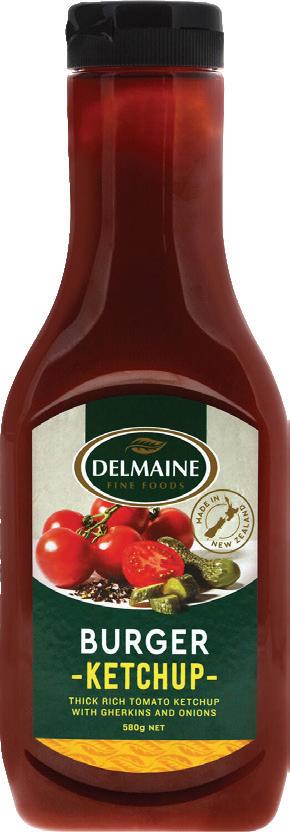
Whether it’s a spoonful of something smokey, a dash of heat, or a swirl of richness to finish the dish, this category is key to transforming everyday staples into soul-warming favourites. These are the brands that are bringing the flavour firepower that keeps cold-weather cooking interesting, convenient and irresistibly craveable.

An amazing taste of fresh herbs with a balance of chillies. A bit like the salad dressing, this sauce can be used with a multitude of foods. Great with seafood, vegetables, meats, pastas or just poured over your salad. It can also be used as a time saving Thai curry.
For more information, contact us on info@sonessauces.com, +64 27 823 5396 or visit https://www.sonessauces.com/
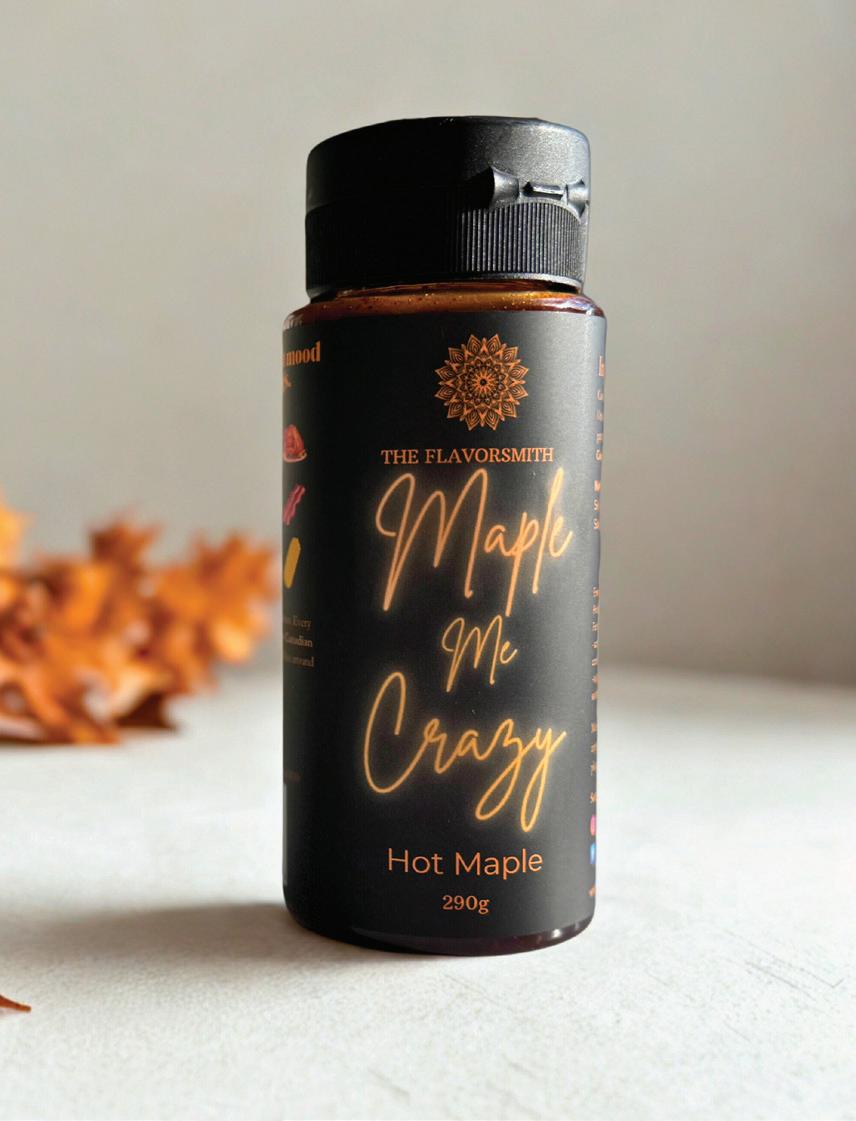
Food lovers are seeking bold, gourmet condiments made with integrity, but the shelf is still full of mass-produced sauces high in sugar and low on craft. There’s a clear gap for a clean, premium product that delivers both heat and sweetness in a meaningful way.
Maple Me Crazy fills that gap. Crafted in small batches in the Bay of Plenty, this artisanal condiment is the first of its kind in New Zealand, blending real maple syrup, smoked chipotle, Carolina Reaper chilli, natural apple cider vinegar, and a natural spice blend. No refined sugar. No seed oils. No artificial additives.
Its unique profile, deep, smoky sweetness with a lingering heat, makes it a standout for customers looking to elevate everyday meals. Use it to glaze roast veg and meats, drizzle over fried chicken or waffles, pair with cheeses and charcuterie, or stir into gourmet coffees, desserts, and even cocktails.
Proudly made in New Zealand, Maple Me Crazy brings craftsmanship, local roots, and bold flavour to the condiment shelf.
Elevate your condiment selectionorder Maple Me Crazy today! https://www.theflavorsmith.co.nz/
Wild West Gourmet Worcester Sauce is a bold and deeply savoury staple crafted in small batches in Northland, New Zealand.
Aged slowly to develop a rich and rounded profile, this sauce stands apart from others on the market thanks to its unique base of spiced vinegar infused with pickled onions. This gentle layering of aromatics creates an unmistakable umami depth, all without the use of fermented fish or anchovies.
The recipe is built on tradition but adapted to suit modern tastes and dietary choices. The pickled onions are the soul of the base, giving the sauce a mellow tang that balances beautifully with the dark sweetness of treacle.
This note of treacle not only rounds out the vinegar but also
introduces a subtle warmth and richness that enhances everything from slow-cooked meats to grilled vegetables and even a cheeky cheese toastie.
Made using time, care, and a genuine love for flavour, this sauce brings a handcrafted edge to the classic Worcester profile. Whether you are marinating, seasoning, or finishing, it adds a complex lift without overwhelming your dish.

A pantry essential for anyone who appreciates real flavour, real process, and real food.
For more information, contact us on hello@wildwestgourmet.co.nz, +64 9 945 5074 or visit https://wildwestgourmet.co.nz/

Turn Up the Flavour! Bold, addictive, and packed with umami punch - S&B Crunchy Garlic in Chili Oil transforms any dish into a crave-worthy experience. This cultfavourite Japanese condiment blends crispy fried garlic, fried onion, chili pepper, sesame oil and other umami rich ingredients into one irresistible jar. Drizzle it over noodles, rice, dumplings, or even pizza - no cooking required, just pure flavour

impact. Whether you’re spicing up weeknight dinners or adding edge to your snacks, this is your shortcut to instant deliciousness. Once you try it, "You’ll want to put it on everything!"
For more information, contact us on akl_mark.w@tokyofood.co.nz, +64 21 662 394 or visit https://tokyofood.co.nz/en/home-eng/




Have you ever noticed how quickly we jump into problem-solving — before checking if we’re solving the right problem?

Gerry Lynch Managing Director
The Real Leadership Company
Agreat example comes from Thomas Wedell-Wedellsborg’s book What’s Your Problem?
He tells the story of an office building where tenants constantly complained about slow lifts. The expected solution? Get engineers involved: speed up the lifts, tweak the controls, or install new motors. But none of that was needed. The real breakthrough came when management simply put up mirrors next to the lifts. Suddenly, the complaints vanished. Why? Because the real issue wasn’t the speed of the lift — it was people’s experience waiting.
How This Relates to Business
In my Vistage CEO peer groups, we regularly encounter leaders wrestling with tough challenges.
Here’s the common pattern:
• Someone presents a problem they’re facing.
• Everyone around the table rushes into solution mode.
• Time, energy, and money get wasted solving the wrong problem.
That’s why we slow it down and use a structured approach.

Step 1: Frame The Problem
We start by asking the person to outline what they believe the problem is. Then we explore:
• Why is this important?
• What’s at stake if nothing changes?
• What’s already been tried?
• How can this be framed as a “How can I…” or “How can we…” question?
Step 2: Ask Clarifying Questions (No Advice Yet!)
The group asks open questions like: How might you be contributing to the issue?
• Who is impacted?
• What frustrates you most?
• What assumptions are you making?
• What’s holding you back?
• Where have you seen this work well — or fail badly?
Step 3: Redefine The Problem
After this, the group reflects back what they think the real problem is. Almost always, the person realises they were framing it too narrowly. Only then do we move to advice, options, and commitments.
One reason this process is so effective is that the people in the room don’t work in the presenter’s business. They bring fresh eyes, no internal bias, and no assumptions.
If You Want To Run Better Problem-Solving Sessions:
• Slow down and clarify the problem first.
• Use a diverse group to get fresh perspectives.
• Hold off on advice until you’re sure you’re solving the right challenge.
You might discover, like the mirror by the lift, that the breakthrough is simpler than you think.
Want to learn more about how Vistage peer groups help leaders solve their biggest challenges? Reach out — I’m always happy to chat.

Babies may be cute, but competition between nappy brands in supermarkets is anything but. A wide variety of brands battle for attention and shelf space, so the heat is on to make the cut.
That’s why Cute & Co, having firmly established the brand over four years, decided to get ahead of the curve with an in-depth review of its positioning and packaging in 2024.
Partnering with Onfire Design, a boutique specialist on Auckland’s North Shore, Cute & Co developed a new brand position and message to make the brand feel fresher and more relevant.
“At Onfire, we take all the values and features that make up an identity and translate them into visual elements that clients and their customers love. It’s more than packaging – it’s all about communication and storytelling that can also carry across media,” said founder Sam Allan. Onfire took the opportunity to establish
Cute & Co as the go-to brand for modern parents. The packaging comes to life with a bold new look while a clever modification to the Cute & Co wordmark reshapes the ampersand to echo a heart shape. What’s not to love?
A Kiwi brand made for Kiwi families, the new Cute & Co packaging is vibrant, bright, and proudly showcases real Kiwi kids, photography focusing on fun moments with bubs, not the messy ones. The visual expression features the bond between children and their “& Co,” whether that’s a sibling, soft toy, or beloved pet. The result is packaging that resonates emotionally and brings a sense of warmth to the brand proposition.
“The visual language underwent a

significant transformation to align with its new positioning and drives ideas of fun, energy, and activity on the front with all the key Cute & Co product features and benefits on the back,” added Onfire Creative Director, Matt Grantham.
“Each pack is also colour coded to differentiate for age groups or stages of development.”
Look out for the new work in store as the packaging ‘rolls out’ in Woolworths supermarkets nationwide. Initial impressions are proving that the look is having the desired impact at the point of sale.
www.weareonfire.co.nz
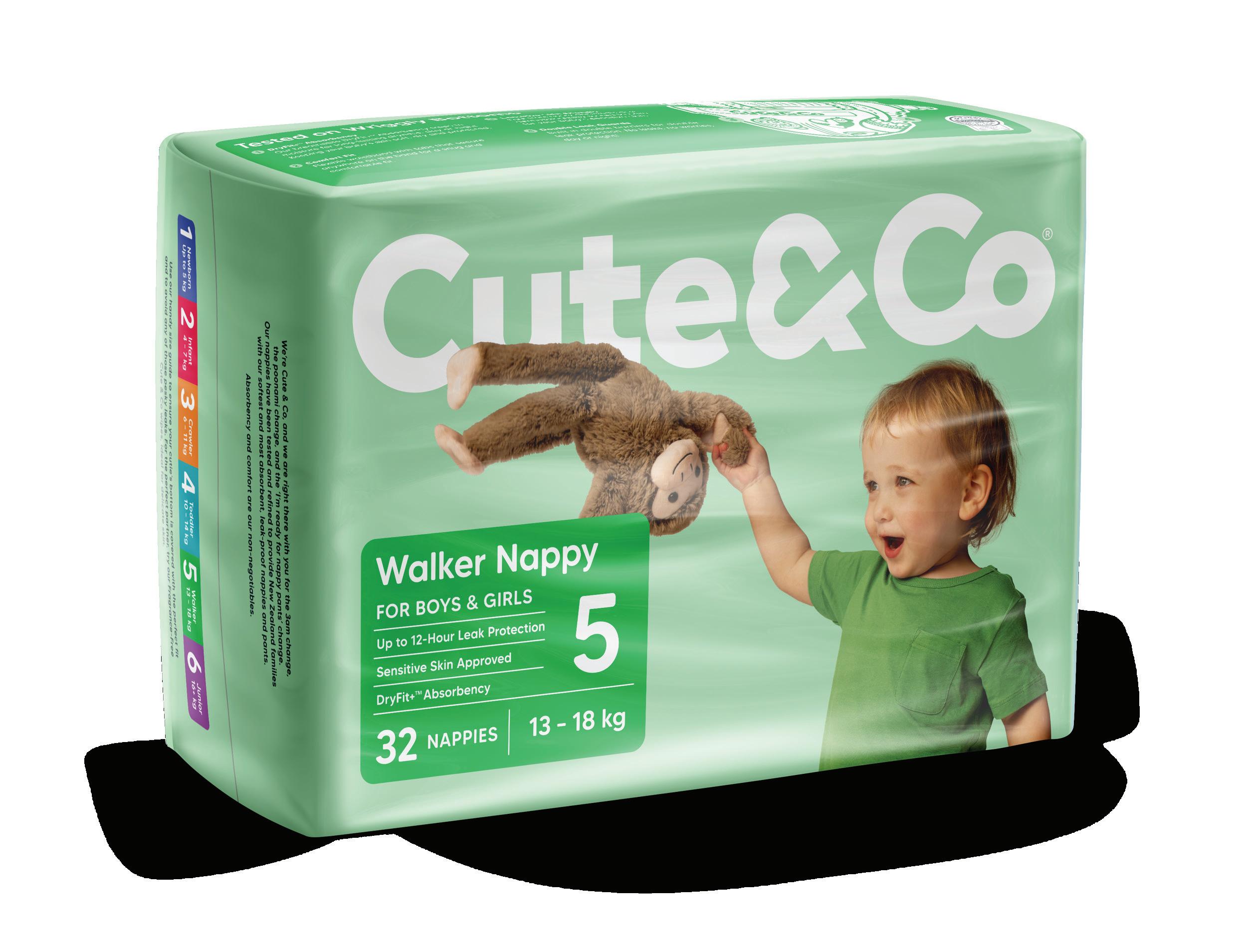







Multichem has been a strong player across New Zealand and the Pacific Islands, and it has continued to develop and grow in both regions.
There is a high chance that Multichem has supplied products to most households over the years, with its portfolio encompassing prescription products, over-the-counter products, pharmacy and dispensary consumables, and gift and toiletry lines such as Wavertree & London and Nudy Rudy.
Its Ethics brand has gone from strength to strength during and post-COVID, especially in the grocery channel, with high demand for products for pain relief at affordable prices.
“We have expanded our range and given consumers a choice vs the big brands,” said David Acott, Sales/Key Account Manager at Multichem NZ Ltd.
“There has been a considerable switch to Ethics as consumers understand we offer the same formulations and active ingredients but at a much lower price whilst maintaining a high-quality product.”
Over the last few years, price has become a top concern for consumers as the cost of living remains high. Value-for-money products have rapidly grown, and alternative solutions or products that meet consumers' needs, rather than their regular purchases, have seen a shift.
Acott said the brand has been working closely with supermarket buyers to identify solutions to gaps in categories, introducing new products to help grow categories, and ensuring that what it brings to the table
meets both buyers' and consumers' needs.
“Ethics, our main brand in grocery, offers quality at an affordable price and spans across multiple categories. It has performed strongly in the grocery channel, particularly in the pain category, with consumers selecting it as an alternative to the big brands.”
Multichem aims to expand its portfolio by introducing multiple new ranges and products to its business.
In an economy with a high cost of living, where every dollar in a household counts, Multichem has ensured it continues to offer value for money and has products that meet the consumer’s needs without sacrificing quality or ingredients.

The Plusssz Effervescent Range is a highly successful range from Europe, now available in New Zealand, launched with seven products already, with three more to be added in the coming months. These are an adult range, including Energy Complex, Magnesium Forte, Multivitamin & Minerals, Immunity Complex, Electrolyte + Multi, Electrolyte Sport, and Ashwagandha Complex. It also includes a junior range, including Multivitamin & Minerals, Immunity Complex, and Electrolytes Complex. These products all taste amazing and meet the daily Recommended Dietary Intake (RDI). All in 20 or 24 effervescent tablet packs, featuring Actilease technology coating for optimal absorption. All products have no added sugar as are flavoured with fruit juice powder.

Zeevision Lens Wipes are biodegradable, pre-moistened extra-large wipes with anti-fog properties, killing 99 per cent of germs, and are eco–friendly. They come in a pack of 24 multi-use wipes for eyeglasses, mobile phones, computer screens, camera lenses, mirrors, and more.
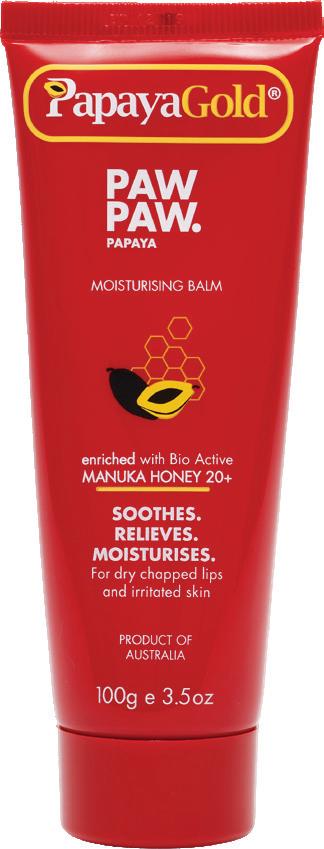
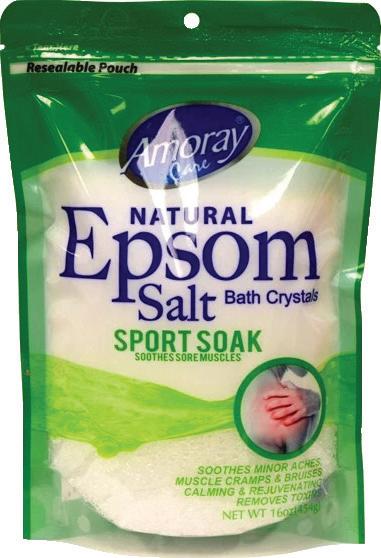
Amoray Epsom Salts range of three products soothes and relaxes tired muscles. Epsom Salt Lavender, Epsom Premium Salt Sport Soak and Epsom Premium Salt Unscented, all with natural magnesium to help relieve stress, body aches and tired muscles
Papaya Gold is a range that combines Australian Paw Paw with New Zealand Bio Active Manuka Honey 20+ in 7g Pot, 25g, and 100g tube. It is a topical balm that soothes, relieves, and moisturises dry, sensitive, chaffed, and irritated skin, as well as dry, chapped lips. It is also antibacterial, antimicrobial, antiviral, antiseptic, and anti-inflammatory.
Always read the label and recommend as directed If symptoms persist refer to the Pharmacist. Please refer to the product packaging for information on active ingredient name and strength, dosage, warnings, precautions, contraindication or side effects. Paracetamol: incorrect use may be harmful. Vitamins and minerals are supplementary to and not a replacement for a balanced diet. Multichem NZ Ltd, Auckland.





To millennials and Gen Zers, wellness has become a daily, personalised practice rather than a set of occasional activities or purchases.


As this shift takes hold, it’s influencing the direction of the USD two trillion global wellness industry, which is expanding beyond its core categories.
Although younger demographics are driving the industry forward, older consumers are also becoming increasingly interested in an expanding definition of wellness.
In its fourth year of fielding the McKinsey & Co. Future of Wellness research, two key ideas emerged from this year’s research: younger consumers are redefining wellness in new ways, and wellness is increasingly appearing in unexpected places.
Wellness is more important to consumers than ever.
Nearly 30 per cent of Gen Zers (people born between 1997 and 2012) and millennials (born between 1981 and 1996) in the United States report prioritising wellness “a lot more” compared with one year ago, versus up to 23 per cent of older generations.
This may be due to several factors: Younger generations self-report higher levels of burnout and worse overall health compared with older people, but are also more exposed to health-related content on social media (where they are more likely to be influenced to make a wellnessrelated purchase than older generations are).
The burgeoning prioritisation of wellness is translating into dollars spent. While Gen Zers and millennials make up just over a third (36 per cent) of the adult population in the United States, they account for more than 41 per cent of annual wellness spending.


Compare that with consumers aged 58 and older: These consumers make up 35 percent of the population but only 28 percent of wellness spending. To be sure, older consumers still represent a meaningful opportunity for wellness players, especially in advanced markets with ageing populations.
As wellness continues to evolve from a niche interest into a mainstream lifestyle priority, Gen Z and millennials are setting the pace, reshaping expectations and pushing the boundaries of what wellness means. Other generations, too, are adopting an expanding definition of wellness.
Gen Zers and millennials are not a homogenous group; there are nuanced differences in their perspectives on wellness. For example, although both groups rank sleep and health as their top two wellness priorities (but in a different order), Gen Zers give “better appearance” the number three slot, whereas millennials care more about mindfulness.
Consumers in all age groups are also spending heavily on other products and services, such as health-tracking devices, wellness retreats, and energy drinks, that are not tied to specific life stages, indicating a broader cultural shift in how people perceive wellness.
Several of the health and wellness trends identified in previous years, including a growing focus on women’s health, health at home, and biomonitoring, remain relevant today. In addition to these trends, notable pockets of growth emerged in this year’s survey results, including functional nutrition, healthy ageing, appearance and aesthetics, in-person wellness services, weight management, and mindfulness.
As wellness continues to evolve from a niche interest into a mainstream lifestyle priority, Gen Z and millennials are setting the pace, reshaping expectations and pushing the boundaries of what wellness means. Other generations, too, are adopting
an expanding definition of wellness. To position themselves for success, businesses across consumer subsectors should consider three imperatives:
Break barriers: Wellness is about consumer needs more than categories. Create integrative solutions that connect products, services, and digital tools to help consumers address their holistic wellness needs. A weight loss solution could be bundled with a digital weight management app, featuring live nutritionist consultations and healthy meal subscription offerings.
Emphasise expertise: Consumers are gravitating toward products and brands that signal scientific expertise. Science- or databacked claims and trusted recommendations can differentiate one offering from the next, helping consumers build confidence that a given solution will deliver results.
Deliver value: Every brand and retailer (regardless of price point) should deliver “value” to the consumer. Consumers define value in different ways; it is not only about price but also about product quality, value for money, efficacy, and availability. Wellness players should not focus solely on pricing growth but ensure their products serve unmet needs.
Together, these imperatives can help wellness players achieve healthy growth. Those that act now to serve unmet consumer needs, earn customer trust, and deliver real value can turn today’s tailwinds into tomorrow’s competitive edge. n




NielsenIQ (NIQ) has launched its Global State of Health & Wellness 2025: Navigating the Shift from Health Trends to Lifestyle Choices, the first report of its kind for NIQ to examine emerging consumer behaviours around health and wellness.

The findings include regional deep dives in 19 countries, focusing on critical topics such as trust and influence, nutrition, weight loss, mental wellness, health technology, and conscious buying within the health and wellness sector.
According to NIQ, consumers are increasingly making choices for their future health. Seventy percent of global consumers believe they are proactive in managing their health, and 57 percent now prioritise “ageing well” more than they did five years ago.
As a result, 55 percent of consumers are willing to spend over USD 100 a month on better nutrition, self-care, physical and mental health, and more. However, consumers are growing increasingly
sceptical about health claims.
Globally, 82 percent say labels on health and wellness products need to be more transparent and easier to understand, and 25 percent say that their lack of trust that wellness products or services will be effective is stopping them from making healthier life choices.
“To thrive in the evolving wellness market, brands must go beyond product innovation to deliver clarity, transparency, affordability, and trust,” said Marta CyhanBowles, Chief Communications Officer & Head of Global Marketing COE.
“Consumers are ready to invest in their well-being but need guidance. Companies must ensure their products are accessible, transparently labelled, and competitively
priced to win consumer loyalty.”
To capture shifting consumer preferences and what it means to live well, manufacturers and retailers must connect with today’s holistically minded and betterinformed consumers in ways that focus on their priorities.
Manufacturers and retailers must address consumers’ ongoing core concerns regarding the cost and availability of healthier options, as well as their desire for authentic, clear, and detailed product information. Brands can also win loyalty with core segments, as well as unlock premiumisation potential, by ensuring that their full product portfolio has a wellness focus, is ethically sourced, environmentally responsible, and socially aware. n
NUTRITION AND GUT HEALTH ARE DRIVING HEALTHY FOOD AND BEVERAGE CHOICES:
Half (53 percent) of the consumers across 19 surveyed countries say they plan to buy more high-fibre foods in 2025, while around 40 percent plan to buy more superfoods, high-protein plant-based foods, or probiotic foods.

Nearly two-thirds (63 percent) of consumers prioritise getting quality sleep and looking after their mental health more than they did five years ago. They also plan to do more activities like spending time in nature (60 percent), massage and muscle relaxation (40 percent), yoga and meditation (35 percent), or aromatherapy (24 percent).


MEDICATIONS (AOMS) ARE TRANSFORMING WEIGHT LOSS MANAGEMENT:
More than half (54 percent) of consumers place more importance on healthy body weight, shape, and muscle tone now than they did five years ago. Four in 10 (43 percent) would consider taking AOMs if recommended by their healthcare provider, but 63 percent globally are not familiar with the medications.


Personal well-being and societal responsibility are becoming increasingly interlinked in consumers’ outlooks. Seventy percent of surveyed consumers say they believe it’s “important” or “very important” that the health and wellness products they buy are also eco-friendly and/or ethically produced (e.g., fair trade, cruelty-free, higher animal welfare), and 71 percent are willing to pay more for wellness products with these attributes.

New Zealanders are heading into winter with a clear focus on warmth, wellbeing and everyday indulgence. The latest data from Shopify reveals significant year-over-year increases across food, health, beauty, and home categories, indicating that consumers are curating their lifestyles with greater intention than ever.
Topping the food and beverage trends, beef saw an astonishing 1,154.7 percent jump in May compared to the same time last year. It was the third most popular product overall, indicating a strong demand for hearty, home-cooked meals. Hot drinks were also in demand, with tea up 595.9 percent, coffee beans and ground coffee rising 410.7 percent, and hot chocolate up 139 percent. Cakes surged 176.9 percent, while flour saw a 161.9 percent rise, confirming that baking is back in the spotlight.
It's not just about what's on the plate. Consumers are investing in the full experience, from the ingredients to the appliances that bring it all together.
That investment is reflected in the sales of kitchen appliances. Food mixers and blenders spiked 645.2 percent, followed by espresso machines at 142.7 percent and outdoor grills at 114.7 percent.
Beyond the kitchen, health is driving
purchasing decisions. Multivitamin supplements were up 878.3 percent, with strong growth across amino acids, minerals, herbal supplements and digestive aids.
The data suggests a continued focus on immunity, energy and overall wellness.
"We're seeing a shift toward proactive health routines, where supplements and natural remedies are part of everyday life," said Shopify.
“Shopify’s first-party data shows that New Zealanders are increasingly gravitating toward a mix of household essentials and wellbeing-focused purchases. From the rise in health supplements and grooming products to increased demand for beef, blenders, and warm beverages, consumers are prioritising comfort, nourishment, and healthier living,” said Shaun Broughton, Managing Director, APAC and Japan at Shopify.
“For Kiwi merchants, this signals a consumer mindset that values practicality, daily rituals and value-driven wellness.
Shopify’s first-party data shows that New Zealanders are increasingly gravitating toward a mix of household essentials and wellbeing-focused purchases. From the rise in health supplements and grooming products to increased demand for beef, blenders, and warm beverages, consumers are prioritising comfort, nourishment, and healthier living,


Businesses that respond with agility, whether through curated bundles, personalised offers, or improved product discovery, will be best positioned to turn these trends into lasting loyalty.”
Beauty and grooming products also posted impressive gains. Fragrances such as eaux de toilette and eaux de parfum rose by 304.8 and 241.6 percent respectively. Razors, face moisturisers, skin care tools and cosmetic sets all showed triple-digit growth. Rather than luxury splurges, these items are being treated as essentials. Consumers are looking to feel good, look good and take better care of themselves.
The trend extends to pets, with products like flea and tick treatments up 341.3 percent. Pet supplements and prescription diets also gained momentum, reflecting a growing view of pets as part of the family's overall wellness plan.
Outside the pantry and bathroom, home goods surged, too. Innerspring mattresses and bed frames were the top two trending product categories nationwide, with increases of over 1,500 percent each. Print books, outdoor power equipment, and t-shirts rounded out the top 10, indicating a broader shift in how people are spending their time and money this winter.
Shopify's data reveals that Kiwi shoppers are not just chasing trends. They are seeking practical ways to enhance their daily lives, whether through improved food, smarter appliances, or thoughtful self-care.
"Consumers are embracing products that add comfort, value and purpose to their routines," said Shopify.
For retailers, the message is simple. Stock brands that support modern living, prioritise wellbeing and fit with the rhythm of the season. Shoppers are ready for it. n





case study | phased refrigeration system upgrade
The Why Knot Outlet Shop in East Tamaki faced cooling challenges from an aging R404a system, especially during summer. McAlpine Hussmann delivered a phased TCO2 refrigeration upgrade, improving
Why Knot Outlet Shop, a bargain store in East Tamaki, Auckland, was operating with a R404a refrigeration plant that was approximately ten years old. During peak summer months, the existing system faced significant challenges maintaining optimal product temperatures due to increased ambient heat and thermal load on the condensing units. This inefficiency risked product integrity and led to higher energy consumption. The building, an older factory conversion, also presented limitations for installing new infrastructure, particularly drainage.
McAlpine Hussmann partnered with Why Knot to address immediate needs and future-proof the low-temperature capacity. The initial phase focused on installing new freezer equipment and strategically mitigating thermal stress:
• New Freezer Installation
21 meters of Hussmann GHN74 freezer cases and a new dedicated freezer room were installed.
• CO2 Refrigeration Plant
The new freezer system was designed around CO2 (R744) refrigerant, known for its efficiency and lower environmental impact compared to HFCs like R404a.
• Condensing Units and Load Sharing
Two Panasonic TC02 10HP transcritical CO2 condensing units were installed, each designed to handle 50% of the freezer load, providing redundancy and efficient operation.
• Strategic Placement
Crucially, the new condensing units were located on the opposite side of the building from the previous plant. This move eliminated the significant thermal impact previously experienced from direct afternoon sun exposure, improving unit efficiency and reliability during hot weather.

Refrigerant: CO2 (R744) Transcritical System
Freezer Cases:
Hussmann GHN74 (21m)
Condensing Units:
Panasonic TC02 10HP
Transcritical CO2 Units
Evaporators (Retrofit): Comprex Controls: Carel Boss System
Drainage: 330L Sump Pump System
• Drainage Solution
Due to the lack of conventional drainage options in the old factory building, a 330-litre sump pump system was installed specifically to manage condensate from the new freezer cases.
• Advanced Controls
Carel Boss control systems were implemented across all new cases and evaporators for precise temperature management and system monitoring.



LOW TEMP ROOMS TO TCO2
Following the success of Phase 1, McAlpine Hussmann proceeded with the next phase of the project to convert the existing Medium Temperature (MT) and Low Temperature (LT) cool rooms from R404a to the TCO2 system:
• Medium Temp room conversions
- Deli Cool Room
The 10-door insert room (15kW load) was retrofitted with a new Comprex evaporator and connected to a dedicated Panasonic TC02 10HP CO2 condensing unit, managed by Carel controls.
- Milk Cool Room
Similarly, the 8-door insert room (15kW load) received a Comprex evaporator, a dedicated Panasonic TC02 10hp CO2 unit, and Carel controls.
• Low Temp room conversions
- Front Freezer
The 12-door insert freezer (20kW load)required a higher capacity solution. It was converted to CO2 using Panasonic TC02 10HP units, with one unit dedicated per evaporator due to the significant load, ensuring consistent low temperatures.Carel controls were implemented.
- Rear Storage Freezer
This freezer (20kW load) also demanded significant cooling capacity and was similarly upgraded with dedicated Panasonic TC02 10HP units per evaporator and Carel controls.
The phased transition to a TCO2 refrigeration system yielded significant improvements for Why Knot Outlet Shop:
• Improved Product Temperatures
The most critical outcome was a marked improvement in product temperature stability and consistency across all refrigerated and frozen spaces, safeguarding stock quality.
• Enhanced Summer Performance
The strategic relocation of condensing units and the inherent efficiency of the TCO2 system effectively mitigated the previous struggles during high ambient temperatures.
• System Reliability

The new equipment and load-sharing design enhanced overall system reliability and redundancy.
• Energy Efficiency
TCO2 systems offer improved energy efficiency compared to older R404a systems.
• Environmental Responsibility
Transitioning from R404a (high GWP) to CO2 (GWP=1) significantly reduced the store’s direct environmental impact related to refrigerant emissions.
The comprehensive, two-phase upgrade carried out by McAlpine Hussmann for Why Knot Outlet Shop’s refrigeration system successfully addressed the critical performance issues of the aging R404a plant. By implementing a modern TCO2 system with strategic equipment placement, advanced controls, and tailored solutions for existing rooms, the project delivered significantly improved temperature control, enhanced reliability, and positioned the supermarket for more efficient and environmentally responsible operation.

commercialnz@hussmann.com mcalpinehussmann.co.nz







To meet the specific needs of smaller-format convenience stores in New Zealand, McAlpine Hussmann offers a wide range of Panasonic TCO2 products at economical prices, enabling small-format stores to invest in low-energy, environmentally friendly solutions.

“We have competitively priced and spec’d Hussmann and global partner brand cabinets, which allows the store to invest in Hussmann quality, within their budget,” said James Bremner, Case & Commercial Manager at McAlpine Hussmann.
“Selling our own brand and having the capability to manufacture in New Zealand allows McAlpine Hussmann to adapt our products to specific customer requirements across a wide range of solutions.”
With 13 branch locations nationwide, customers benefit from the centralised project team’s efficiency, as well as local support to handle any ongoing services or concerns.
All Hussmann-supplied refrigerated display cases meet the EEI (Energy Efficiency Index) accreditation, which is a mandatory requirement in New Zealand. Hussmannbranded products are also tested in-house, ensuring that the true energy usage is credible.
Additionally, natural refrigerant solutions ensure a complete life cycle, with support available throughout the product's life, thereby avoiding the escalating costs and risks associated with synthetic refrigerants.
Bremner added that new technologies supporting natural refrigerants have rapidly evolved, in line with New Zealand’s drive towards a carbon-zero objective. Customers want real-time information, and
McAlpine Hussmann offers solutions that enable customers to access timely data for temperature and alarm monitoring, energy usage, and building automation.
Display cases further complement natural refrigerant solutions. This means that the smaller, more economical capital plant can be selected, resulting in lower energy usage. All these measures lead to a faster return on investment (ROI).
The brand’s display cabinets have also maximised open area with configurable shelving options, optimising the opportunities to face consumer products for maximum appeal. Incorporating frameless glass door options for chiller and freezer models and utilising new, bright, energyefficient LED lighting has made the food and products “pop” for shoppers.
“Our New Zealand-made speciality display cases are the perfect solution for ready meals. Efficient frozen food cases align with the increase seen in supermarket frozen food, which is a direct reaction to the costof-living increases.”
With innovation at its core, McAlpine Hussmann has remained closely aligned with emerging trends and technologies. Bremner mentioned that the next few years will see an increase in contracting activity, as the industry shifts away from synthetic gases and moves toward natural refrigerants, such as CO2. n


By
As the climate conversation grows louder in boardrooms and communities, New Zealand’s supermarkets are stepping up by cutting emissions, reducing waste, and investing in cleaner operations. However, one of the most powerful levers for climate action remains largely behind the scenes: refrigeration.


Supermarket refrigeration is vital to food safety, product quality, and daily operations; however, many systems still rely on synthetic refrigerants, such as HFCs (hydrofluorocarbons). These are among the most potent greenhouse gases still in use, and a single leak of HFC can be equivalent to several tonnes of carbon emissions.
That’s why the industry is now shifting rapidly towards natural refrigerants, such as CO₂, ammonia, and hydrocarbons. These alternatives offer both environmental and operational benefits, including lower emissions, greater efficiency, and long-term regulatory certainty.
At Cool-Safe, the organisation responsible for New Zealand’s product stewardship scheme for refrigerants, we collaborate with the HVACR industry to ensure that these harmful synthetic gases are safely recovered and permanently destroyed.
Later this year, regulations are expected to be in place that will require supermarkets and others that use synthetic refrigerants and synthetic refrigerant-containing machinery to register with the scheme and work with Cool-Safe or a registered contractor for the safe management and disposal of these substances.
Product stewardship isn’t just about the end of a refrigerant’s life; it’s about managing risks and responsibilities across the entire life cycle.
“Supermarkets are uniquely placed to lead this shift and play a critical role in how refrigerants are managed throughout their lifecycle. When older systems are replaced or decommissioned, retailers can ensure that any refrigerant is recovered by certified technicians and safely destroyed through Cool-Safe’s national network. This protects the environment and ensures sustainability claims are backed by meaningful, measurable action,” said Matthew Darby, Managing Director and Founder of Cold Energy Technology Group.
Leak mitigation is another essential area where supermarkets can make a significant impact. Even small refrigerant leaks can quietly undo the environmental and financial benefits of an energy-efficient
system. With regular maintenance, smart leak detection tools, and proactive system checks, these emissions can be drastically reduced. Saving both emissions and operating costs. Preventing leaks is a climate response and a commercial safeguard.
“As the shift to natural refrigerants continues, the demand for skilled technicians is also growing. These modern systems require specialised knowledge in handling, pressure safety, and compliance. By engaging trained contractors, supporting technician upskilling, and collaborating on cross-industry training pathways, supermarkets help to build the sector capability needed to support this transition long term,” said Nick Tongue, Managing Director of McAlpine Hussmann.
The refrigeration sector is proud to partner with New Zealand supermarkets on this journey. Through Cool-Safe, we’re building a stewardship system that reduces emissions, lifts industry standards, and protects the climate.
Supermarkets are already leading the way in so many areas of sustainability. With responsible refrigerant disposal, proactive leak management, and support for technicians' training, they can help transform refrigeration from a highrisk necessity into a low-emissions, environmentally friendly success story.
Just more proof for your customers that you are working sustainably and responsibly. It’s a win-win.
This column is by Cool-Safe in partnership with industry leaders across New Zealand’s refrigeration and HVAC sector. To find out more about certified disposal, technician training or joining the Cool-Safe programme, visit www.coolsafe.org.nz.



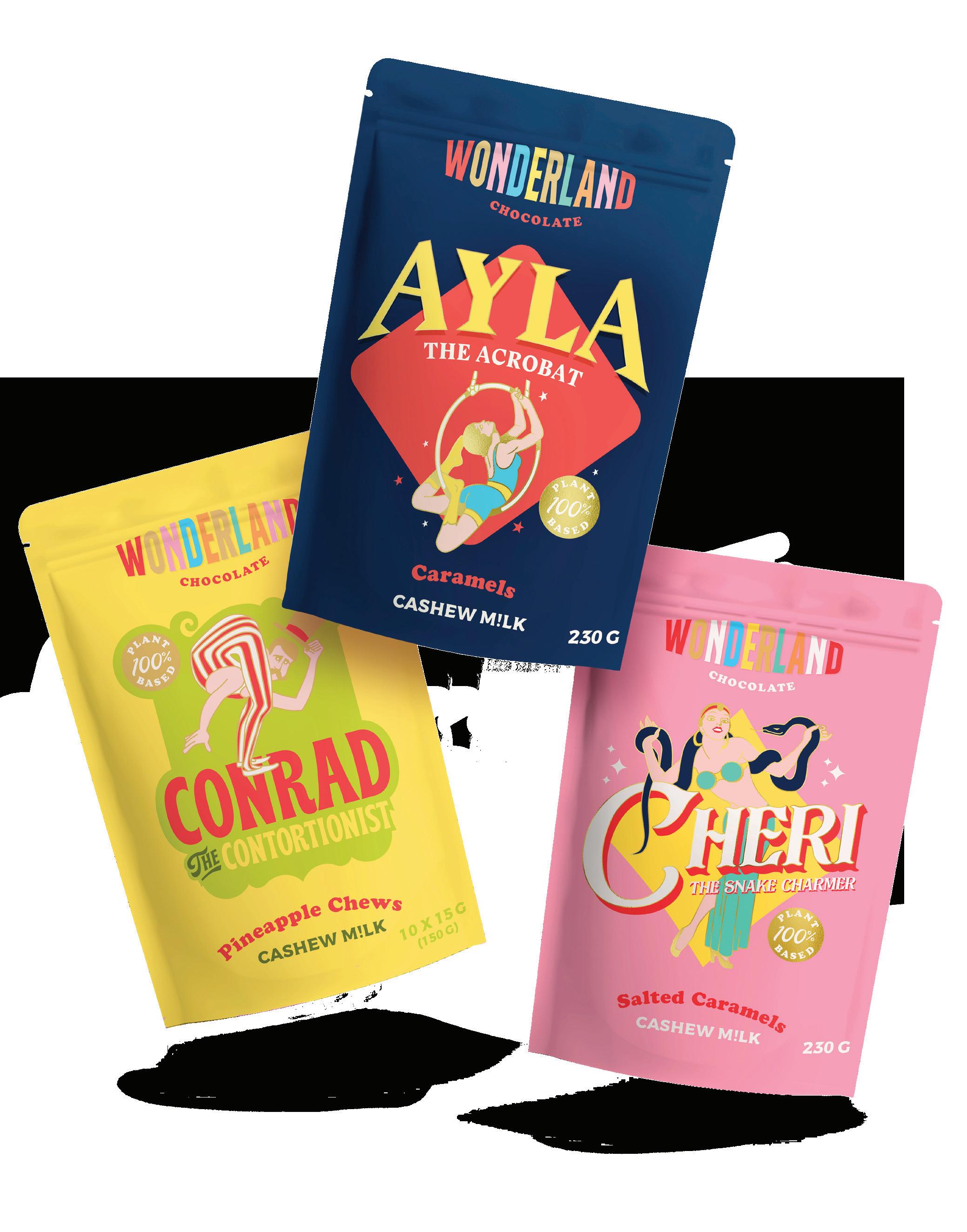
ntroducing delicious 100% plant-based caramels & chews, dairy-free and delicious

At ATMOsphere Australia 2025, the HVAC&R industry’s flagship international conference in APAC focusing on the most innovative refrigeration technologies and projects, The Trust for the Destruction of Synthetic Refrigerant’s Trustee Matthew Darby shared how New Zealand is stepping up its activities in the destruction of Synthetic Refrigerants (SRs) through the Cool-Safe product stewardship scheme, while supporting the shift to natural refrigerants.
The panel, which included key representatives such as Mike Nasser of the AAPT Group and Ron Polido of the Australian Built Environment Ratings System (NABERS), discussed developments in industry policies, standards and training that are impacting the uptake of natural refrigerants across Australia and New Zealand.
Yet while the sector travels towards increased use of natural refrigerants, there is still a damaging legacy of ozone-depleting and greenhouse gases to mitigate.
Darby, who is Managing Director of Cold Energy Technology and Trustee for the Trust for the Destruction of Synthetic Refrigerants, outlined Cool-Safe’s aims as leaders of the refrigerant product stewardship scheme in New Zealand.
“Our goal is ambitious: to reduce refrigerant emissions by 90 percent (from 2018 levels) by 2035.”
With a clear lens on the damage that has been and is still being caused by
SRs, Cool-Safe is setting a new standard for environmental stewardship in New Zealand’s HVAC&R industry.
The Cool-Safe scheme’s multipronged approach includes:
• Practical industry support to promote recovery and destruction of SRs, and
• Promotion of the importance of conversion from high-GWP to lowerGWP or full system replacements with natural refrigerants, and
• The development of a strong regulatory foundation supported by industry-wide training standards
Darby shared news of New Zealand’s own national refrigerant destruction plant, due for completion in late 2025, which will not only make destruction easier to manage logistically but will also positively impact the country’s carbon footprint by providing its first onshore facility.
Cool-Safe’s operational initiatives range
from updated training to incentives for destroying SRs through bounty and recovery cylinder collection schemes. Further action will be required to support the shift to natural products.
“Many technicians are still being trained solely on synthetic gases. That has to change, especially as flammable and lowGWP alternatives become the norm.”
While destruction of natural gases is not on the agenda at present, CoolSafe’s approach has an eye to a balanced future based on minimising damage and encouraging positive progress. The Product Stewardship Scheme supports national and global environmental initiatives through clear policy alignment, which fosters both government and, ultimately, citizen support.
“It was an honour to be invited to speak on this forward-thinking panel and to highlight what New Zealand is doing in the region. I look forward to many more of these critical discussions with key stakeholders in the future.”
The 26th of June marks World Refrigeration Day, a global awareness campaign dedicated to celebrating the essential role that refrigeration, air conditioning, and heat pump technologies play.
For supermarkets, this day serves as a timely reminder of the industry’s reliance on refrigeration for its operations, safety standards, and customer experience.
Established by UK refrigeration consultant Stephen Gill, World Refrigeration Day aims to highlight the often-overlooked sector that keeps the world running from the chilled cabinets in-store to the cold chains that span across borders.
Since its launch in 2019, the initiative has sparked worldwide recognition, with events and campaigns in over 150 countries highlighting the impact of refrigeration on health, comfort, and modern living.
In the supermarket environment, refrigeration is about far more than keeping products cold. It ensures food safety and freshness, reduces waste, and maintains hygiene. Without reliable temperature control, entire categories, including dairy and fresh produce, as well as meat and frozen
goods, would be impossible to offer.
This year’s theme, “Cool Skills”, celebrates the incredible range of skills that make modern life possible through refrigeration, air-conditioning, heat pumps, and sustainable heating technologies.
From hands-on technicians to engineers, trainers, researchers, and innovators, Cool Skills honours the human expertise that keeps our world cool, warm, comfortable, and sustainable.
Globally, the sector faces a growing demand for cooling and low-carbon heating, alongside an urgent need for trained professionals. In the context of climate action, energy efficiency, and human wellbeing, promoting and supporting these cool skills is more important than ever.
As the industry continues to innovate through energy-efficient systems, intelligent temperature monitoring, and carbon-conscious refrigeration upgrades, World Refrigeration Day is an opportunity to reflect on progress and look ahead. n





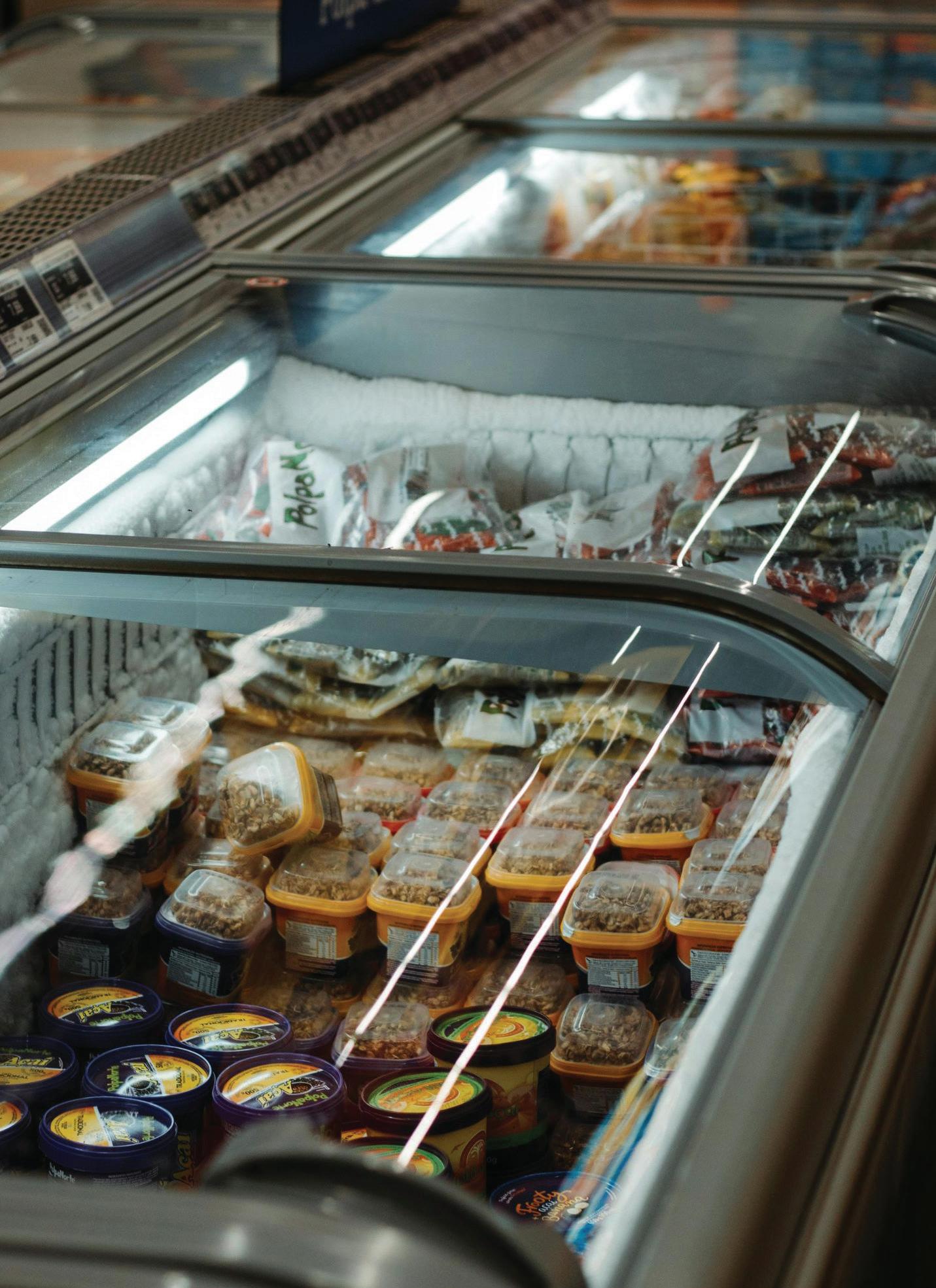
One of the issues with refrigeration in general, and refrigerants more generally, is that it is an invisible service. Companies supplying food typically don’t consider it unless there is a problem.

Most of the time the issues are local: a piece of equipment fails, or some other event happens, which impinges on the delivery of cold. Very occasionally, however, there are systemic issues – often economy wide – which impact on the food sector. We are approaching this situation in the lead up to summer.
Most refrigerants are subject to a phasedown due to their significant impact on the climate, international agreements and domestic legislation. R404A – used prolifically in this sector – is a significant issue as it has a very high global warming potential of 4,000 (meaning 1 kilo is equivalent to 4 tonnes of carbon dioxide).
Last year over half – in CO2 terms – of all refrigerants sold in Australia was R404A, even though commercial refrigeration is only one quarter of the market. Given there are increasing restrictions on refrigerant imports and a quota system this pattern will change.
Industry expectation is that R404A will increase massively in price over the next few months and may become impossible for some companies to purchase over the summer. This trend will only accelerate next year when the quota of total imports reduces by 10 percent.
All is not lost. Unusually, there are refrigerants (R448A, R449A. R452A) that can be used in existing systems that have a markedly lower climate impact. They do require a change from a mechanical to a TX valve, which will incur a small cost, but typically increases the energy efficiency of a system.
Stunningly, industry intelligence also indicates that most new systems being installed run on R404A even though there are systems available using ultra-low GWP refrigerant with improved energy efficiency at only marginally increased costs.
There are other things companies should do. The most careful companies track their leakage, have diligent maintenance regimes, and have loss rates under 10% annually. Yet we know that leak rates from commercial refrigeration average 15% per year. Supermarkets can reduce their costs and deliver benefits for the environment if they focus a bit more on their refrigeration systems.
Additionally, companies should consider all the merits of new equipment when the time comes to replace existing kit and not be drawn to the almost inevitable sentiment of replacing like-with-like.
The commercial refrigeration sector is in for a difficult time of increased prices and refrigerant scarcity. Smart companies will be able to minimize costs and disruption, while those that do not take preventative action will suffer.
Finally, Government action is expected at some point. Industry has been calling for restrictions on R404A for several years and it seems both inevitable and doubtful that Government will act soon given the scale of the forthcoming issue.
So whether you have considered issues around cooling in your daily business, or not, it is timely that you focus on refrigeration as a significant business risk.
Greg Picker is Executive Director of Refrigerants Australia. RA is the peak body representing companies that operate throughout the refrigerant supply chain. He can be reached at greg.picker@refrigerantsaustralia.org.







Saneet and Kishan Patel’s time as store operators provided them with invaluable insight into the critical pain points that retailers face on a daily basis.
Aconsistent frustration was the issue of stocking. Other distributors would often supply popular products, but their availability was inconsistent throughout the year.
Sourcing a wide variety of trending products proved to be a significant challenge, often forcing retailers to manage accounts with numerous smaller suppliers to achieve product diversity and meet customer demand.
This highlighted a substantial gap in the market for a wholesaler that could offer a wide range of products. The duo’s lived experiences shaped the core philosophy of Nalsun Imports: to provide an unparalleled range and variety.
“We now proudly import a diverse selection of products from over 20 countries, supplying them to a vast network of retailers throughout New Zealand,” said Saneet Patel, director of Nalsun.
"The biggest challenge by far remains outof-stocks. Empty shelves directly translate
to lost sales opportunities for retailers. At Nalsun, we tackle this head-on by maintaining significant inventory levels.”
A robust ERP system, coupled with advanced data analysis tools, has enabled Nalsun to forecast demand accurately and ensure sufficient stock to meet retailer needs.
Another common frustration for retailers, as highlighted by Kishan Patel, marketing director of Nalsun, was a subpar level of delivery service.
“We take pride in our Delivery In Full, On Time (DIFOT) rate of 98 percent. This is achieved by meticulously ensuring that we only allocate and sell inventory that is physically present in our warehouse at the time an order is placed,” he added.
Its state-of-the-art CRM and ERP systems underpin Nalsun’s commitment to rapid turnaround and delivery. All orders are transmitted to the warehouse in realtime, enabling immediate processing and
Continued on pg. 52




Ultimately, our vision is to instil such a high level of confidence in our picking and delivery that customers won't even feel the need to check their order upon receipt. This not only saves Nalsun time and resources, but also significantly benefits our customers.
Continued from pg. 51
significantly reducing delivery lead times.
Maintaining high inventory accuracy is crucial to ensure that every product sold is genuinely in stock, preventing delays and discrepancies.
Technology is central to the distribution model, with Nalsun currently exploring a cutting-edge pick-pack process that incorporates AI. This will enable them to ship orders with an even higher degree of accuracy while simultaneously reducing order processing times.
“Ultimately, our vision is to instil such a high level of confidence in our picking and delivery that customers won't even feel the need to check their order upon receipt. This not only saves Nalsun time and resources, but also significantly benefits our customers."
Beyond these operational aspects, consistency in service is paramount. Retailers often struggle with the uncertainty of supplier support.
To counter this, the Patels have implemented a structured program of routine store visits for retailers, who receive a planned visit schedule for the entire calendar year, fostering a predictable and reliable partnership.
"Our sales representatives act as true partners to store owners.”
Every fortnightly or monthly visit, the sales representatives meticulously study the store's performance and leverage insights into what's selling well in other stores with similar demographics. They also identify products worth trialling based on historical sales data.
“Crucially, our approach is never about pushing customers to buy volumes or SKUs that wouldn't typically perform well
in their specific store environment,” added Kishan Patel.
Nalsun also manages an international supply chain, with the Patels regularly attending multiple trade expos each year and visiting factories worldwide. This direct engagement enables them to collaborate closely with manufacturers to develop new product lines tailored for New Zealand consumers.
Additionally, it ensures that products and labels comply with New Zealand regulations, are manufactured to high standards, and meet the unique tastes and needs of Kiwi consumers, including rigorous quality assurance checks.
Looking ahead, the Patels aim to continue fostering strong relationships with manufacturers, which is crucial for ensuring a consistent and uninterrupted supply.
“For us, it all comes down to our familylike company culture. We treat all of our staff like family, and that fosters a strong sense of loyalty. We also make it a priority to promote from within. Our team takes turns cooking lunch on-site, which is provided to everyone daily,” they added.
“Beyond career progression, we focus on creating a positive daily environment. We often prioritise the needs of our team members over the immediate needs of the business. This approach has proven incredibly valuable in ensuring loyalty, retention, and ultimately, boosting productivity.” n





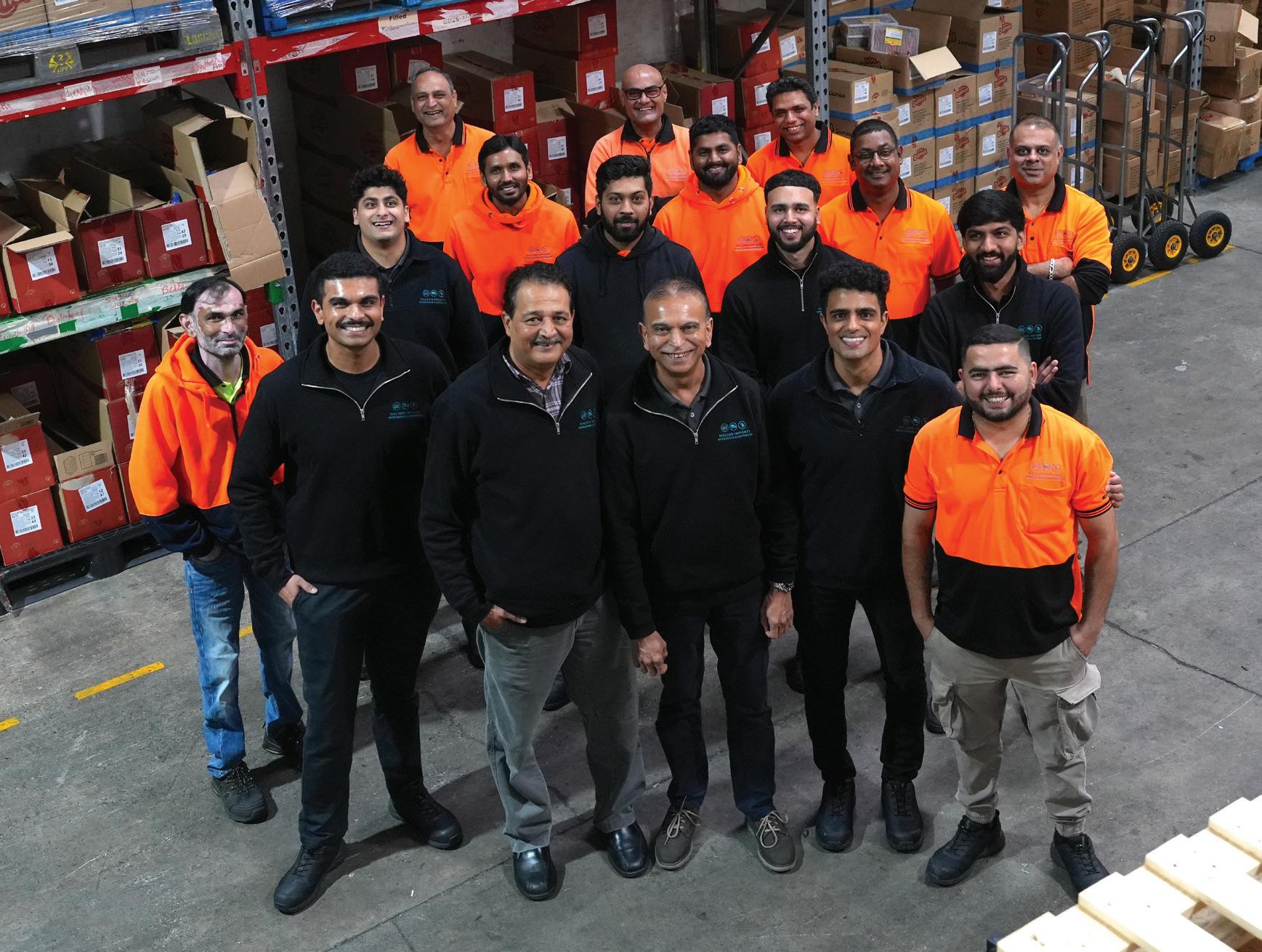




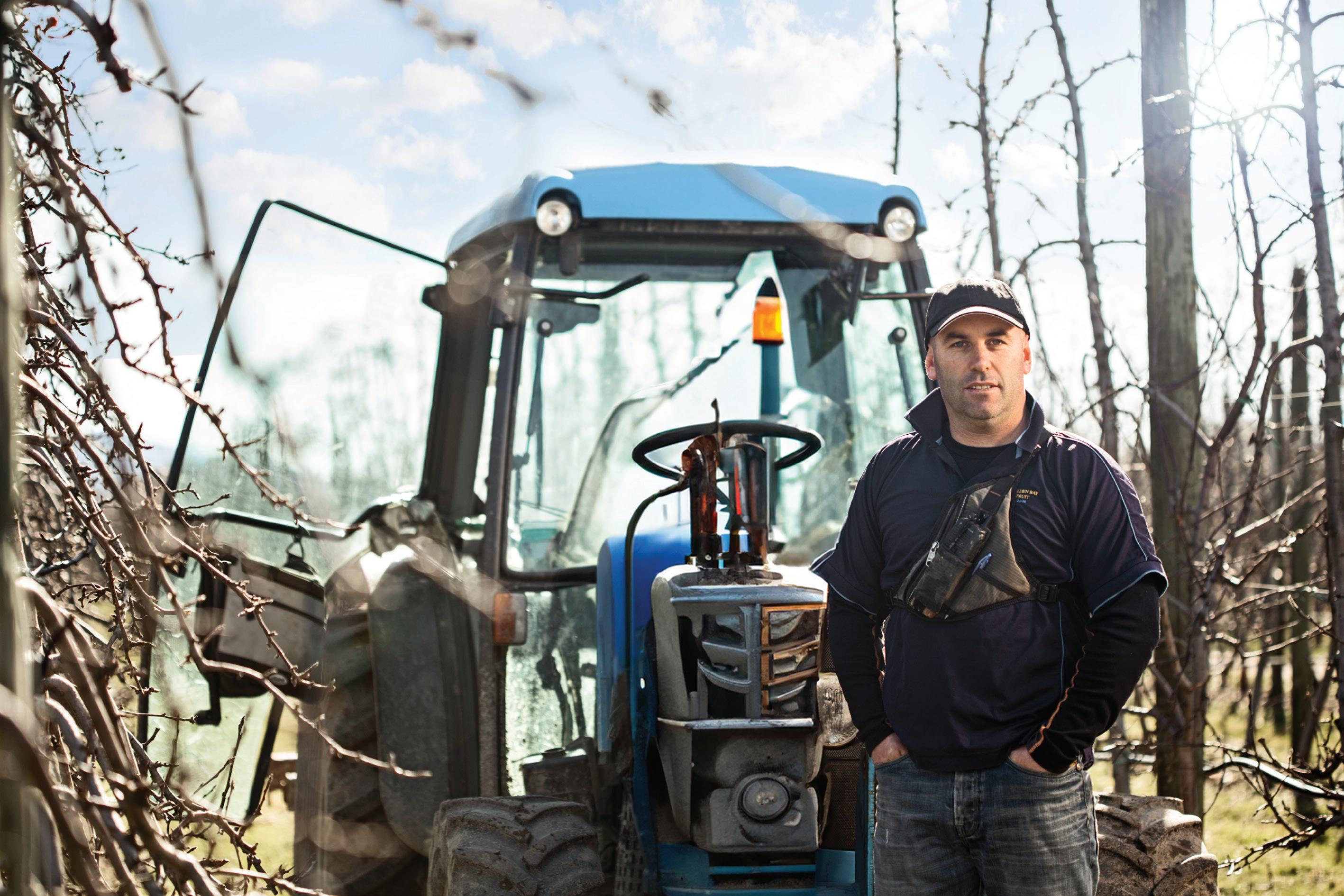
“We take responsibility for every step of the fruit's journey.”
Based in Motueka at the top of the South Island, Birdhurst Orchards started with just 15 acres of tobacco and a few dozen head of cattle. Today, it has grown into a large apple and kiwifruit orchard, with the Wilkins family involved in every part of the process, from growing and packing to marketing and export.
“What hasn’t changed is our focus on looking after the land and the people working on it. Our values are pretty simple: grow good fruit, look after our people, and leave things better than we found them,” said Rhys Wilkins, who comes from a long line of growers.
His father and uncle established Birdhurst, which has been in the family ever since. After three generations on the same land, Wilkins feels a strong sense of responsibility to carry on the legacy and to keep building and evolving it for the future.
In terms of the natural landscape and location, the town of Motueka gets sunny days, cool evenings, sea breezes off Tasman Bay, and good soil on the plains. This combination has given Birdhurst Orchards’ apples and kiwifruit great colour, flavour, and texture.
The climate is temperate and mild, but with enough seasonal change to keep the trees healthy and productive. The region
also has a wide variety of soil types, from heavier clays to sandy loams, so every block receives slightly different treatment.
Wilkins said every day was different depending on the season, with a good mix of hands-on growing, business planning, and team management.
“In the lead-up to harvest, we’re walking the blocks, checking crop development, organising teams, and managing logistics. It’s all hands on deck during picking in the orchard and packhouse. Other times of year we’re pruning, replanting, or planning future developments.”
He is also on the board of the export side of the business, which has required
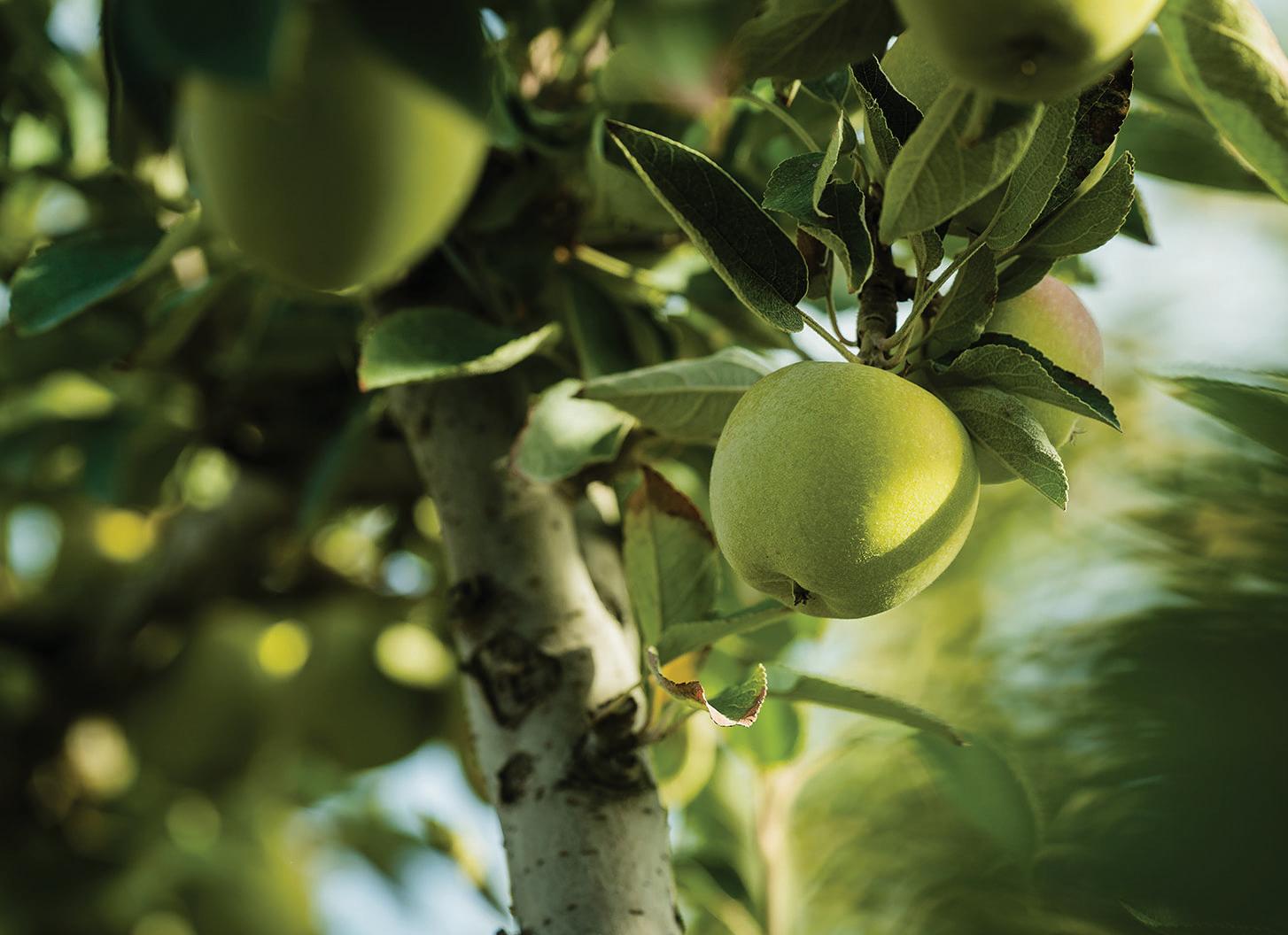

In the lead-up to harvest, we’re walking the blocks, checking crop development, organising teams, and managing logistics. It’s all hands on deck during picking in the orchard and packhouse. Other times of year we’re pruning, replanting, or planning future developments.
maintaining an understanding of the various markets the orchard sells to.
The farm is vertically integrated, which means the orchard has complete control from growing and packing to marketing its fruit, which Wilkins was proud of as it allowed them to ensure consistent quality, build stronger relationships with customers and respond quickly to challenges.
One major challenge that Wilkins mentioned was climate change. Growers have observed more volatile weather, bigger swings between dry spells and heavy rain, more late frosts, and changes to traditional flowering patterns.
“It’s making growing more unpredictable and riskier. We’re looking at everything from frost protection to smarter water use and crop selection to adapt.”
On Boxing Day 2020, a 30-minute hailstorm ripped through the region, wiping out 60 percent of the orchard’s apples and 97 percent of its kiwifruit. Wilkins said it was a huge blow, emotionally and financially.
However, they remained resilient and decided to turn something negative into an opportunity. This led to the launch of a brand called Stormy Fruit to help find a home for some damaged but still goodquality fruit.
Since that natural disaster, almost five years ago, they have installed hail netting across a large portion of the orchards and continue to do so. They have also put more effort into sustainability initiatives, starting to track carbon across the business and trying to improve environmental practices.
“That experience taught us a lot about resilience, innovation, and adapting quickly when things go wrong.” n




The many wisdoms of a former street kid turned internationally recognised scientist and entrepreneur will be shared at this year’s New Zealand Beverage Council conference.

Sir Ray Avery (also bestowed with a Knight of the Realm and inaugural New Zealander of the Year honours) will be one of the keynote speakers at the October 16 conference.
Also presenting a keynote address will be Nicola O’Rourke, a director, investor, and consultant with more than 20 years of experience in a range of disciplines across the food and beverage industry.
Both are extraordinarily well placed to speak to the conference’s innovation theme, said NZ Beverage Council co-chair Grant Jeffrey, and securing them as speakers has been a coup.
Sir Ray Avery, GNZM, is an internationally recognised, charismatic, and entertaining public speaker who challenges everyone to “Dream Big” and develop game-changing, disruptive thinking strategies. It’s an approach that has delivered for this successful scientist, author, inventor, entrepreneur, philanthropist
and start-up investor.
The multi-award winner uses disruptive technology and thinking to develop game-changing businesses and provides companies with the tools to create a culture of innovation.
His career path includes being a founding member of the Auckland University School of Medicine, Department of Clinical Pharmacology and former Technical Director of Douglas Pharmaceuticals. His philanthropic work has included developing an automated manufacturing process to make cataract surgery accessible to the poorest of the poor and the development of supplementary food bars to address protein-energy malnutrition in the developing world. That is, of course, a mere taste of the Sir Ray Avery success story.
Also set to enthral at the conference is O’Rourke’s address, which will speak to her passion for the New Zealand food and beverage industry and to her desire to foster our country’s entrepreneurial spirit and investment in innovation. Her longheld belief is that New Zealand’s future lies in value over volume, and investing in telling our story and growing innovation through brands is the fastest way to win with consumers.
Throughout her industrious career, she has launched over 200 products into global markets. She is the co-founder and managing partner of Founders Advisory, which invests in and advises branded Consumer Packaged Goods (CPG) businesses with the aspiration to scale at speed across international markets. She holds board and advisory roles across multiple CPG export and F&B sectors for some of New Zealand’s most loved brands.
The line-up of conference speakers will also include Mintel account director Nick Campbell and James & Wells lawyer Ben Cain.
Jeffrey said there’s great relevance in this year’s chosen conference theme, given the non-alcoholic beverage industry in 2025 is characterised by a dynamic landscape of innovation.
“That dynamic landscape is driven by a confluence of health and wellness trends, the sober curious movement, and technological advancements.”
He added that the market continues to exhibit strong growth, presenting significant opportunities for companies that can effectively adapt to evolving consumer preferences.
“From the plant-based revolution and the sophistication of mocktails to the focus on gut health and the integration of functional ingredients, innovation is forging change across product categories.”
Furthermore, he said, the advancements in sustainable packaging and the strategic use of digital marketing and technology are reshaping how these products are produced, marketed, and consumed. It’s an exciting time in the non-alcoholic beverage sector.
The one-day conference will begin with registration at 8.30 am and conclude with a dinner and entertainment to be held at Tote on Ascot, Ellerslie Event Centre. Non-NZBC members are free to join the members at the event. Tickets are now available at www.nzbeveragecouncil.org.nz/events
The conference organisers would like to thank the following sponsors for their ongoing support of the NZ Beverage Council: Platinum Sponsors – Sensient Technologies, Gold Sponsors – James and Wells and NZ Sugar, and Silver Sponsors –Alchemy Agencies and RD2 International Ltd. www.nzbeveragecouncil.org.nz
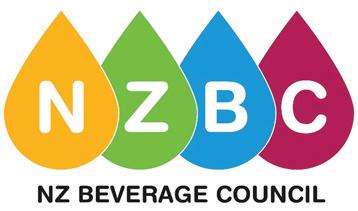




Linda McWilliam, Director of PODSALESNZ, founded the business in 2012 after relocating to New Zealand. With around 30 years of experience in sales and FMCG, she sought to determine if her skills and business contacts could be leveraged to assist New Zealand companies in exporting to the USA.

20minutes with
Over the years, she has built a comprehensive network, bringing together all the components needed to launch a product, including direct contacts in PR, retail, distribution, and warehousing.

Linda McWilliam Director PODSALESNZ
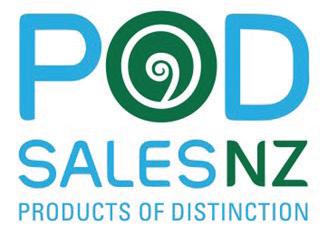
PODSALESNZ has become a one-stop solution, enabling various businesses to fasttrack their products to market within just a
“The key is understanding what buyers in the USA are looking for in terms of product innovation, promotions, and costs, and presenting in a way that answers all their questions before they ask,” said McWilliam.
“Preparing everything before you present saves time and money, reduces anxiety, and leads to a greater chance of getting approved. I’m very pleased to say this formula is working.”
McWilliam believed New Zealand produces some of the most amazing artisan products and that many of these can be successful in the USA if launched properly.
But it starts with research. Questions such as: Do they need your product on the shelf? What need or problem does it solve? Who might they remove to add your range? What will you do to support and drive sales? All need to be answered first.
It’s also crucial to tailor plans to different regions within the USA, as each market has distinct characteristics.
Current trends in the US include visible certification labels on packaging, especially those indicating non-GMO status, which has become almost essential. These provide consumers with immediate insight into how a product is grown, processed, and packaged.
“If you’re organic and can get USDA Organic certification, that’s a very strong advantage on the package. Other
certifications are gaining traction as well, but USDA Organic and non-GMO have the most significant impact. Of course, all of these come with costs.”
Product categories with the strongest growth potential in the USA include supplements and the broader “better for you” segment, particularly when they feature highquality New Zealand ingredients; however, any product that has a meaningful “point of difference” is worth exploring.
“New Zealand as an origin story is very compelling. Add certifications and sustainable packaging, and you have a strong quality and value proposition,” added McWilliam.
“Stand out in every way possible. Get feedback on your packaging and pricing before you finalise anything. Seeing what your product looks like on the shelf, next to competitors, can show you what needs to be highlighted or refined.”
For premium or niche products, the packaging must communicate the "why", helping consumers understand and validate the pricing.
Another strategic consideration is establishing production facilities in the United States. If the product is scalable, local production is a viable option. It enables competitive growth and broader national distribution.
PODSALESNZ has already helped six New Zealand brands successfully launch and grow in the USA, including Pic’s Peanut Butter and Heilala Vanilla.
“It can be a tricky road with new products, and many new items fail. That’s why building a strong foundation from the beginning is essential,” said McWilliam.
“There’s no such thing as an overnight success. It takes time and determination, so don’t be in too much of a hurry.” n
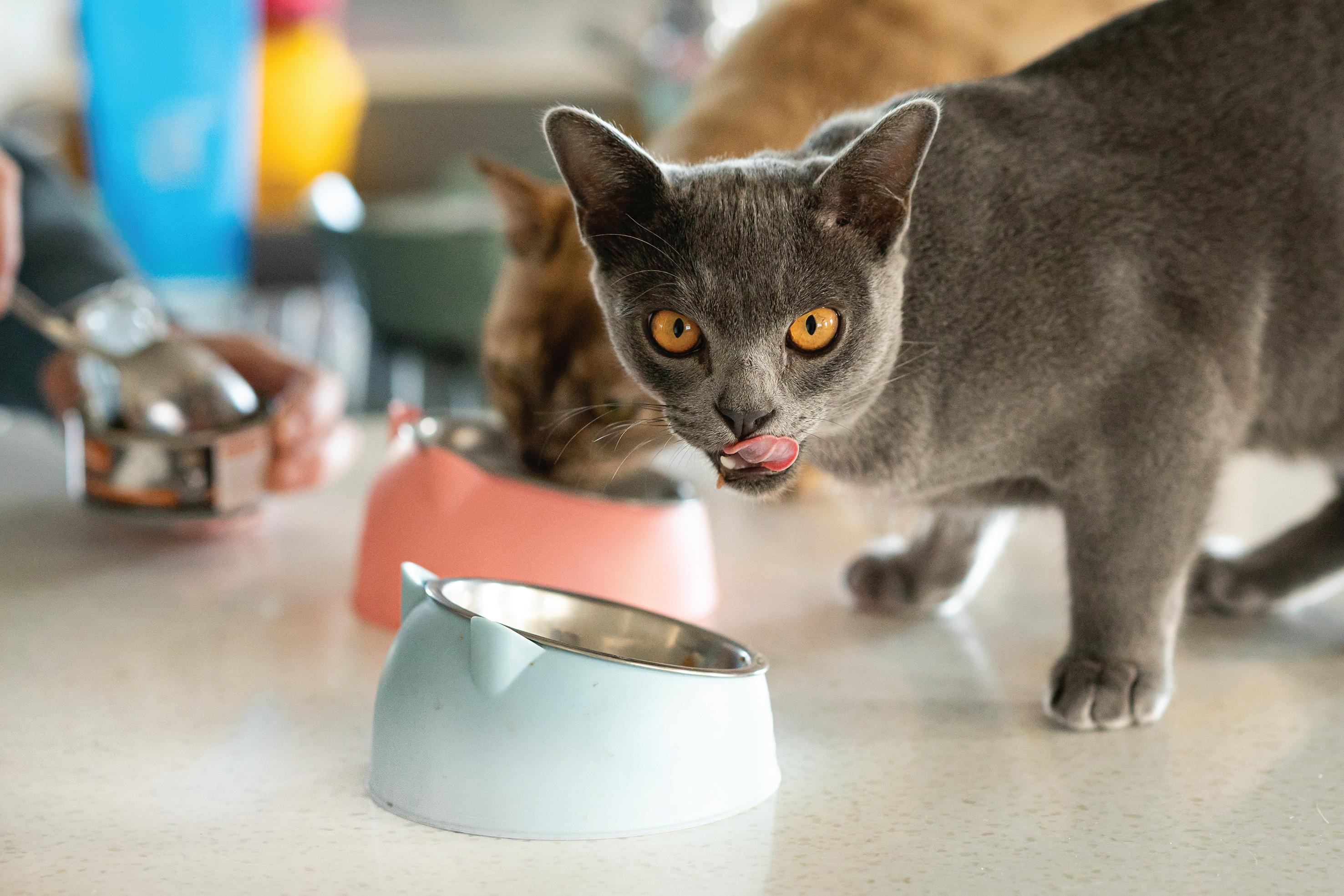
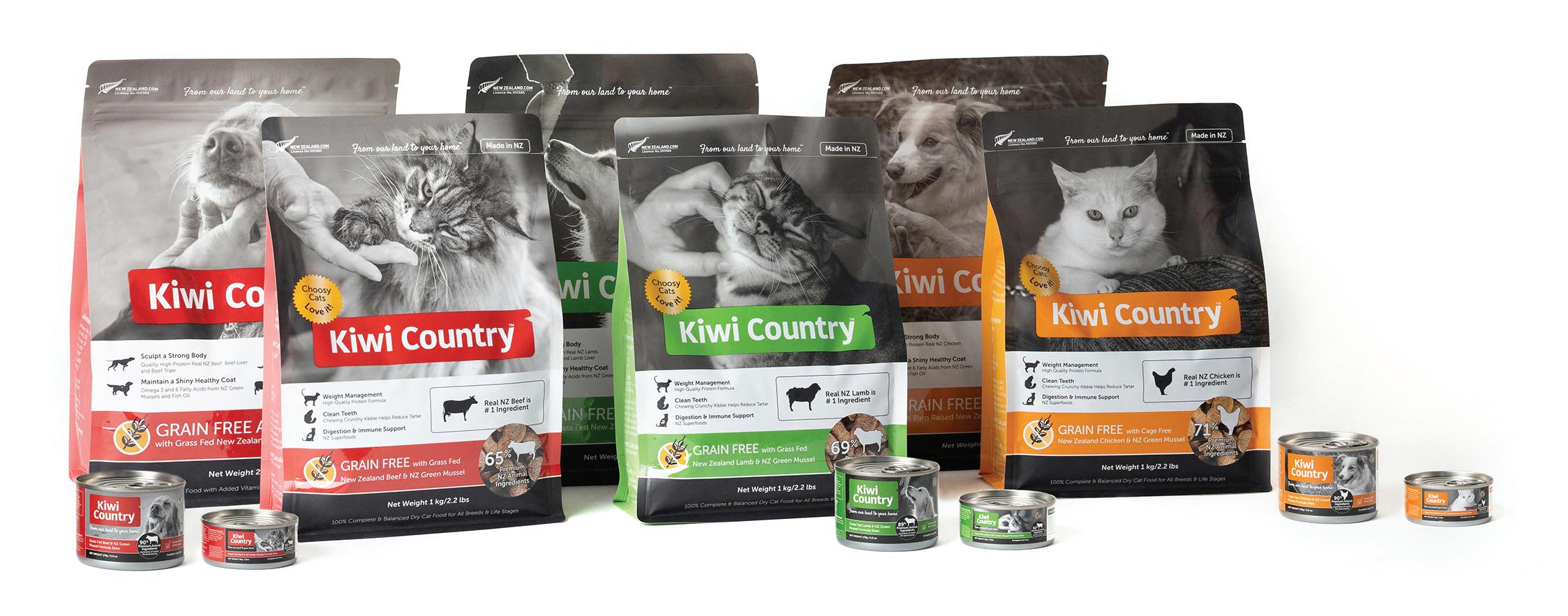
As the cost of living continues to weigh on Aussie households, shoppers are approaching this year’s end-of-financial-year sales with a more considered mindset. Gone are the days of impulse buys and splurging for the sake of a discount. Instead, people are planning ahead, setting strict budgets and weighing up their options more carefully than ever before.
But while spending habits may have changed, EOFY remains a golden opportunity for retailers to connect with motivated shoppers. The difference in 2025 is that success now hinges on how well retailers can bridge the gap between digital discovery and in-store conversion. This year, smart retailers are using digital platforms not just to promote offers but to drive foot traffic and get more out of their bricks-and-mortar footprint.
The new shopping journey: online discovery, in-store action
Aussie shoppers are blending online research with in-person buying in a way that is reshaping the retail experience. Many begin their journey on their phones, checking digital catalogues, searching for the best deals and confirming store information. But when it comes to making the purchase, they often head in-store. This is especially true in categories like electronics, homewares, whitegoods and fashion, where confidence in the product is key.
At Shopfully, we see this hybrid
behaviour play out daily. Consumers might spend hours researching online, but the final step is often a visit to a local store. Whether it’s to avoid shipping delays, confirm product quality or take home a purchase immediately, there is still a strong pull towards physical retail.
Digital tools are playing an increasingly important role in supporting this process. Mobile-first experiences that help consumers locate nearby deals, confirm stock availability and check store hours are no longer optional. Retailers who invest in this kind of seamless online-to-offline experience are seeing greater engagement and stronger conversions.
Local convenience is driving store choice
Shoppers today are not just looking for a deal. They are also looking for convenience. With fuel prices still high and daily schedules stretched, most people are not willing to travel across the city just to save a few dollars. That means location has become a powerful factor in the decision to visit a store.

Retailers who make it easy for shoppers to find store-specific offers and understand what’s available nearby are getting the edge. Location-based advertising, geo-targeted mobile campaigns and interactive catalogues that highlight nearby stores are all helping to meet shoppers where they are. When a customer knows that the product they want is just around the corner, they are much more likely to follow through.

This is also shifting the way we think about retail media. It is not just about reaching people online. It is about influencing real-world decisions. By making digital content relevant to a shopper’s location and needs, brands can guide them through every step of the journey and build stronger in-store outcomes.
Making EOFY a launchpad for smarter retail
EOFY is more than just a short-term boost. It is a valuable opportunity to test new approaches and build momentum for the months ahead. Retailers who use this time to connect online discovery with in-store action will be better prepared for upcoming shopping events.
Now is the time to ask the right questions. Are you helping shoppers find your deals quickly? Are you making it easy for them to understand where they can buy nearby? Is your mobile experience doing the heavy lifting it needs to? Small improvements in these areas can have a big impact, not just for EOFY but for the rest of the retail calendar.
At Shopfully, we believe physical stores still play a crucial role in the path to purchase. When digital tools are used to bring people into stores, everyone benefits. As EOFY ramps up, the opportunity is clear. Use online to inform and influence, but convert in person. That is how retailers can turn browsers into buyers and build stronger results in 2025 and beyond.


pet food is evolving, and it's big business

The global pet food category is no longer just a functional aisle. It is a destination. Driven by innovation, wellness trends, and sustainability values, dog food and treats are now mirroring the sophistication of the human food industry. Supermarkets are taking notice, recognising the opportunity to cater to increasingly discerning pet owners seeking quality, purpose, and choice.
In 2025, personalisation is front and centre. Customised diets based on breed, age, activity level, and health conditions are becoming the norm, supported by data from DNA testing, vet consultations, or online profiling. These tailored options reflect a broader push toward precision nutrition and open up premium shelf space for retailers looking to maximise returns on high-value SKUs.
Fresh, freeze-dried, and subscriptionbased meals continue to gain traction. With their balance of convenience and quality, they seamlessly integrate into modern lifestyles, offering both shelf appeal and in-store differentiation. At the same time, functional nutrition is fuelling demand, with ingredients like turmeric, probiotics, omega-3s, and collagen becoming standard fare in treats and daily diets alike.
Product innovation is global and it is fast-moving. In Canada, COOKIE PAL
Soft Baked Bites offer organic, human-grade ingredients like blueberry and pumpkin or peanut butter and apple, all wrapped in plastic-neutral packaging. In the United States, NutriSource has developed an entire treat ecosystem with options from Little Bites to Nutty Butter, each crafted with real protein and wellness outcomes in mind.
Freeze-dried specialist Snaggletooth has gone micro, with under-one-calorie treats made from single USDA-certified ingredients, perfect for training or portion control. Dogswell's treat range targets specific health needs, such as mobility and digestion, while Buddy Softies deliver pantry-scented peanut butter indulgence in eco-friendly resealable jars.
And here in New Zealand, local creativity is rising to meet the moment. Bone-ifide Dog Bikkies brings a home-baking twist to the pet category with a beef-flavoured, additive-free biscuit mix. Designed for engagement and

reward, the kit comes complete with a boneshaped cookie cutter and makes up to 50 nutritious, fun-shaped treats. It is a product that taps into the same consumer instincts behind meal kits and home baking trends, with a tail-wagging twist.
Supermarkets are also sitting on a goldmine of insight, thanks to existing loyalty card data. With most major banners already tracking consumer purchase behaviour, adding a pet category breakout would be a simple but powerful extension and relatively easy to sell the opportunity to a brand owner. Shoppers who regularly purchase pet food or treats could automatically trigger a reward, such as a sample, voucher, or personalised treat sent to their furry companion. It is the kind of targeted incentive that builds loyalty and generates goodwill. Forget the free baking dish. For a pet lover, getting a surprise gift for your pet regularly could be the loyalty upgrade that wins hearts.
There is also growing potential in integrating third-party delivery platforms or click-and-collect models, giving customers access to a broader catalogue of pet food, accessories, and health products beyond what can be physically stocked in-store. A customer doing their weekly grocery shop could add larger or specialist pet items, which are fulfilled directly from a warehouse or supplier, creating a seamless, one-stop shopping experience for pet food and accessories. The convenience, coupled with the growing expectation of extended choice, positions supermarkets as serious players in the pet retail space.
And who is driving this shift? Enter the DINKWADs – couples with "double income, no kids" but "with a dog." These couples are animal lovers and consider themselves fur-parents to their beloved pets. This generation is channelling disposable income into their pets with the same care
Bone-ifide Dog Bikkies brings a homebaking twist to the pet category with a beef-flavoured, additive-free biscuit mix. Designed for engagement and reward, the kit comes complete with a boneshaped cookie cutter and makes up to 50 nutritious, fun-shaped treats.
once reserved for children. Move over baby aisle - the action is now in the pet aisle. These consumers want the best, are willing to pay for quality and innovation and respond to brands that will treat their pets like valued family members.
Sustainability continues to influence purchasing decisions, with eco-conscious formats and ingredients such as insect protein and recyclable packaging gaining momentum. Transparency remains a key differentiator as brands invest in traceability and ethical sourcing, and consumers
demand clean labels they can trust. With the sector rapidly evolving, the opportunity for supermarkets is clear. Pet owners are spending more, seeking out specialised products, and treating their dogs as full family members. That means the right assortment of innovative, functional, and sustainable products can drive both traffic and loyalty. For retailers, the pet food aisle is no longer just about basic kibble; it's about offering a diverse range of options. It is about connection, care, and capitalising on a fast-growing category. n
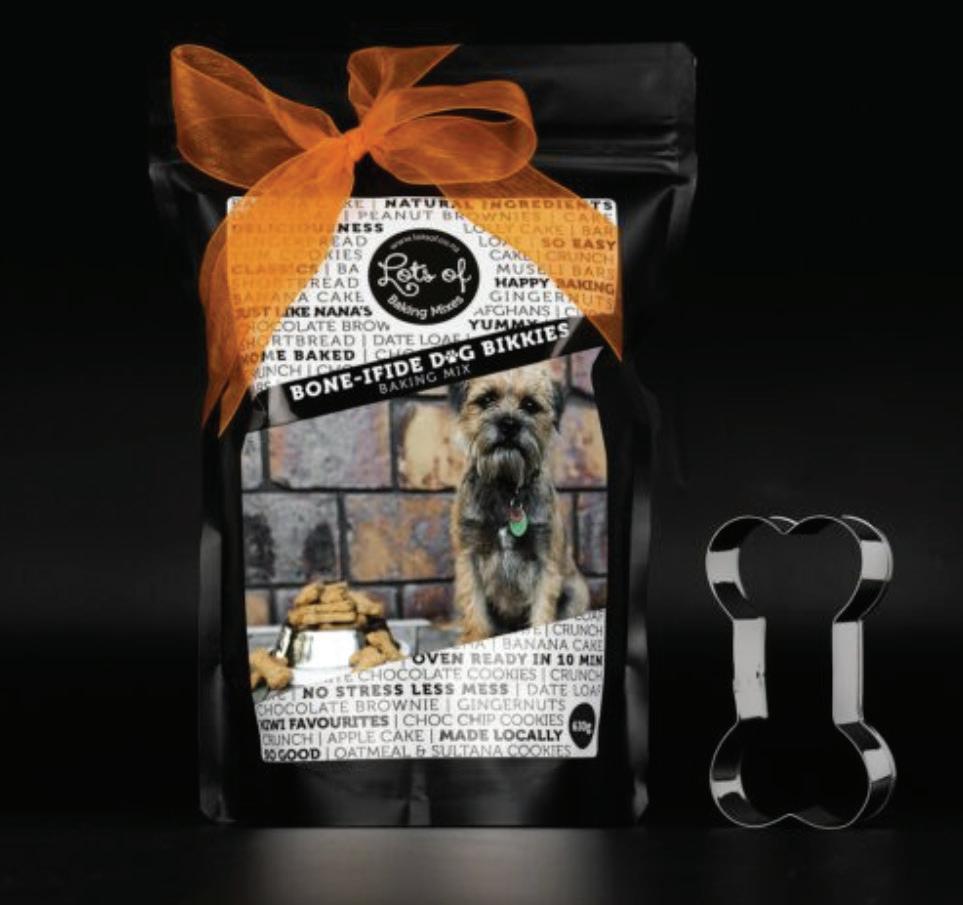





Global Pet Expo 2025 showcased an impressive array of innovations, highlighting the rapid evolution of the pet care industry.
The pet industry continues to thrive, with increased spending, shifting shopping patterns, and the emergence of new product categories reshaping the landscape. Notably, cat ownership is leading this growth, reflecting shifting household preferences and lifestyle changes.
Despite economic pressures, pet parents remain committed to their furry companions, prioritising quality care and essential products. In response to inflation, consumers are actively deal-hunting, turning to discount stores, and closely monitoring brand prices to stretch their budgets.
• Brick-and-Mortar vs. E-Commerce
Traditional retail channels remain strong, with over 50 percent of pet food buyers still preferring to shop in brick-andmortar stores. However, the continued rise of e-commerce, primarily through subscription-based models, signals further expansion into digital channels. With the convenience of auto-replenishment and personalised recommendations, online platforms are poised to gain additional market share from in-store purchases.

• TikTok’s Influence on Pet Purchases
TikTok has emerged as a powerful force in the pet care space, influencing product discovery and driving direct purchases. Consumers increasingly turn to the platform for pet-related content, engaging with viral trends and influencer recommendations.
This presents a significant opportunity for pet brands to leverage crosspromotional strategies, influencer partnerships, and in-app purchasing features to reach highly engaged audiences.
Influencer pets are playing a larger role in shaping consumer purchasing behaviours, as social media-savvy pet parents seek to replicate the lifestyles they see online, particularly for Gen Z. Brands are capitalising on this trend by partnering with pet influencers and leveraging user-generated content to build trust and engagement.
One of the strongest growth areas in the market is functional pet food and benefitbased formulations. Products designed for gut health, joint support, and longevity are outpacing the broader category.
Additionally, sustainability is becoming a key differentiator, as consumers seek responsibly sourced ingredients and ecofriendly packaging. This trend presents an opportunity for manufacturers to align with the evolving priorities of pet parents.
Pet supplements are gaining traction, with expanded offerings in categories such as immune support, calming aids, mobility enhancement, and collageninfused formulations. Novel ingredients, including mushrooms and colostrum powder, are gaining popularity for their perceived health benefits.
As the humanisation of pets continues, brands are innovating with new formats and ingredients that mirror human food trends. Baby food-style pouches, frozen pet meals like bone broth popsicles, and exotic protein options, including duck, antelope, and white fish, are becoming more mainstream. These offerings cater to pet parents who prioritise premium, highquality nutrition for their animals. n





A new horticultural initiative is set to transform New Zealand into a commercial catnip producer, paving the way to export locally made pet wines to international markets.
Catnip (or Nepeta cataria) was introduced to New Zealand as a garden herb in 1870 and has been seen to positively impact mood in around two-thirds of cats while helping to soothe anxiety in dogs.
Global demand for catnip has risen, driven by pet product manufacturers and natural health industries. The catnip essential oil market alone is projected to grow by 5.8 percent annually by 2030 to reach NZD 400m.
Kiwi startup, Muttley’s Estate, is believed to be the world’s first manufacturer to have created a shelf-stable pet wine that can be stored for up to 12 months. The breakthrough has made large-scale production and export more viable.
John Roberts, Muttley’s Estate director, said catnip is a resilient crop that has adapted
to grow well in New Zealand’s temperate climate and well-drained soils since it was first introduced. The commercial-scale farming of catnip will further diversify New Zealand’s horticultural sector.
Roberts added that with a growing domestic footprint, the company has now set its sights on the lucrative US market, where pet owners are increasingly seeking premium, novelty products for their furry companions.
“One of the key advantages of catnip is that even a small crop yields enough to produce a batch of pet wine, allowing us to create a high-value product without requiring extensive land investment,” he said.
“With the growing international interest in catnip and the ‘humanification’ of pet diets, it was a natural extension to explore the development of a premium beverage for


pet owners to celebrate with their pets.”
Since launching the range in New Zealand less than a year ago, Muttley’s Estate has already signed over 40 retailers and developed a strong direct-to-consumer channel presence.
We were overrun by canines wanting to taste the pet wine, and it demonstrated the positive response across various breeds. We’re now working with New Zealand Trade and Enterprise to identify distributors in overseas markets.
“We believe the reputation of New Zealand’s wine sector in North America will help us establish an entry into this market and we now actively looking for US distributors.”
Roberts added that research showed the impact of chronic anxiety and stress among pets has become more prevalent due to a combination of urbanisation, multi-pet household dynamics, ongoing issues relating to the pandemic and shifting lifestyles.
International studies have found that almost a third of dogs show sensitivity to noise, with fireworks a particular problem. Meanwhile, 29 percent of dogs are said to be highly fearful, and 14 percent show highly problematic aggression.
Symptoms of anxiety in cats are often more subtle. Yet, owners reported signs of tail flicking, avoiding eye contact, and shifting head/body away repeatedly (every week or every other day) or more often than usual.
“We created the range to help alleviate some of the modern stressors on pets, but unlike conventional wines, our products
contain zero alcohol.”
The range offers multiple 'varietals,' each featuring a different concentration of catnip: lighter whites such as the Champawgne appeal more to cats, while the deeper blends, such as the Purrno Noir and Pawt, are popular with dogs.
Muttley’s Estate is already selling through veterinary clinics and pet retailers and has also held tasting events at local dog parks.
“We were overrun by canines wanting to taste the pet wine, and it demonstrated the positive response across various breeds. We’re now working with New Zealand Trade and Enterprise to identify distributors in overseas markets.”
Roberts would love to see all the fields of catnip grown right here. The idea of turning a small backyard experiment into a nationwide horticultural endeavour and sharing it with pet lovers worldwide is fascinating.
The company has also been investigating the potential of catnip for human consumption, with trials underway to determine its suitability for the human market.
“Catnip is related to the mint family, so it is safe for humans. We're working with food technologists to explore the possibilities.”





As pets become integral family members, their owners have focused on providing diets catering to their unique needs.
Gut health has emerged as a key focus, with pet food claiming digestive and gut health accounting for 24 percent of launches over the past year. These claims have gained popularity online, creating positive sentiment and a broader reach among pet owners.
The number of patent publications on pet food for gut health is 63 in the past year. This trend has increased over the past four years, indicating a growing demand among pet owners for pet food with gut health claims.
Supplements have gained popularity in the pet food market over the past year, with 31 percent of cat owners and 30 percent of dog owners providing gut health supplements to their pets.
Microbiome is the fastest-growing gut health claim in the global pet food market. This has indicated a growing awareness among pet owners of the role of pet health
and digestion. Interestingly, most pet food launches highlight immune health and protein claims.
Brands have partnered with experts to produce microbiome-based pet food in the pet food market. This includes brands such as Hill’s Pet Nutrition and ActivBiome+. Pet food focusing on holistic health and endorsed by veterinarians has also gained attention.
For instance, Natural Balance partnered with veterinary experts to launch products that support digestion, skin and coat, heart, bones and teeth, immune, and hip and joint health. Fi launched vet-formulated powders that leap traditional supplements and elevate pets’ health, including digestion.
DSM Firmenich AG is the leading patent holder in the global pet food market for gut health. Their patents focus on additives designed to modulate the growth of gastrointestinal microbes. Other notable patent holders include Mars Inc., Blue Buffalo Enterprise Inc., Shanghai Fubei Pet Products Co., Ltd, and China Agricultural Univ.
The growing focus on gut health in pet food presents opportunities for innovation in the global pet food market. Advances in probiotic and prebiotic formulations offer
opportunities for more targeted solutions that cater to pets’ unique needs. Nutritional strategies supporting the gut microbiome, combined with emerging technologies, can help pet owners provide optimal care.
At-home testing kits can encourage pet owners to create tailored diets that address their pets’ specific gut microbiome requirements, thereby enhancing the pet food market.
Heat-stable postbiotics in dry and shelfstable pet food can provide consistent digestive health benefits without compromising product stability, making them suitable for broader applications.
The integration of fermented superfoods, such as kombucha extracts and prebioticrich fibres like chicory root or pumpkin, can help diversify gut flora and improve nutrient absorption. AI-powered systems can be used to analyse pets’ health data to recommend or develop customised probiotic and prebiotic blends for enhanced digestion.
Pet owners have made their pets' health a priority, with gut health being the key focus area in the pet food trends. Brands are likely to partner with veterinarians to produce products that support immunity and microbiome nutrition, improving pets’ gut health and overall well-being. n
Shopify's latest data paints a clear picture of shifting consumer behaviour in the pet care space, with health and wellness products showing the strongest momentum.

Rather than treating pet needs as an afterthought, shoppers are prioritising items that support long-term wellbeing and preventive care. This trend is fuelling growth across several specialised categories and suggests a more informed, intentional approach to how consumers care for their animals.
Pet Flea and Tick Control have seen the most dramatic increase, jumping 341.3 percent year-on-year. This spike indicates a growing awareness of seasonal and environmental risks, as well as a desire to proactively address common issues before they arise.
Likewise, interest in Pet Vitamins and Supplements has climbed by 95.2 percent, as owners seek out daily support for immunity, digestion, joint health, and overall vitality. Demand for pet medicine is also on the rise, up 76.1 percent, while prescription cat and dog food have grown by 71.3 and 69.9
percent, respectively. These categories reflect a growing appetite for condition-specific solutions and a willingness to follow more structured, health-based regimens at home. This shift marks a noticeable departure from basic, convenience-driven purchasing habits. Today's shoppers are becoming more proactive, viewing their pets' health through the same lens as their own. For retailers, it's a sign to diversify their offer beyond general pet food and into targeted, higher-value product lines that cater to emerging needs. There's also scope to provide guidance and build trust through educational touchpoints, loyalty schemes, and seamless access to harder-to-find items via online or extended-range platforms.
As pet care continues to align more closely with human health trends, brands and retailers that invest in wellness-led, specialised assortments are likely to see sustained interest and deeper customer engagement. n





At Foodstuffs North Island and Foodstuffs South Island, the safety and quality of the food we supply to New Zealanders is our top priority.
As 100 percent New Zealandowned co-operatives, we take pest control and food safety seriously and have key controls in place across our stores and supply chain. Below is some information on how Foodstuffs North Island and Foodstuffs South Island co-ops manage bird pest control.
Retail and inward goods areas
• Food prep areas have sealed, dustproof ceilings to prevent bird roosting.
• Strip curtains and sensor doors reduce bird entry.
• Any nesting is removed immediately, and birds are managed by netting to prevent roosting or, if required, humane removal by licensed professionals.
• Waste is bagged and skip lids kept closed.
Each of our stores operate under a Food Control Plan (FCP), which is a legal requirement. These plans include a dedicated Pest Control Programme, which is strictly managed and can only be carried out by registered pest control professionals.
If pests are sighted, this is noted in a sighting register and the pest control contractor is informed. All potential pests, including birds, are required by law to be included within the scope of these programmes.
Foodstuffs works closely with registered pest control contractors across our stores and supply chain to ensure all methods are safe, humane, and in line with New Zealand legislation and best practice.
We aim to maintain a clean, hygienic, and compliant environment for all our customers and team members.
Foodstuffs works closely with registered pest control contractors across our stores and supply chain to ensure all methods are safe, humane, and in line with New Zealand legislation and best practice.



In New Zealand, businesses that choose bird deterrent systems must navigate a landscape of legal obligations and ethical considerations, primarily governed by the Animal Welfare Act 1999 and related regulations, as well as local council bylaws and health and safety requirements.
While introduced species, such as house sparrows and pigeons, receive less protection under the Wildlife Act, native bird species are primarily protected. Businesses must ensure their deterrent systems do not accidentally harm or trap protected native birds.
Most systems need to be checked at different times to ensure they are still effective and performing the job they were designed for, thereby maintaining their integrity. Usually, it can be a visual approach, so as not to disrupt the business, although they may occasionally require a repair or service. Most systems run on a setand-forget basis.
Professional pest control companies will be knowledgeable about species identification and the appropriate measures to take. Duty of Care is the cornerstone of animal welfare legislation in New Zealand. The Act states that owners or people in
charge of animals have a duty of care to ensure the physical, health, and behavioural needs of animals are met, and that pain or distress is alleviated.
While "pest" birds are not protected in the same way as native species, any actions taken towards them must still be humane and not cause undue suffering.
Rentokil’s Eco Bird system can work well in some spaces if an outdoor structure exists; systems can be installed to keep them off the structure. Implementing bird deterrents without negatively impacting the visual appeal of the premises has been a common problem, often stemming from the design of the space.
Pallavi Malviya, Senior Marketing Innovation Manager, Pacific, Rentokil Initial, suggested designing a space that can accommodate proofing installation without detracting from the overall experience.
She said the birds' drive to breed is the overriding factor and that as more and
more dining establishments bring the outside inside, birds have learned to take advantage of this.
“We all love alfresco dining, and so do our feathered friends. They have learnt that when we eat outside, we feed them, and we drop crumbs.”
For those with a courtyard space or a framed outdoor area, such as a pergola or an open structure, Malviya said this can be protected with an appropriate netting.
Vertical wires can also create a screen, but not detract from the vista too much, to maintain the ambience of the dining area while allowing birds to be outside. Springloaded doors into outdoor areas from the main building to mitigate time for entry, along with visible barriers, clearlite, and vertical wires at proper spacing.
Some deterrents also emit odours to help deter birds, but again, there are many reasons why these may or may not be effective. The wind also plays a role. n




Bird control in cafés, restaurants, and supermarkets isn’t just an aesthetic concern; it’s a complex and often challenging task. These spaces naturally attract birds, offering food, shelter, and easy access. These are ideal conditions for them, but not so ideal for businesses.


Michael Krause, Director of Bird Control New Zealand, explained that the most effective approach is a mix of exclusion, behaviour modification, deterrents and education.
“It starts with simple steps: clear tables quickly, keep doors and windows shut, and educate customers not to feed the birds,” he said.
“Food leftovers left out are an open invitation.”
A clear strategy and understanding of bird behaviour are needed to implement the right solution.
Understanding bird behaviour is key.
“For example, a café near the coast will likely attract gulls, while urban cafés might deal more with pigeons or sparrows. We assess the area first, including what species are present, why they’re there, and how they’re getting in. Are there nests nearby? Open spaces? Roller doors?”

For hospitality venues, any system must balance effectiveness with aesthetics.
“No one wants their place to look like a fortress. That’s why exclusion and education work best; they're low-impact visually but high-impact behaviourally.”
Legal and ethical concerns also apply. Not all bird control methods are safe for public or food-handling environments. Krause said there are health and safety considerations, and the wrong technique can risk customer well-being and compliance.
Bird Control NZ primarily works in commercial, agricultural, and industrial sectors, with installation times varying from a few hours to several days and disruptions ranging from minimal to moderate, depending on the site and solution. However, Krause added that one thing is constant: ongoing maintenance and monitoring.
“Bird control isn’t one-and-done. It needs strategy, monitoring, and flexibility.”

Located in Napier, New Zealand, Simon Horsfall, Operations Manager at Ngai Tukairangi Trust, faced a distinctive challenge on the farm.
The overhead nets, intended to protect approximately 60 kiwi fruit trees from hail and wind, unintentionally became a magnet for a substantial seagull population.
A staggering number of over 600 birds would roost on the nets overnight, resulting in a messy situation and considerable hygiene concerns.
By installing three lasers over 60 hectares, the farm has experienced a remarkable transformation. The lasers,
operational for about three years now, effectively deterred seagulls from landing on the nets, providing a respite from the damage caused during the seagull roosting season, which typically spanned from December until June.
The impact of implementing this solution was remarkable. Once the lasers covered the entire net area, the absence of birds brought immediate financial gains. Horsfall estimated that the farm incurred damage costs ranging from NZD 25,000 to NZD 30,000 before adopting the laser solution. With the lasers in place, the reduction in bird-related damage translated into significant cost savings

Approximately 148 acres of kiwi plants in Napier, New Zealand

Seagulls roosting on nets, causing a mess and hygiene issues
and a sound return on investment. To address this persistent issue, the farm has turned to an innovative solution: the AVIX Autonomic Laser Bird Deterrent. This state-of-the-art bird control technology employed green laser frequencies to discourage birds from crucial areas, boasting significant success with over 1000 customers worldwide.
Impressed by his positive experience, Horsfall recommended the laser deterrent to other farmers, citing that blueberry farmers faced similar challenges. Laser technology protects crops and enhances the efficiency and hygiene of farming operations.

100% bird damage reduction after the laser deployment





Marlborough’s vineyards have observed a unique partnership between nature and viticulture.
The New Zealand falcon, or kārearea, has been utilised to protect vineyards from bird pests, providing a natural and highly effective solution to an agricultural challenge.
Proudly featured on every bottle of Lake Chalice wine, the kārearea is New Zealand’s only remaining endemic bird of prey. Once found in large numbers across the Marlborough region, its numbers have reduced due to habitat loss, introduced predators, and electrocution.
Today, with a threatened population of just 5,000 to 8,000, these birds play a significant role in conservation efforts linked to the wine industry.
Lake Chalice Wines has partnered with the Kārearea Falcon Trust, releasing rescued New Zealand falcons onto their Eyrie
Vineyard due to its ideal landscape and minimal human interference, providing the perfect conditions for the kārearea to transition into the wild while remaining protected and supported.
These falcons not only represent a conservation success story but also act as guardians of the grapes, scaring off pest birds like finches, starlings, blackbirds, and robins, which are known to damage fruit by pecking holes or consuming entire berries, particularly at the critical stage of veraison when grapes begin to colour.
“At Lake Chalice, our goal is to encourage the kārearea to remain in and around our vineyards for as long as possible. After their release into the wild, these native birds of prey often stay nearby while they sharpen their hunting skills,” said Nick Williamson,

brand manager of Lake Chalice.
“In our Eyrie Vineyard, where specially built hack boxes support their development, our winemaker Chloe has even noticed a kārearea watching over her during harvest. She jokes that it’s nice to know she’s not the only one quality-checking the grapes.”
Birds have traditionally posed a significant challenge in vineyards, as they feed on the fruit and can cause damage that leaves grapes vulnerable to rot and disease, especially during the warmer summer months.
The presence of the kārearea, however, has proven to be an effective natural deterrent. Their territorial behaviour discourages smaller birds from nesting in the area, and their carnivorous diet also helps control other pests, such as rabbits, contributing to the overall health of the vineyards.
Williamson added that, as wild birds, kārearea are free to come and go, and the team does not actively manage their movements or implement measures to keep them within the vineyards in the long term. However, they do play an essential role in their early development with hack boxes.
The hack box provides a safe, elevated environment where young falcons can adapt to their surroundings, strengthen their flight skills, and gradually learn to hunt on


their own, while avoiding the concern of predators on the ground.
To support their safety, Lake Chalice has also worked to insulate electrical transformers near the vineyard, thereby reducing the risk of injury to birds. The team hoped that by offering them a secure environment during this transitional phase, they would choose to remain in the wider Marlborough region as they learn to hunt and establish their independence.
Williamson said that in theory, any vineyard could install hack boxes, but their effectiveness depends entirely on them being part of a structured breeding or rehabilitation program. Without that context, the boxes may simply become nesting spots for other bird species or go unused altogether.
“The success of this approach relies on careful coordination with organisations like the Kārearea Falcon Trust. The kārearea Falcon Trust does an incredible job rehabilitating and releasing these native birds of prey. If you come across an injured falcon along the roads in Marlborough, please transport it safely to your nearest DOC (Department of Conservation) office as soon as possible.”





After months of work, M&S Pudsey’s foodhall transformation is ready to be revealed.

Fonterra has steadily grown in a high-value market that once defined its global footprint.

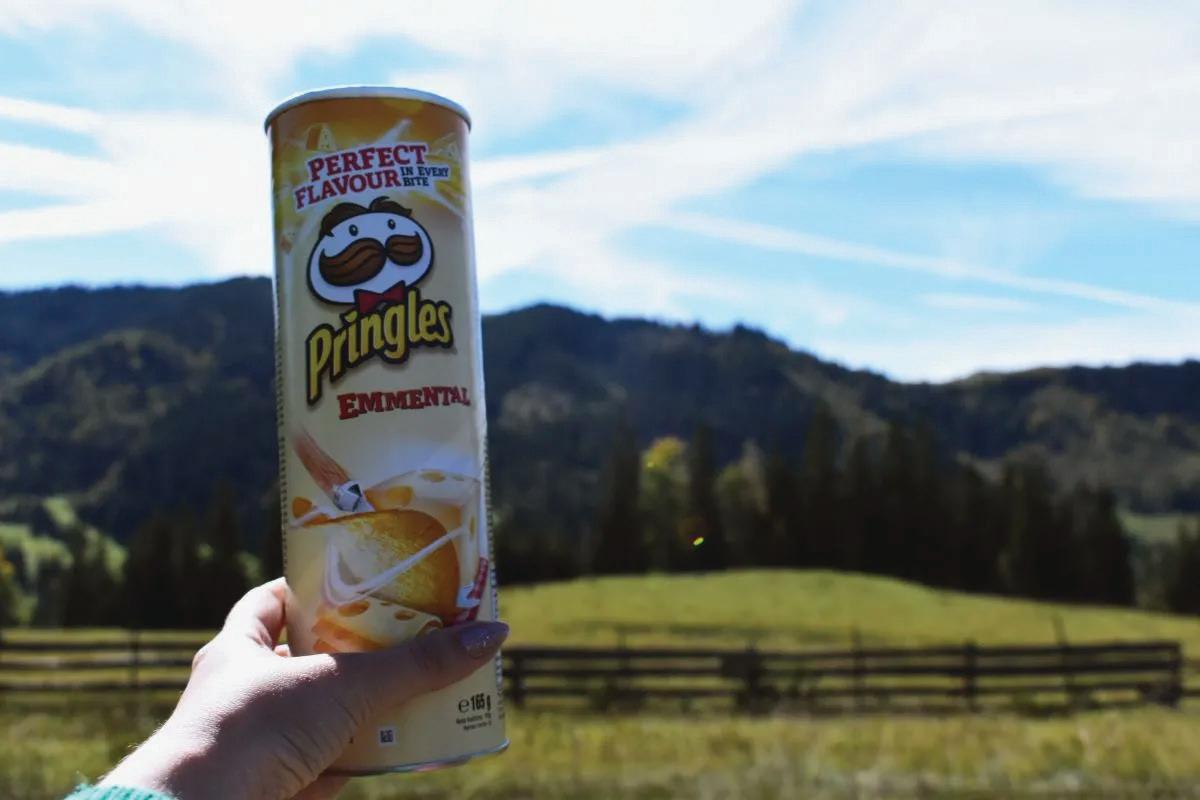
For the first time, Peroni Nastro Azzurro has launched its first alcohol-free beer flavours in the Romania.
Americans rank Cheez-It and Pringles among their top favourite snack brands for summer road trips.
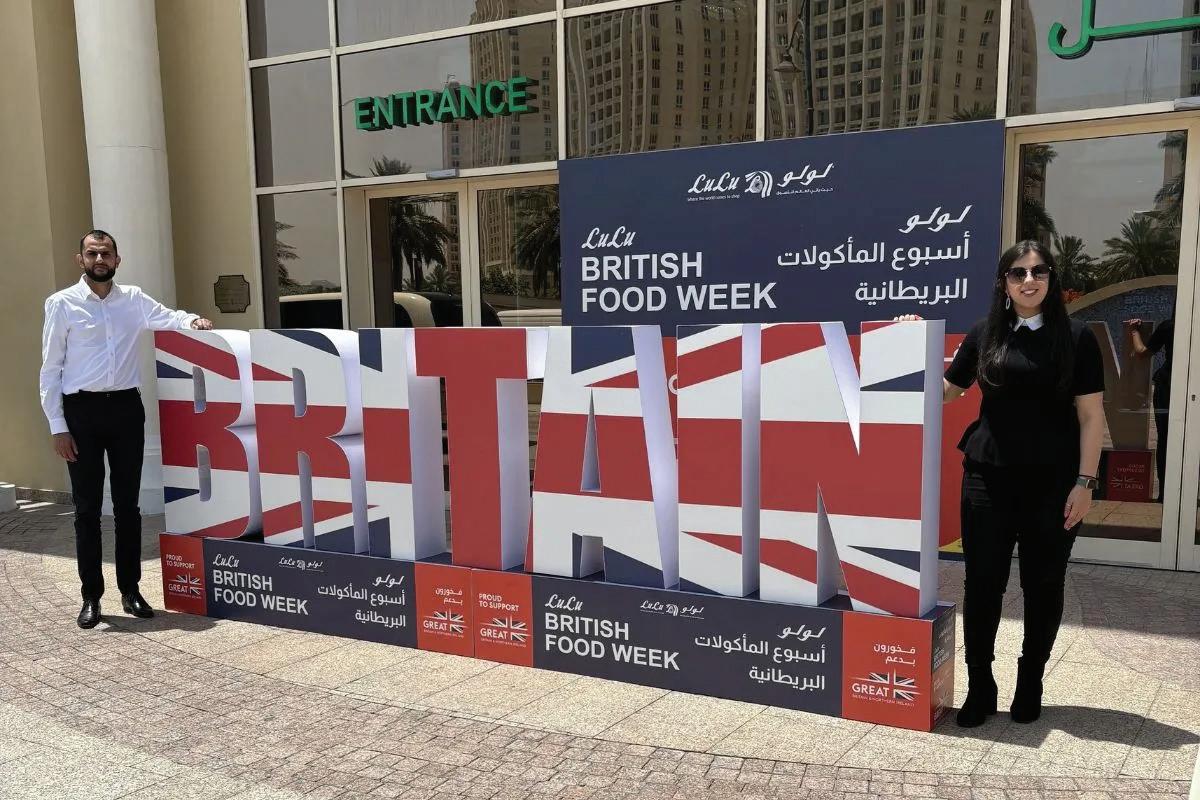
Morrisons has further strengthened its international presence by participating in the British Food Festival in Qatar, hosted by leading regional retailer Lulu Retail Group.

The Co-operative Group (‘Co-op’) has partnered with VusionGroup to replace paper shelf edge labels in store with electronic shelf edge labels.
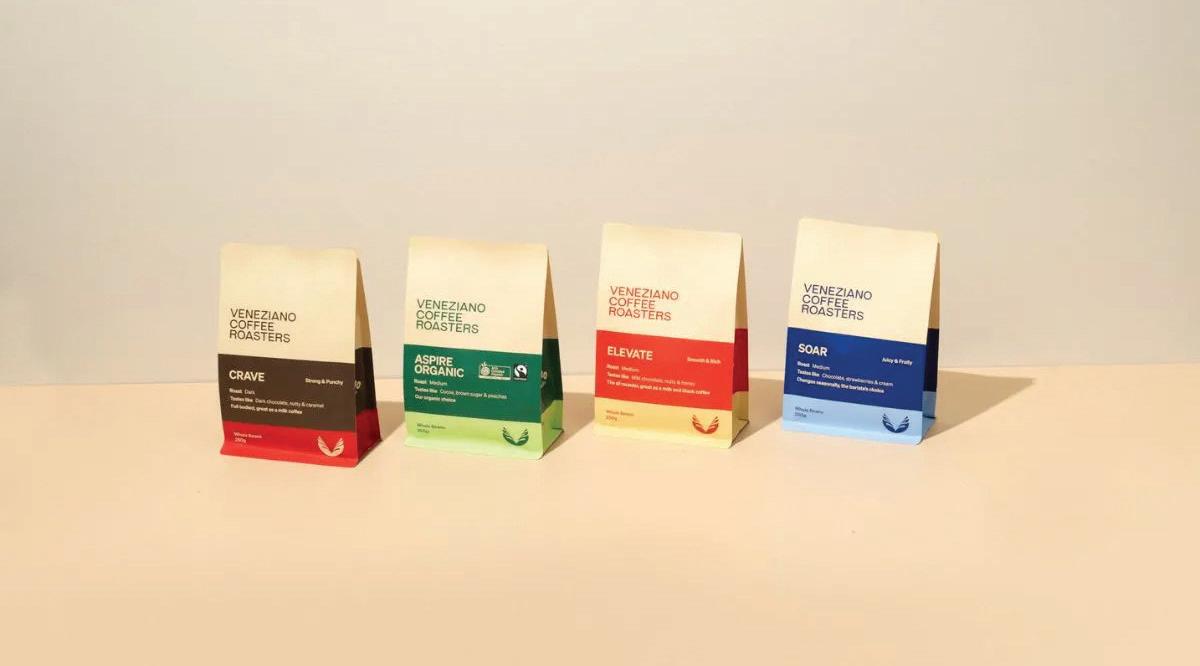

Lee Kum Kee, Australia’s favourite Asian sauces and condiments brand, has continued its sponsorship and ongoing presence with MasterChef Australia.
Confusing food labels are driving Australians to throw away perfectly edible food, costing households money and contributing to the nation’s food waste problem.





Hong Kong serves as a promising platform for global food importers and distributors to extend their reach into markets across Mainland China and the broader Asian region.
Food Expo PRO aims to strengthen Hong Kong's position as a business hub for the food industry in Mainland China, Asia, and the world. It provides a one-stop business platform that helps F&B industry players explore opportunities, build connections and foster innovation.
This year, the Expo continues to present pavilions from various countries and regions. Besides pavilions from Mainland China, Japan, Korea, and Poland, ASEAN countries such as Thailand, the Philippines, and Vietnam will also participate, showcasing international culinary excellence.
As a pioneer in the food and beverage (F&B) industry, the Expo has consistently monitored several key trends and
innovations to capture the evolving dynamics of the food industry.
Highlighted zone "Food Science and Technology" brings alternative food and future food products to our professional buyers.
The Hong Kong Food Science and Technology Association will lead a group of Hong Kong companies to showcase their food-tech and packaging products and solutions. To capture the opportunities presented by the silver economy, products such as soft meals and supplements will also be featured in the zone.
Recognising the promising landscape of the Halal Market, the Expo introduced a dedicated Halal food and beverage label last year. This year, around 100 exhibitors will feature the label, showcasing a diverse
range of Halal-certified products, including snacks, condiments, and seafood.
To better promote the potential of the halal food sector, the events will delve deeper into the halal food landscape in Hong Kong.
The Kowloon Shangri-La Hotel, a 5-star Halal Friendly Hotel by Crescent Rating, will share insights on how it creates an exceptional halal culinary experience for Muslim guests. Additionally, the event will partner with The Incorporated Trustees of the Islamic Community Fund of Hong Kong to present halal certificates to local restaurants.
With the evolving coffee culture and growing demand for coffee worldwide, a new Coffee Zone will be launched at the fair to reinforce Hong Kong’s role as a gateway

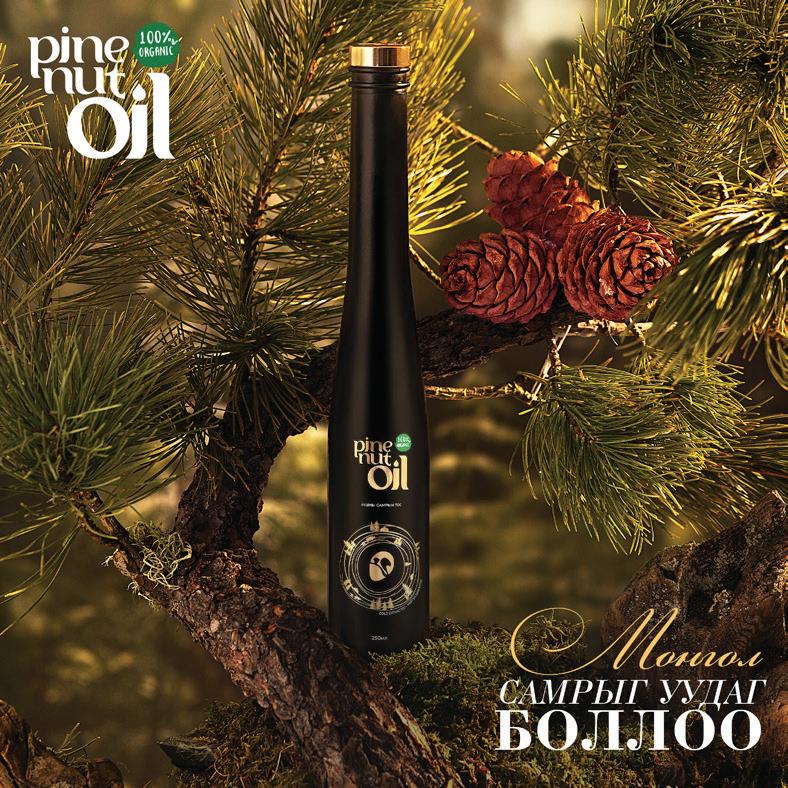

to the booming Mainland China and ASEAN markets.
Food Expo PRO also features a variety of seminars and forums covering the latest developments and market opportunities in the food industry. The Food Tech Symposium will focus on promoting nonadditive foods and establishing a “Clean Label” standard in Hong Kong. The event will also explore the progress of additivefree food development in the Greater Bay Area and invite local food manufacturers to share their practical experiences, aiming to advance the “Clean Label” initiative in Hong Kong.
The concurrent Hong Kong International Tea Fair brings together a diverse range of products, including tea, tea-related items, and tea ware. The International Tea Event Space Design Competition 2025 aims to promote the culture of tea. Participants can present their creative tea-serving space designs through the competition, and the shortlisted designs will be displayed and judged during the fair.
Another fair highlight is the Hong Kong International Tea Competition. Exhibitors’ teas will be judged in six categories: Green Tea, Oolong Tea, Black Tea, Chinese Black
Tea, Raw Pu’er, and Others. The entries will also compete for “The Best Aroma Award” and “The Best Taste Award”.
Each day at the fair is filled with a variety of activities and events. The 2nd Hong Kong International Tea Culture Forum and the 1st Tea Culture and Tourism Benchmark City (Enterprise) Brand Ceremony will be held to create an international platform for communication, promote tea culture, and drive the international development of the tea industry.
The National and Greater Bay Area KamCha Competition – (Hong Kong Milk Tea) Hong Kong Final will be held during the Hong Kong International Tea Fair, aiming to select the top Hong Kong-style milk tea masters, showcase the skills and unique flavours of Hong Kong-style milk tea production, and promote Hong Kongstyle milk tea culture.
Other events, such as the 1st GuangdongHong Kong-Macau Youth International Tea Art Competition 2025, Tea Tasting Sessions, and Tea Art Performances, offer an immersive exploration of tea’s rich history and latest trends.
The two fairs will continue to adopt the HKTDC’s EXHIBITION+ model that
integrates online and offline elements, extending face-to-face interactions from physical events to the smart business platform, Click2Match.
In addition, the International Conference of the Modernisation of Chinese Medicine and Health Products (ICMCM), organised by the Modernised Chinese Medicine International Association (MCMIA), together with the HKTDC and ten scientific research institutions and industry associations, will be held at the Hong Kong Exhibition and Convention Centre.
Organised by the Hong Kong Trade Development Council (HKTDC), the Food Expo PRO and the Hong Kong International Tea Fair will be staged concurrently from the 14th to the 16th of August 2025, at the Hong Kong Convention and Exhibition Centre. n







SUPERFRUIT
PAPAYA FROZEN
Amazonia
Indulge in the vibrant colours and flavours of wild-grown exotic fruit. Amazonia Red Papaya is harvested at peak ripeness and snap-frozen for maximum flavour and nutrients. Packed with Vitamin C, these convenient and versatile papaya chunks are ideal for smoothies, desserts and toppings.
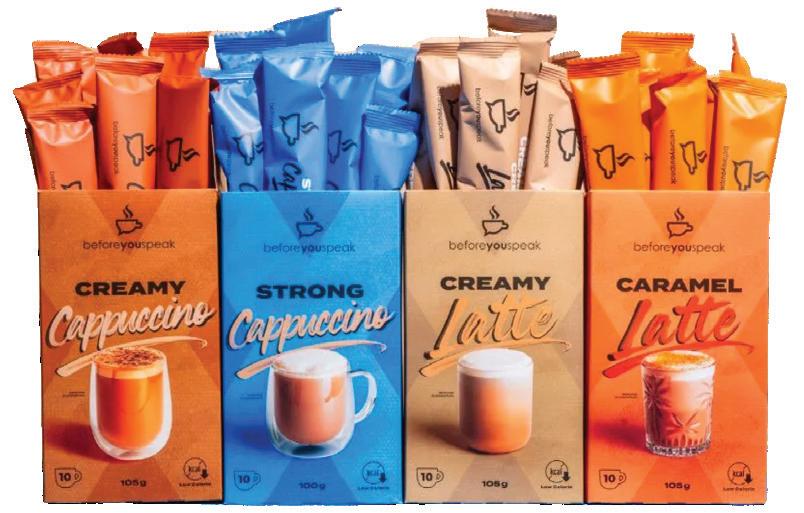
Beforeyouspeak
Australian performance coffee brand Beforeyouspeak is expanding its portfolio with the launch of its Instant Latte Range. Beforeyouspeak has brought smooth, café-style


coffee to your daily routine in seconds. Available exclusively at Woolworths, the new range blends indulgence, quality, and convenience like never before, without ever compromising on quality.
OMO QUICKWASH LAUNDRY LIQUID ODOUR REFRESH OMO
OMO Expert Wonder Wash Odour Refresh is specially designed for quick cycles, even in just 15 minutes. This detergent uses a unique Pro-S technology to blast away sweaty odours, leaving your clothes wonderfully fresh. Perfect for active wear that needs a quick refresh, this product features an extraordinary fragrance that will leave clothes smelling amazing every time.
SOLO
Australia’s most iconic and original thirst-crusher is stepping into a new era. SOLO has launched a brand-new drink, SOLO Energy, a fresh spin on its iconic lemon flavour, now with guarana, caffeine, and B vitamins.
For over 50 years, SOLO has been Australia’s go-to lemon flavoured soft drink – shared at family BBQs, crushing thirsts during halftime, and cracked open on scorching summer days. But now, the thirst-crusher is energised.
Nescafé x Swoon
NESCAFÉ has hacked iced espresso routines with its new Espresso Concentrate to create a bold summer drink combo: Espresso Lemonade.
Tapping into Gen Z’s obsession with trendy coffee drinks, like
the unexpected iced coffee and lemonade pairing that has seen more than 91M+ posts on TikTok, NESCAFÉ and SWOON, the zerosugar beverage brand, are delivering a DIY café-style drink that’s easy to make and impossible to forget.

FRYER RANGE
Nestlé
As the air fryer continues to gain popularity in more kitchens around the world, Nestlé has expanded its range of recipe mixes, meals, and seasonings to support modern cooking.
The company has launched several air fryercompatible products throughout North and South America, making it easy for people to enjoy more delicious meal moments.
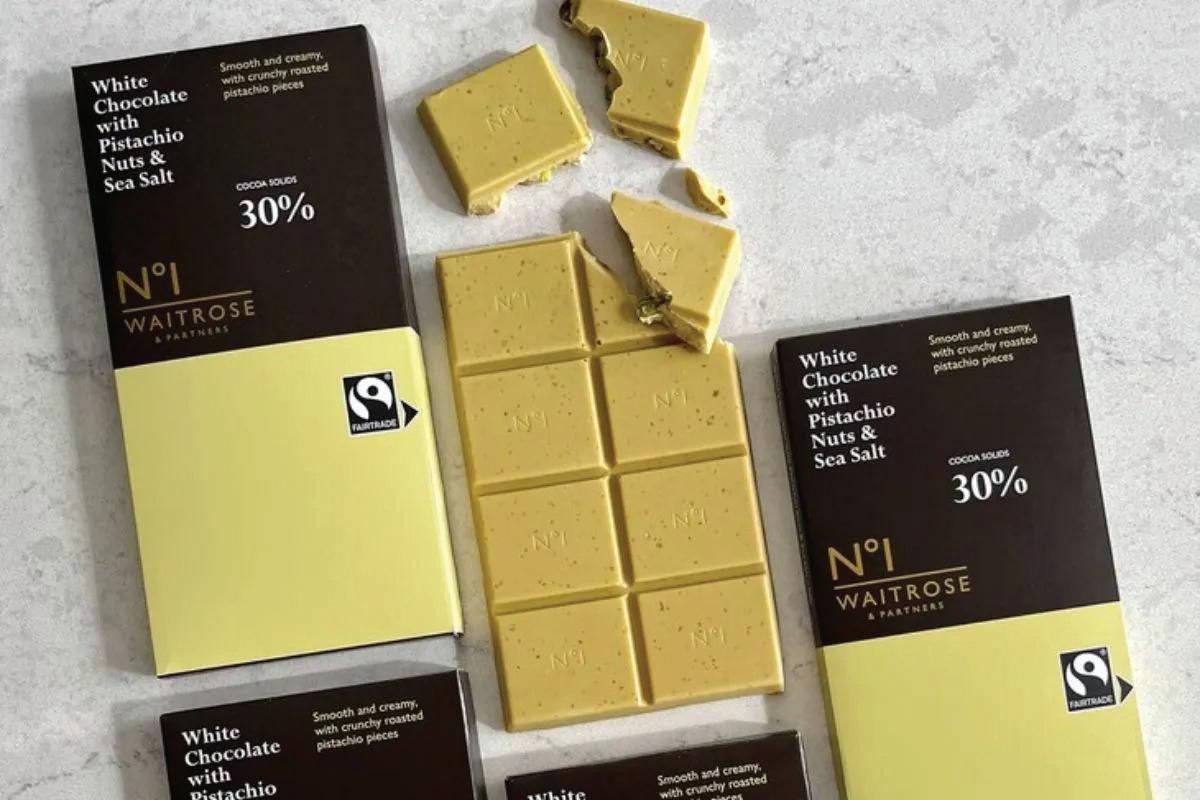

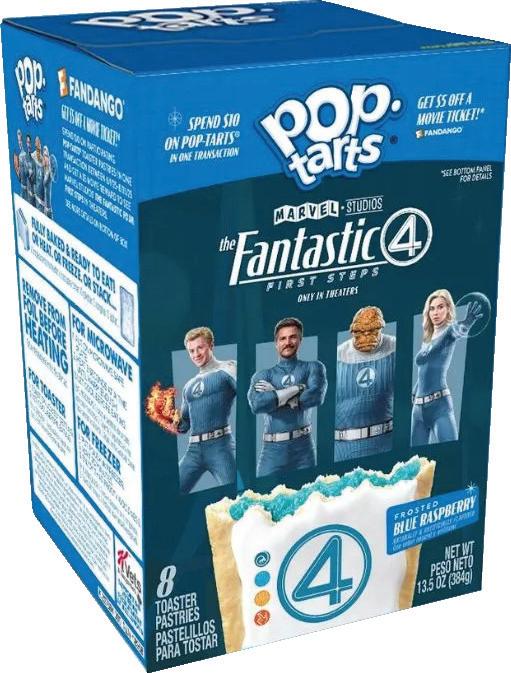
Pop-Tarts
In 1963, Pop-Tarts changed the world forever with its groundbreaking take on the classic toast and jam. Now, Pop-Tarts is earning its place as a snack superhero.
The toaster pastry lineup, inspired by Marvel Studios' The Fantastic Four: First Steps, will give fans a snacking experience that takes their taste buds on a nostalgic journey.
Waitrose
The whole world has gone absolutely nuts for pistachio.
In March 2025, Waitrose was one of the first stockists of the Lindt Dubai Style Chocolate Bar, which was in such high demand that the retailer had to enforce a limit of two bars per customer.
Customers' appetite for
pistachios showed no sign of slowing down, with searches for ‘pistachio’ over 500 percent year on year. With the market flooded with variations of ‘Dubai style’ chocolate bars, Waitrose has launched a twist on the hottest chocolate bar on the market.




With 139 stores across the country, Sri Lankan supermarket chain Keells has seen significant growth and innovation in the prepared food category.
As consumer lifestyles shift toward convenience, variety, and healthier choices, Keells has reimagined this space, not only in terms of product development but also in how it presents, positions, and delivers its offerings.
Its strategy focuses on three core areas:
• Product innovation: In the ready-to-eat space, Keells identified clear customer favourites and focused on elevating these hero products through enhanced quality, improved taste, and stronger merchandising. This approach has strengthened its core offering and laid the foundation for building a world-class retail food experience.
• In-store experience: Keells has upgraded its prepared food areas to be more accessible, engaging, and visually appealing. Strategic placement near high-traffic zones, along with live counters for select offerings, helps drive interest and conversion.
• Omni-channel integration: Keells has also developed its prepared food portfolio for online platforms and quick commerce, ensuring the same quality and freshness reaches customers wherever they are.
The range of prepared foods continues to evolve. Keells has expanded its instant noodle range inspired by Korean flavours, enhanced its pasta and sauce offerings, and introduced seasonings that allow customers to recreate Indian, Chinese, Korean, and Malaysian cuisines at home.
To support faster service, the chain has rolled out self-weighing machines and selfcheckouts, and is integrating innovative
technology to meet the needs of timeconscious customers.
The business has also refined product placement in high-traffic areas, upgraded packaging for stronger shelf presence, and improved presentation to boost visibility and impulse purchases.
Close collaboration with store teams ensures consistent execution and reinforces the role of prepared foods as a key part of the customer journey. Team culture is built on values of caring, integrity, excellence, and innovation - principles that guide daily interactions with customers, stakeholders, and one another.
What truly sets Keells apart is the team’s passion for its core purpose: improving the quality of life for the nation. The business fosters a culture of continuous improvement, embracing new ideas, supporting team growth, and seeking more efficient ways to serve its communities. Supporting local farmers has also been a foundational aspect of Keells’ fresh food strategy.
Through the Keells Govidiri initiative, the company partners directly with over 3,000 farmers across Sri Lanka. This model ensures consistent, high-quality local produce for stores while offering farmers fair and transparent pricing.
Beyond procurement, Keells invests in capacity building, providing training in best practices, seed inputs, agricultural extension services, and climate-resilient techniques. Infrastructure upgrades at its collection centres further reduce post-harvest losses and improve farmer income.
Keells has been a proud part of the lives of Sri Lankans, delivering quality, freshness, and value every day for over three decades. n


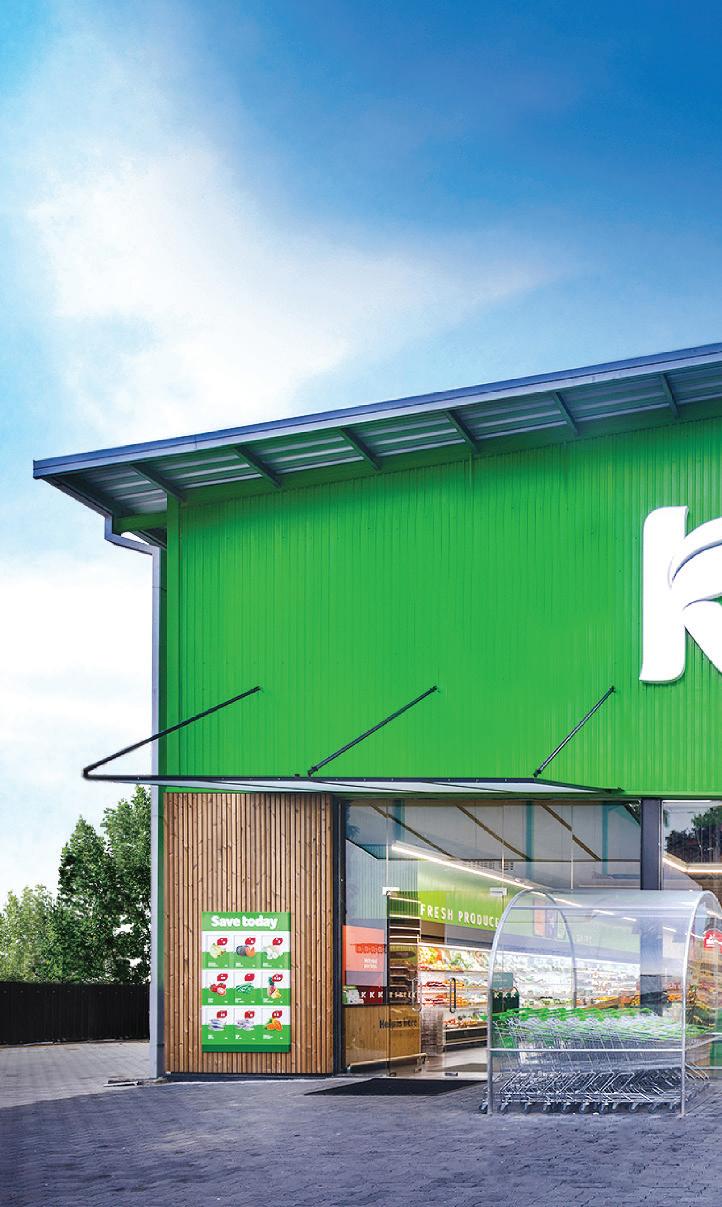


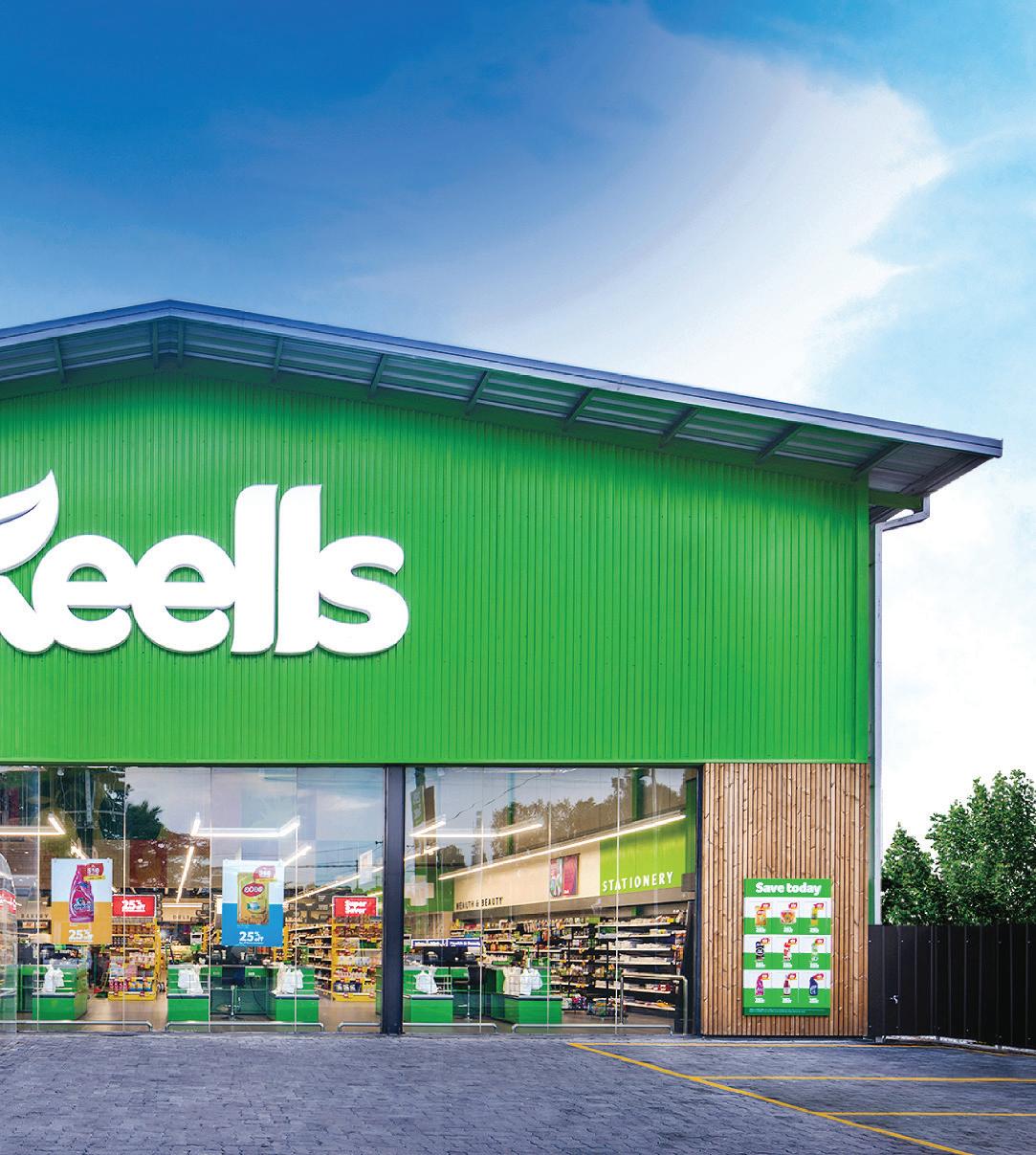






Are you heading to New York this year? Make time to visit Hell’s Kitchen, where Whole Foods Market has just opened its latest Daily Shop, a growing concept that is reshaping the grocery retail landscape.



Located at 301 West 50th Street, this is the third smaller-format Daily Shop launched by Whole Foods in New York. At just 8,500 square feet, the store is designed for speed and convenience, targeting urban shoppers with a curated mix of grab-and-go meals, fresh produce and over 400 locally sourced products. It is a smart, high-efficiency model built around dense foot traffic, commuter flow and neighbourhood-specific range planning.
Store team leader Joel Jimenez described the location as “dynamic”, surrounded by entertainment venues and top restaurants, making it an ideal testbed for Whole
Foods’ strategy of localised, agile retail. The store caters to both residents and the workday crowd, positioning itself as a goto for quick lunches, after-work top-ups or pre-theatre meals.
To support its community integration strategy, the Hell’s Kitchen opening included product donations to a local food pantry, support for the Hell’s Kitchen Farm Project, and a generous launch activation with limited-edition tote bags and breakfast samples for early customers.
This latest Daily Shop follows successful openings on the Upper East Side and in the East Village, with new sites planned in Brooklyn, Hoboken, and Arlington. It
is a clear signal that Whole Foods, under Amazon’s ownership, is actively diversifying its format portfolio to meet evolving consumer behaviours in dense urban markets. For retail buyers, developers and suppliers, the Hell’s Kitchen Daily Shop offers insight into how one of the world’s most recognised premium grocery brands is adapting to the future of urban food retail: small, swift and hyper-local. n






7-Eleven has continually evolved to become “my convenient neighbourhood store” for all Australians, a place customers can count on for great value, quality, and ease, especially when it comes to food.
The biggest shift they have observed has been in customer expectations around convenience food. Shoppers now want more choice, whether it’s fresh and healthy, indulgent, plant-based, or something fast and filling for now or later.
To meet this changing demand, 7-Eleven has expanded its food offering to include better-for-you snacks, high-quality ready meals, new formats and cuisines, and freshly ground coffee that consistently delivers great taste and affordability.
“It’s not just about what customers want to eat; it’s about how, when, and where they want it. We're designing our offer to meet the many different moments in our customers' lives, from the school run to the night shift,” said a 7-Eleven Australia spokesperson.
“The future of food is flexible, fast, and full of choice, and that’s exactly where we’re heading.”
Australians are expecting more from their local convenience stores. Today, convenience
goes beyond just location; it’s about saving time, delivering value, offering choice, and creating a great customer experience.
With cost-of-living pressures continuing to impact many households, the need to provide high-quality, affordable options has never been more important. There is growing demand for healthier food choices, greater personalisation, and seamless digital experiences.
7-Eleven has invested in what matters most to its customers, from value-driven food and coffee offers to innovative store formats and a digital ecosystem that makes shopping fast, easy, and rewarding.
“We’re proud to have stores that feel truly local; places where customers are known by name, and their coffee or snack preferences are remembered.”
At the same time, its new global ownership, anchored in Japan and backed by the strength of the 7-Eleven brand, enables it to bring world-class innovation and insights from markets like the US and Japan, and tailor them to meet the unique needs of Australian customers.
“It’s local relevance, powered by global scale.”
The 7-Eleven store network includes a mix of franchised and corporate-owned
stores, united by a deep connection to the community.
Store leaders, whether franchisees or corporate team members, play a powerful role in their neighbourhoods. They know their customers by name, their go-to coffee, the newspaper they pick up, or the sweet treat they grab with their morning fuel.
That local insight, when combined with the strength and support of a national brand, its supply chain, innovation capability, training programs, and marketing, helps deliver consistency and value at scale.
“It’s a balance between structure and personalisation, with people at the heart of it. Our goal is simple: to deliver great value and convenience while staying true to the local communities we serve.”
From AI-driven inventory tools that ensure shelves are stocked with what local customers want, to the My 7-Eleven app offering personalised deals and rewards, technology is helping to make the experience faster, easier, and more relevant.
Frictionless retail has been a cornerstone of 7-Eleven Australia’s innovation strategy. Customers also expect convenience in their shopping experience, and the company has invested in self-checkout, digital payments, and AI systems to simplify and streamline the process.
Yet it’s not just about speed; it’s also about freeing up store teams to do what they do best: connect with customers. By using technology to streamline back-end systems and operations, team members can focus more on delivering a personalised, friendly service that makes a difference.
“Ultimately, these investments are about making life easier for our people and our customers.”
Looking ahead, 7-Eleven’s focus remains firmly on serving Australians by expanding its food and digital offerings and modernising its store network. Being a global brand with international ownership brings opportunities to share insights, scale innovation, and think globally.
“While there are no immediate plans for expansion into New Zealand that we can share, we never say never. The global 7-Eleven network is constantly evolving, and if the right conditions emerge, such as strong local demand, a clear customer need, and an opportunity to deliver something unique, anything is possible.” n

Vaping law changes have taken effect with a ban on disposable vapes.
Associate Health Minister Casey Costello said this will make a noticeable difference to shop fronts and the marketing of vaping products.
“This coalition Government committed to tackling youth vaping, and we’ve made practical changes to reduce the appeal of vaping to young people and to target retailers who sell vapes and tobacco products to our youth,” said Costello.
“These changes implement the final parts of legislation passed in December. Disposable vapes, which have been the most popular products among young people, are now off the market.”
Penalties for breaching the ban are up to NZD 400,000 for a manufacturer, importer or large retailer, and NZD 50,000 for any other person.
Visibility restrictions also take effect,
which will change the way specialist vape stores look and mean that retailers like dairies, supermarkets and petrol stations need to have vape products out of sight.
Similarly, online stores will no longer be able to include images of vape products and New Zealand-based online stores are prevented from linking to overseas sites that have images of vaping products.
The Smokefree Environments and Regulated Products Amendment Bill (No 2) that was passed in December had four main components:
• Banning the manufacture, sale, supply, and distribution of disposable vapes
• Increasing penalties for unlawful sales of vapes, cigarettes and other regulated products to minors
• Imposing retail visibility restrictions for vaping products
• Adding further proximity restrictions for specialist vape retailers.
• The increased penalties for selling vapes to minors, and restrictions on where specialist vape stores can open took effect at the time.
• The commencement of the disposable vape ban and the retail visibility restrictions were delayed six months to allow time for businesses to prepare for the changes.
This also allowed for the recruitment and training of more dedicated smokefree enforcement officers – there are now 18so that the new rules and tougher penalties are supported by greater enforcement capability.
“For too long, New Zealand didn’t have vaping regulations in place. Vaping has played a key role in helping people quit smoking, and we want vapes available to adults as a cessation tool, but vaping isn’t for children and young people, and that’s why the Government has taken action.” n




Australia’s peak retail advocacy group has called on the Federal Government to adopt a similar tobacco and smoking cessation strategy to New Zealand.
Regulating the sale of strictly manufactured vapes and smoking cessation products by retailers can get more Australians to quit smoking.
Australian Association of Convenience Stores (AACS) CEO Theo Foukkare congratulated Minister Costello and the New Zealand Government on their success in achieving a significant drop in the number of daily smokers and deterring youth from taking up smoking and vaping.
He also renewed calls for Australian lawmakers to follow suit urgently.
“The Kiwis have taken the adult approach to this, and it has worked,” he said.
New Zealand’s government policy strictly regulates the sale of nicotine vapes and other smoking cessation products by retailers.
“New Zealand has control over vapes and
who buys them because its government has seen the global evidence and actually recognised that allowing retailers to sell strictly regulated vapes to adults – where lolly flavours and single use devices are banned – does help adult smokers quit tobacco, and deters young people from taking up smoking and vaping altogether.”
Foukkare said the Albanese Government’s prohibition on vape sales by retailers in Australia had fuelled the deadly black market wars that have exploded across the nation over recent years.
“It’s safe to be a genuine, law-abiding retailer in New Zealand who sells government approved tobacco and nicotine vapes– but it’s bloody terrifying for our members in Australia, who are at the mercy of criminal gangs that threaten to, and often do, fire bomb their stores if they don’t sell dodgy, illegal vapes and illicit tobacco for them,” Foukkare added.
“When will the Australian Federal Government finally realise it has failed on
community health and safety, and failed retailers by putting their safety at risk, while sending their businesses broke because it is marrying itself to its failed vape and tobacco excise policy?”
“When will Prime Minister Anthony Albanese and Health Minister Mark Butler finally see that constantly jacking up the taxes on illicit tobacco is directly sending Aussie adult smokers to the black market and handing billions of dollars to organised crime and giving even more power to these dangerous crime groups?”
Foukkare said it was time to burst the ideological bubble and face up to the hard facts.
AACS has been advocating for Australia to follow a similar path to New Zealand's policy for years, and during that time, crime rates have increased. Law-abiding retailers have run out of business, while adult Australians are giving up legal, regulated tobacco for illicit cigarettes and illegal vapes. n


One of Australasia’s most established food manufacturers has unveiled its new name: The Kitchenary.
Formerly part of the Beak & Johnston group, B&J The Kitchen brings together some of Australia’s most recognised convenience food brands (including Strength Meals Co, Simmone Logue, Pasta Master and Artisano) under one futurefocused identity.
Launched at the company’s flagship production site in Arndell Park, Western Sydney, the move marked a confident step forward for a business built on over 35 years of category leadership. That legacy began with its origins as part of Beak & Johnston, a name synonymous with innovation in Australian fresh food manufacturing.
Beak & Johnston will continue to operate and produce high-quality slow-cooked meats at their Greenacre facility, while B&J The Kitchen (Arndell Park) and B&J New Zealand will transition to The Kitchenary.
Over the past decade, the Arndell Park business has evolved into what is now
The Kitchenary: a modern food solutions provider producing more than 800,000 chilled and frozen meals each week across Australia and New Zealand.
Now 100 percent owned by Woolworths, The Kitchenary (previously B&J The Kitchen) operates as part of the retail group’s long-term investment in local food manufacturing. The change reflects a
continued focus on capability, consistency and culinary innovation.
“The name ‘The Kitchenary’ reflects our passion for food, creativity and craftsmanship,” said Ray Hanly, CEO of The Kitchenary.
“It’s a fresh identity that better represents who we are today, and where we’re heading, while staying true to the quality and values that built our reputation.”
While the name may be new, the fundamentals of the business remain unchanged. The Kitchenary continues to deliver high-quality meal solutions for leading retailers and foodservice partners, supported by a team whose combined expertise spans decades.
Many employees have been part of the business for over 25 years, combining deep operational knowledge with fresh thinking to drive consistent performance and innovation.
“Our people are what make this business exceptional. The new name reflects the energy and professionalism they bring to the table every day.”
Operating out of the company’s Arndell Park facility, the largest ready meal manufacturing site in the Southern Hemisphere, The Kitchenary leverages worldclass infrastructure and highly automated.
Prepared on behalf of The Kitchenary by Missy Mischief Creative. production systems. Its capabilities include advanced lines for lasagne and pastry, underpinned by a strong culture of quality, efficiency and food safety.
“The scale and complexity of our operations often go unseen, but they’re absolutely central to our ability to deliver consistent, high-quality meals. From our lasagne lines to our pastry production, our team brings deep expertise and an unwavering commitment to food quality and safety.”
The Kitchenary’s new identity also represents a clear platform for future growth. Investment is already underway across expanded capabilities, proprietary product development, and deeper customer alignment across Australia and New Zealand.
“This is more than a name change. It’s a launchpad for what’s next. With the strength of our brands, our people and the backing of Woolworths, we’re well placed to lead the next chapter in Australian food manufacturing.”
The official launch was marked by a company-wide celebration at Arndell Park, where staff gathered to unveil new signage, uniforms and internal branding. Leadership addressed the team with reflections on the business’s journey to date and its vision for the future.
As The Kitchenary begins its next chapter, the focus is firmly on delivering food solutions that meet modern consumer expectations, combining scale with creativity, consistency with care and everyday convenience with a commitment to culinary excellence. n




